August 19th to 26th
We arrived at Port Moresby airport not sure what to expect. We bought a sim card and took money out and managed to arrange for our hotel’s taxi to pick us up.
The hotel was accessed through steel gates, it was a taste of luxury which we were sure wouldn’t last into the week. However, it was nice while it lasted. Through a combination of cards here and at the airport we managed to get the amount of currency recommended. We had been advised not to leave the hotel at it was too dangerous.
Next morning we were up at 5am for a taxi back to the airport and check in ready to fly to Buka in Bougainville. There we awaited the rest of our group who had already been in Papua New Guinea for a week and were flying in ready to connect with our flight.
The airport is very small. One waiting room and then we walked through to our gate outside, as below.
Buka is on the northern island of Bougainville now the capital of the Autonomous Region of Bougainville, after Arawa the original capital, was too heavily damaged during the 1980s–90s civil conflict to remain the administrative centre.
The airport there was even smaller than Port Moresby with a tiny hut as the terminal.
On arrival we received a warm Bougainville welcome; plant garlands and a traditional hand-wash. We then checked into Destiny Guest House, where lunch of fries, greens and fish was waiting.
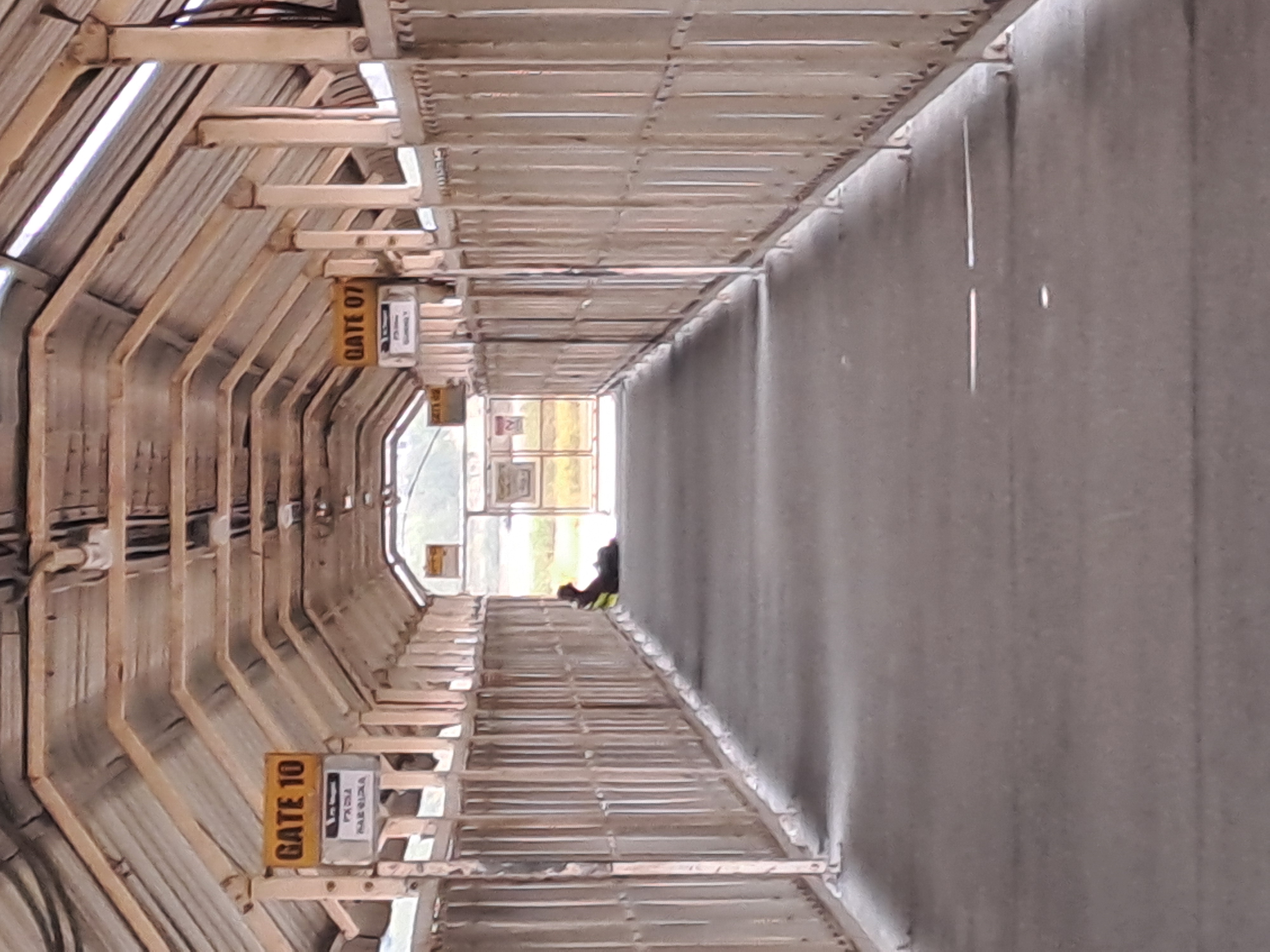

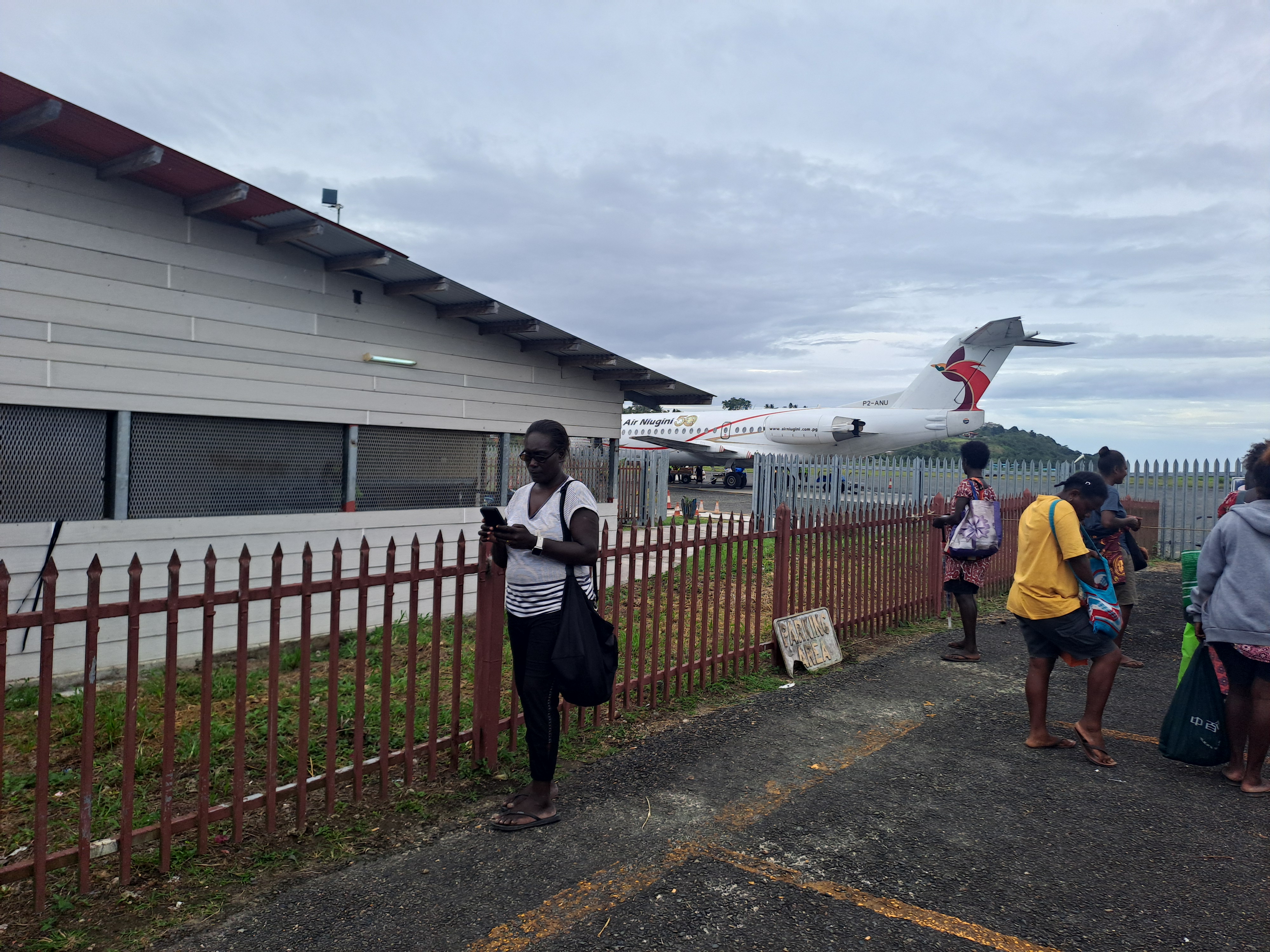

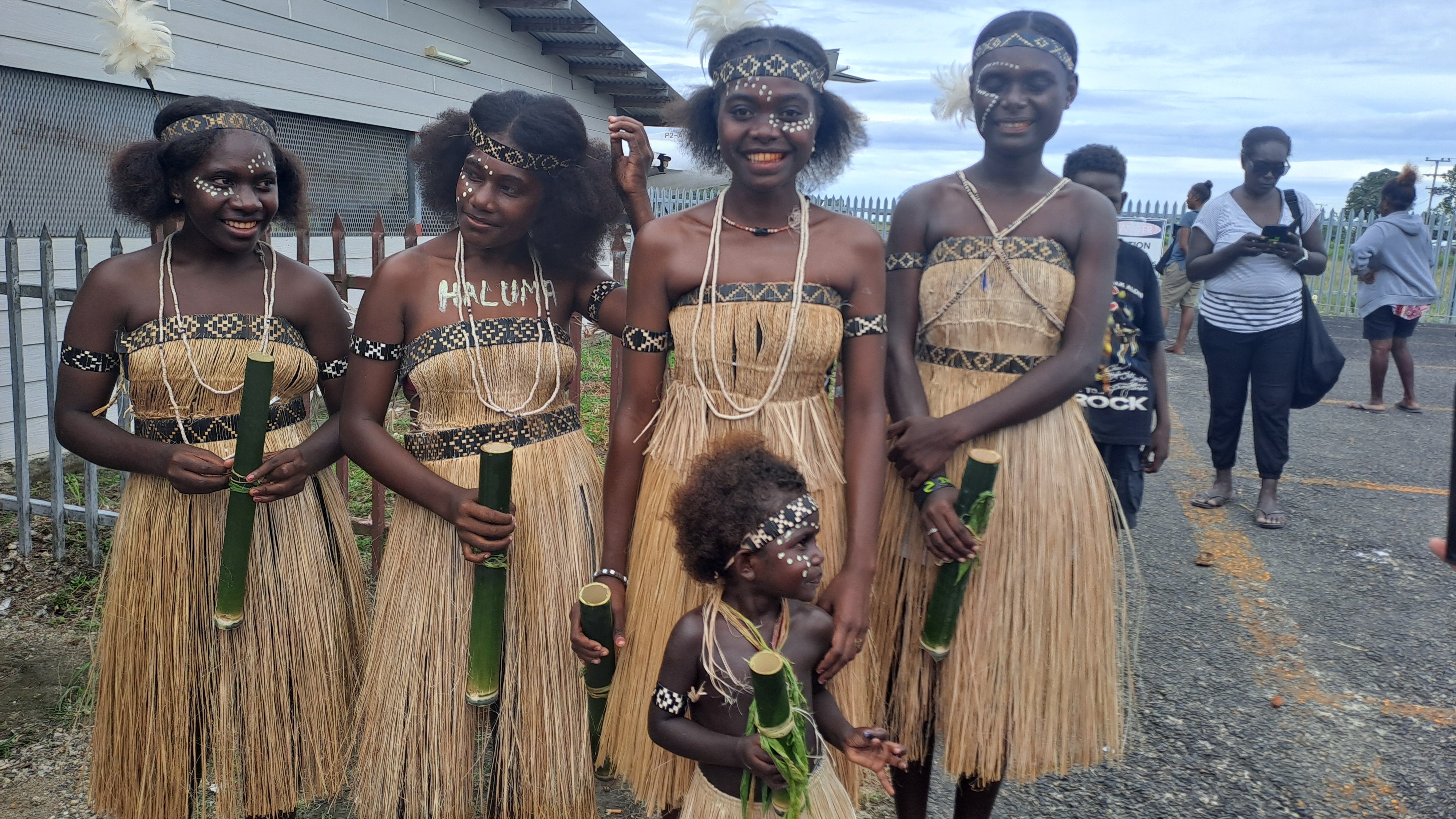

Here we noticed along side the no smoking signs no betal nut signs. This is an addiction prevelant in parts of south Asia. A stimulant that leaves the mouth and teeth bright red and when the debris is spat out bright red stains on the ground.
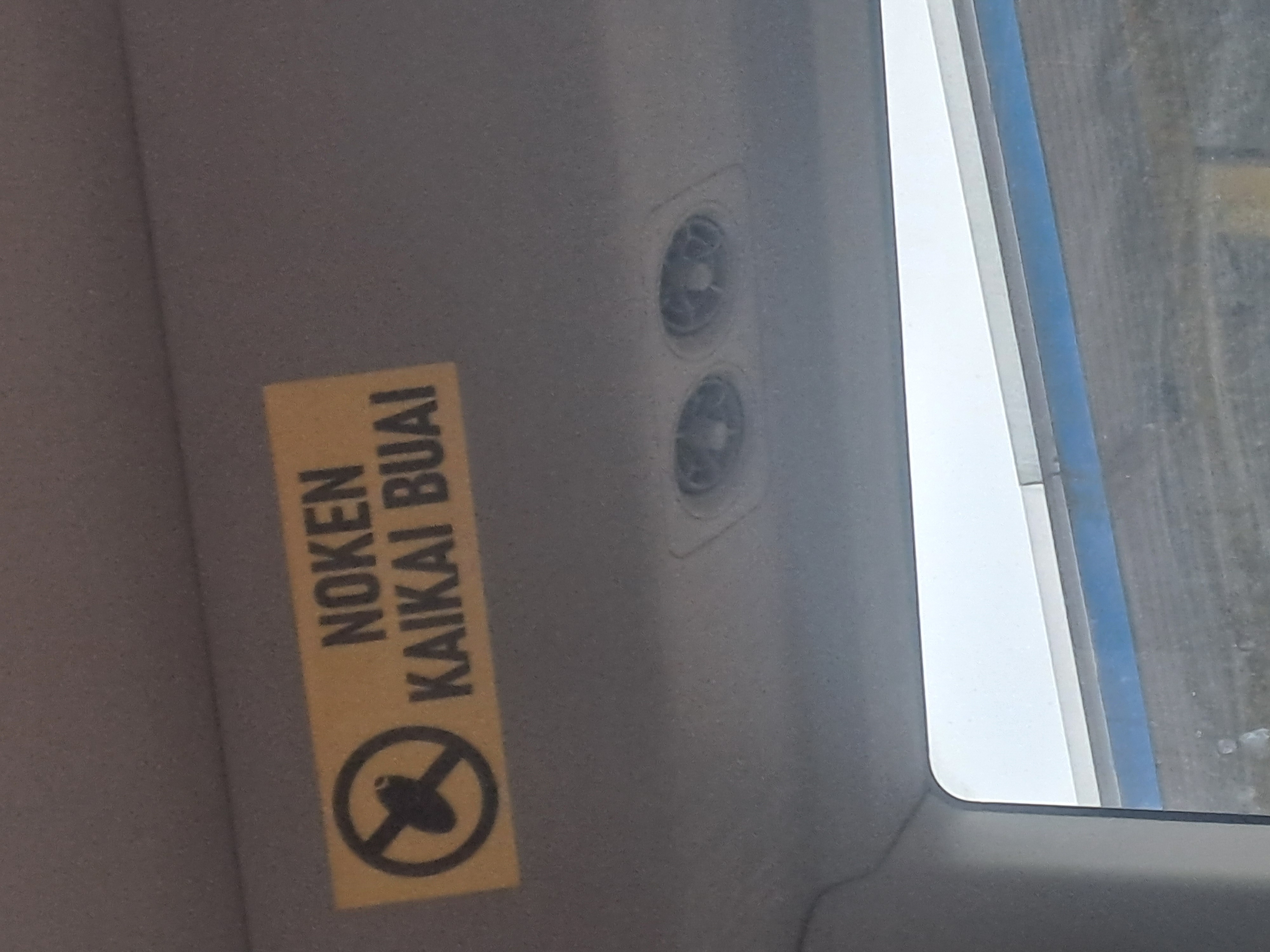
In the afternoon we drove to Hangan Village, where the community hosted a mini cultural show. We saw traditional singing and dancing, backed by the Black Dot Band on bamboo drums, named because Bougainville looks like a “black dot” on the map. The booming bamboo rhythms were amazing, and they even performed an instrumental version of The Final Countdown!


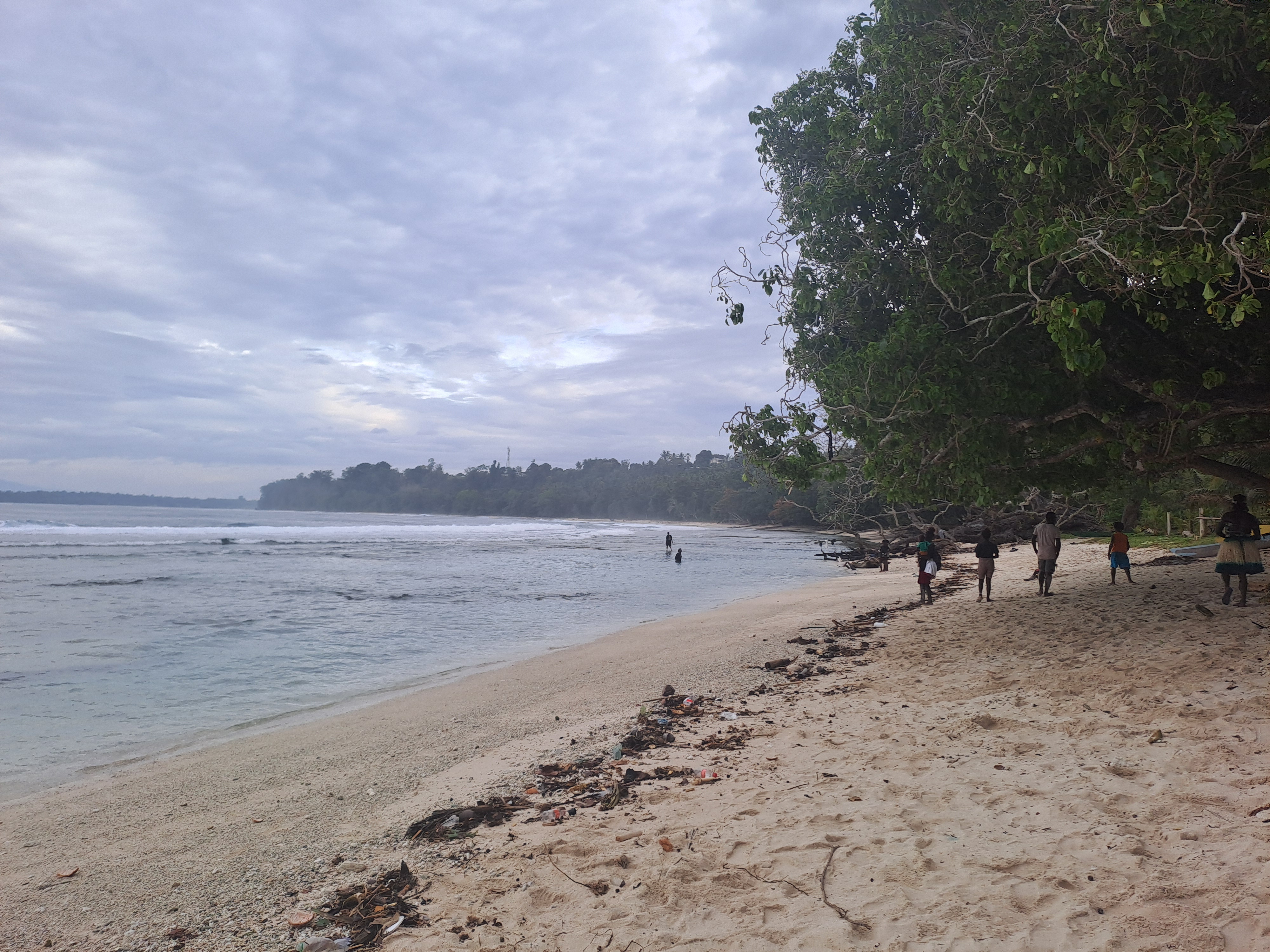
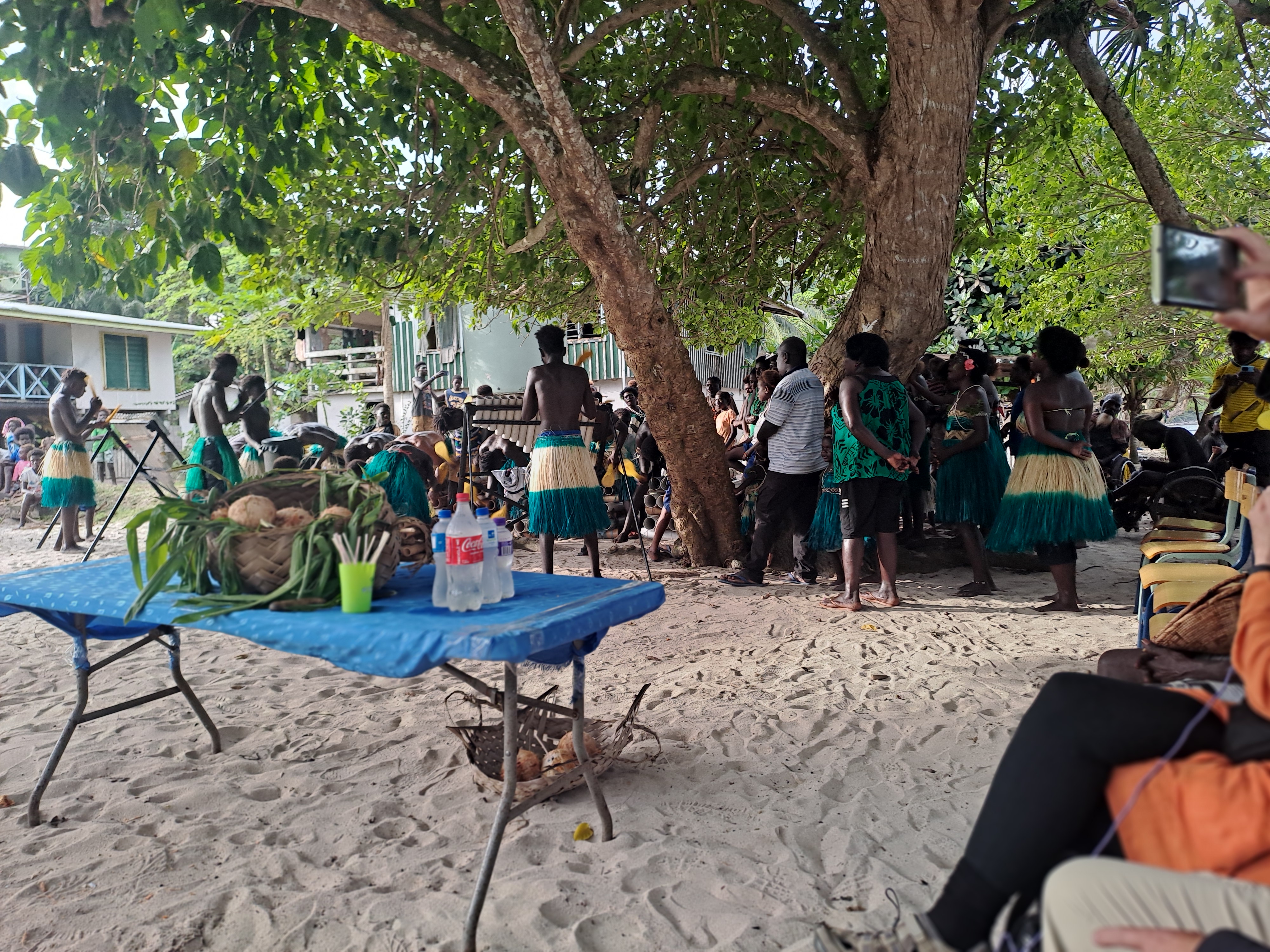
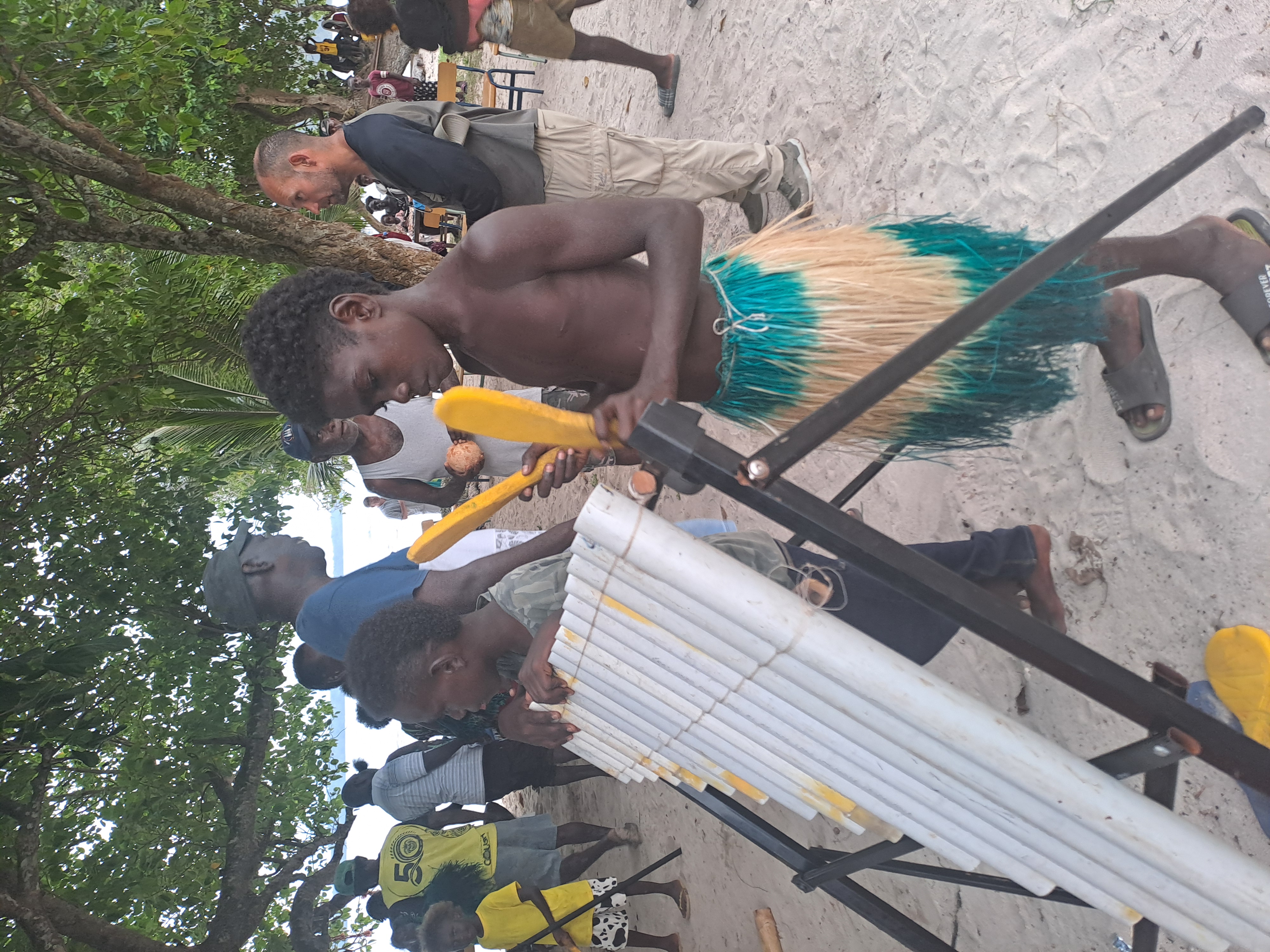
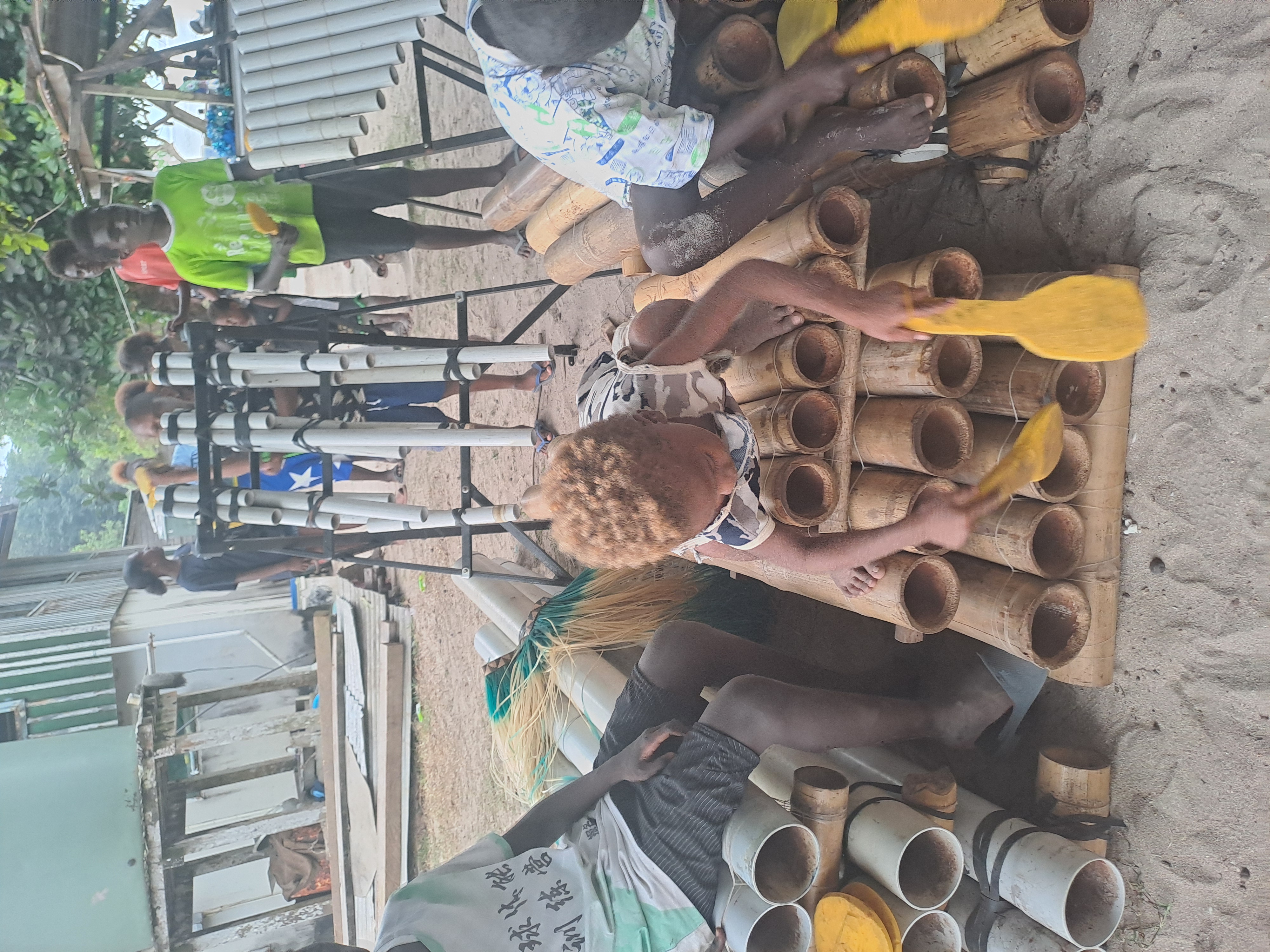
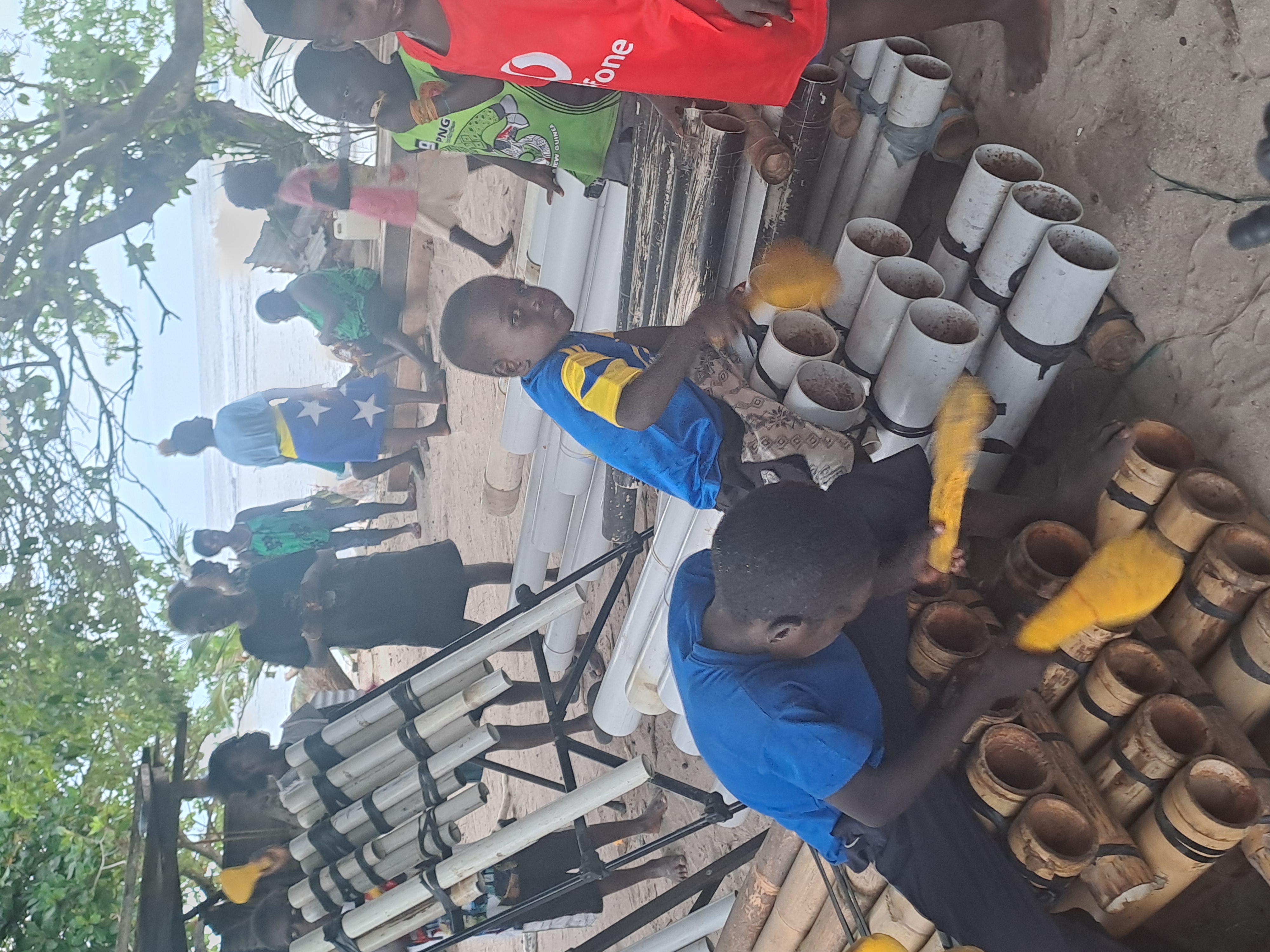
On the way back we stopped at the Catholic Diocese of Bougainville, founded in 1966 and still the largest Christian denomination here. Today it’s led by Bishop Dariusz Kałuża, and continues to play a central role in education, healthcare, and peace building. The majority of the population here are Catholic and he has a congregation of about a thousand.
Nearby we also spotted a Japanese WWII bunker.
Dinner back at Destiny consisted of prawns, fried rice, potatoes and bananas in coconut milk. Our room overlooked the sea and we could hear the waves as we went to sleep.
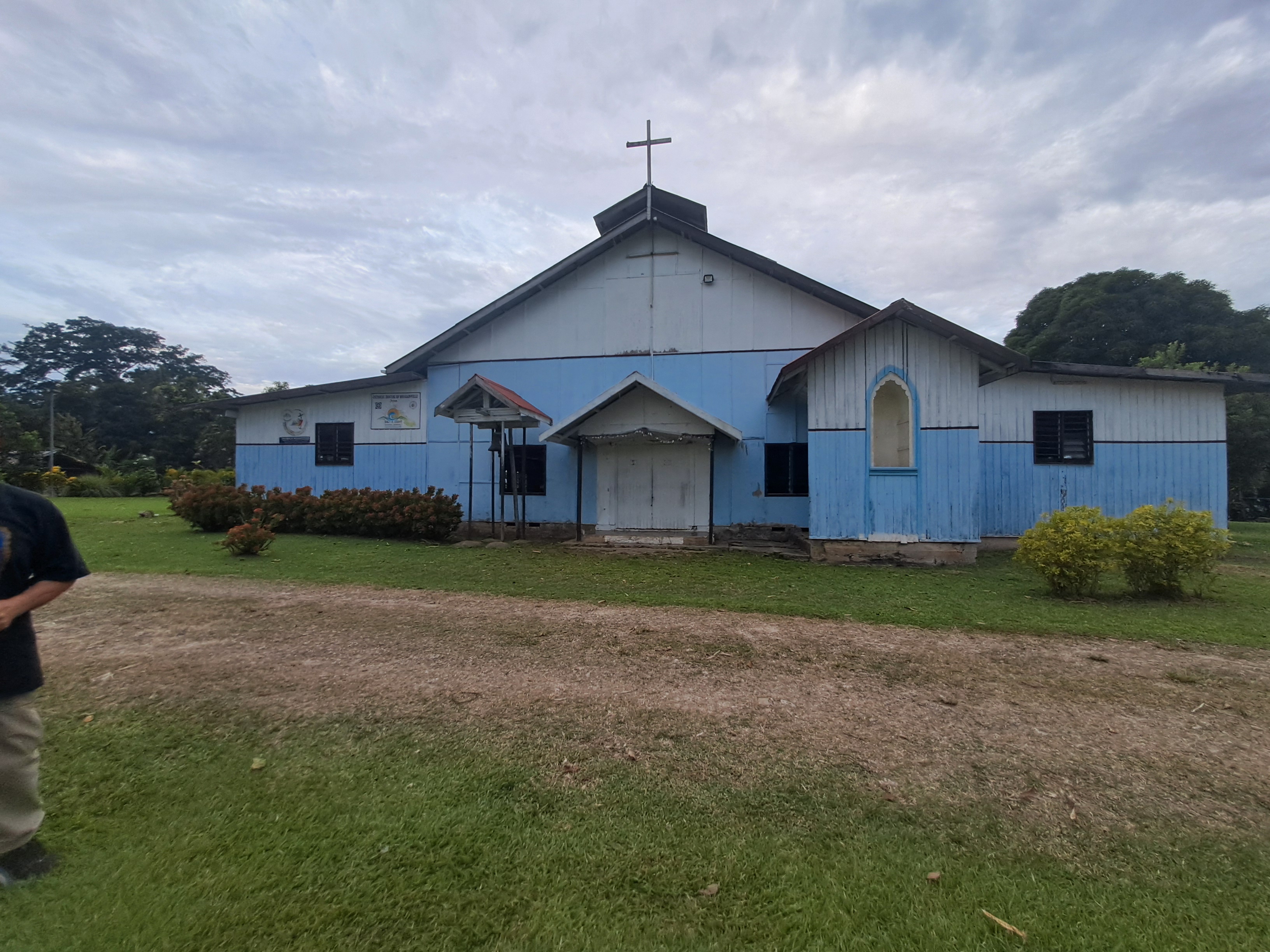

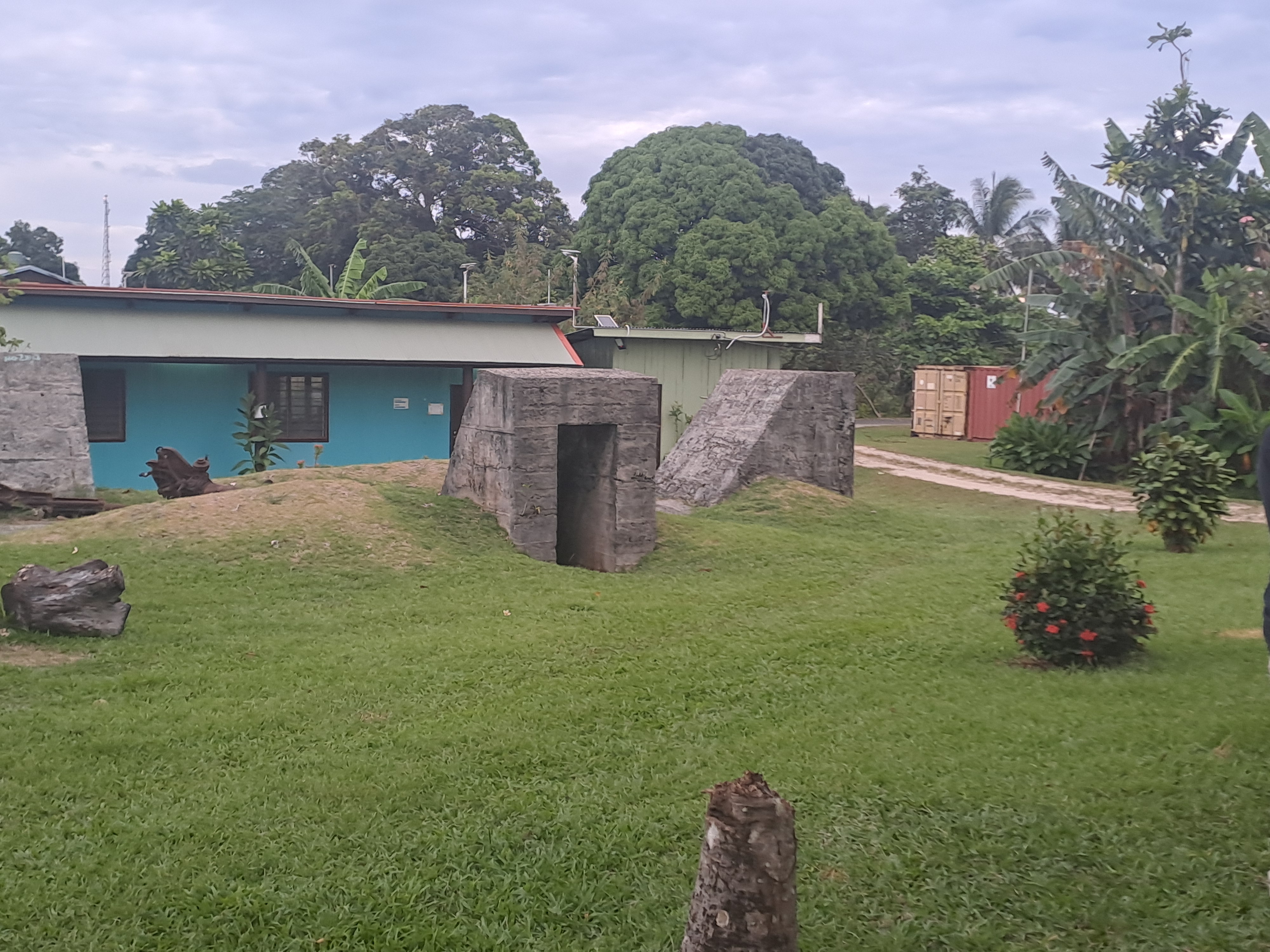
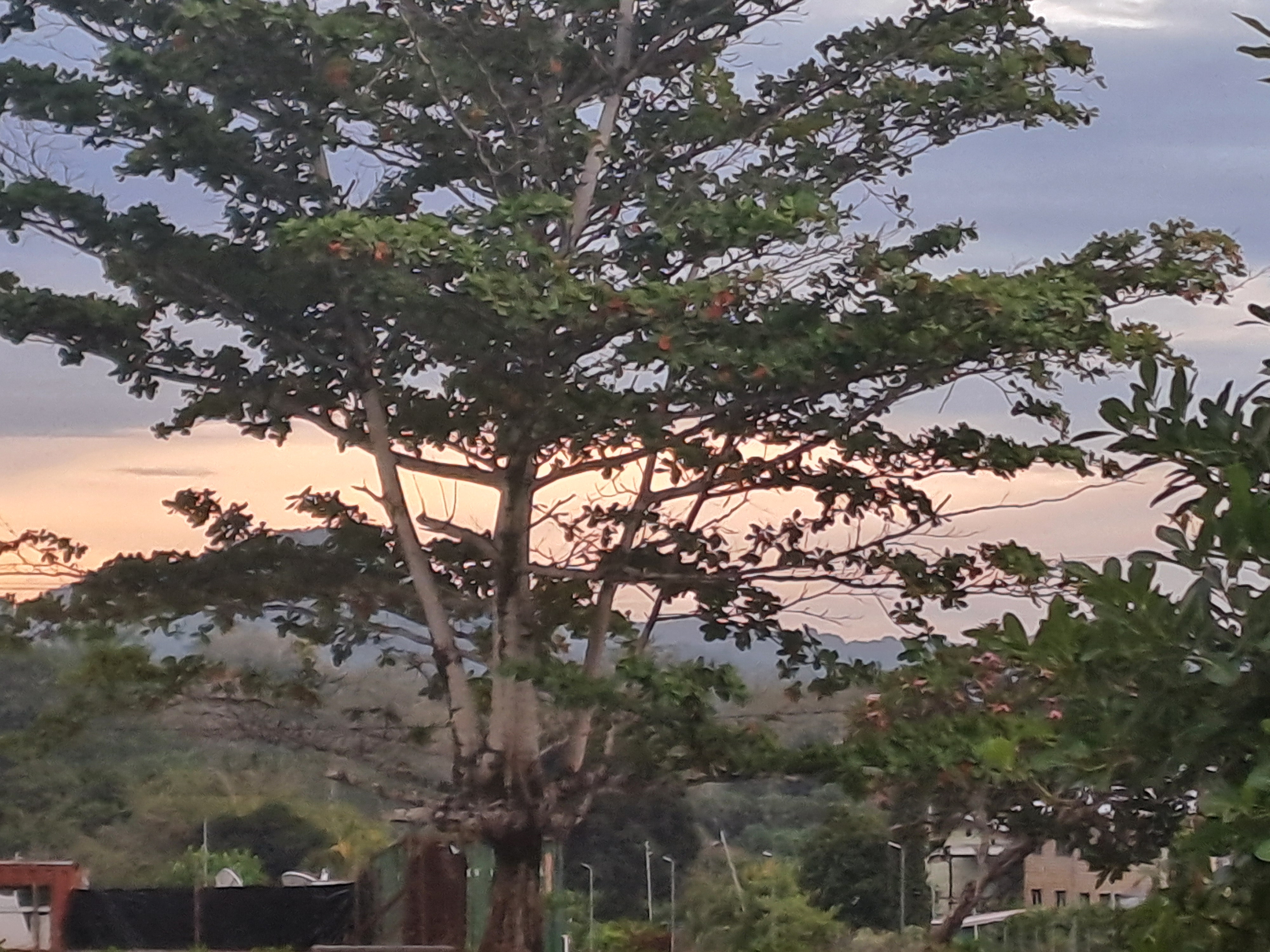
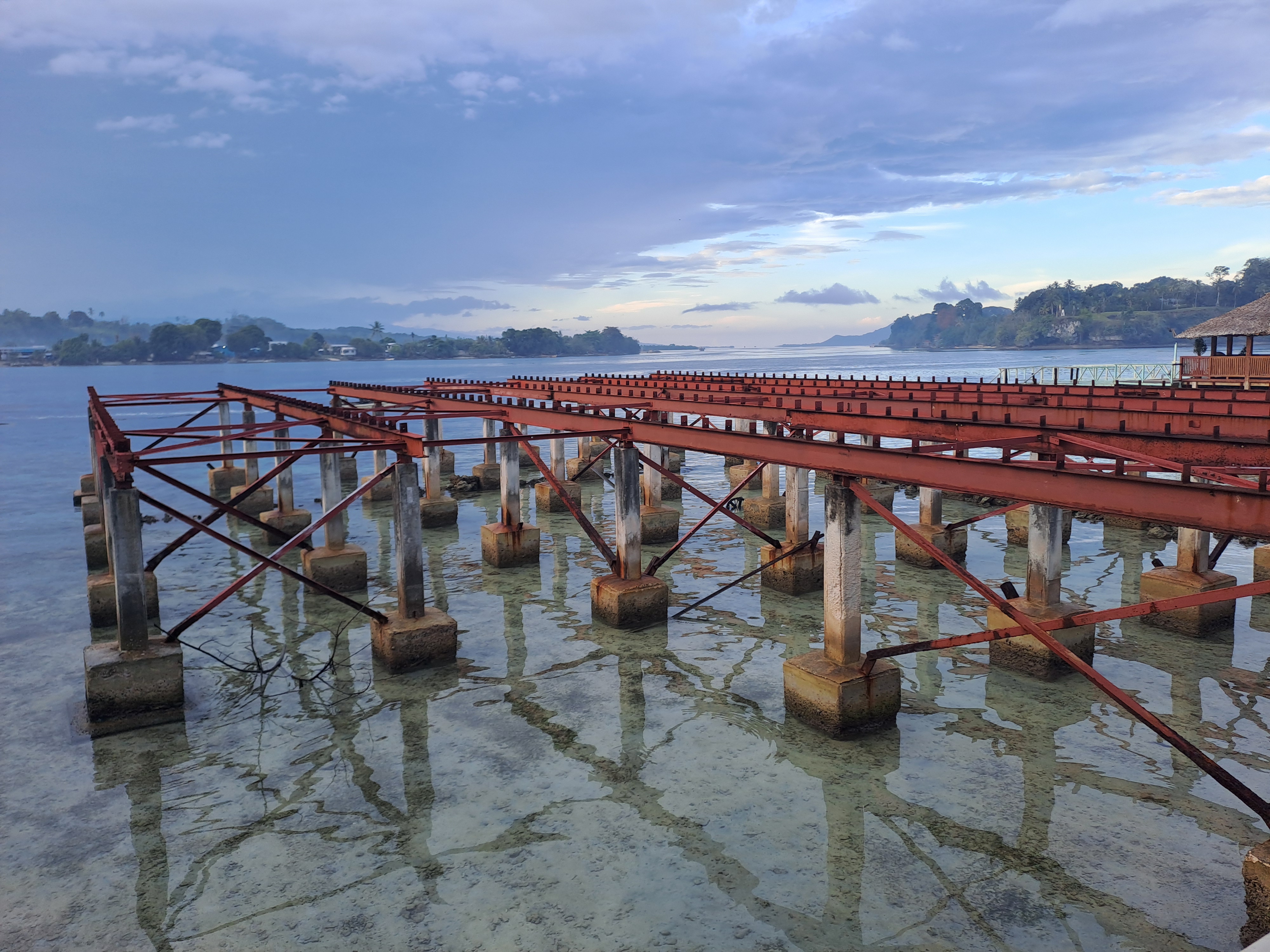
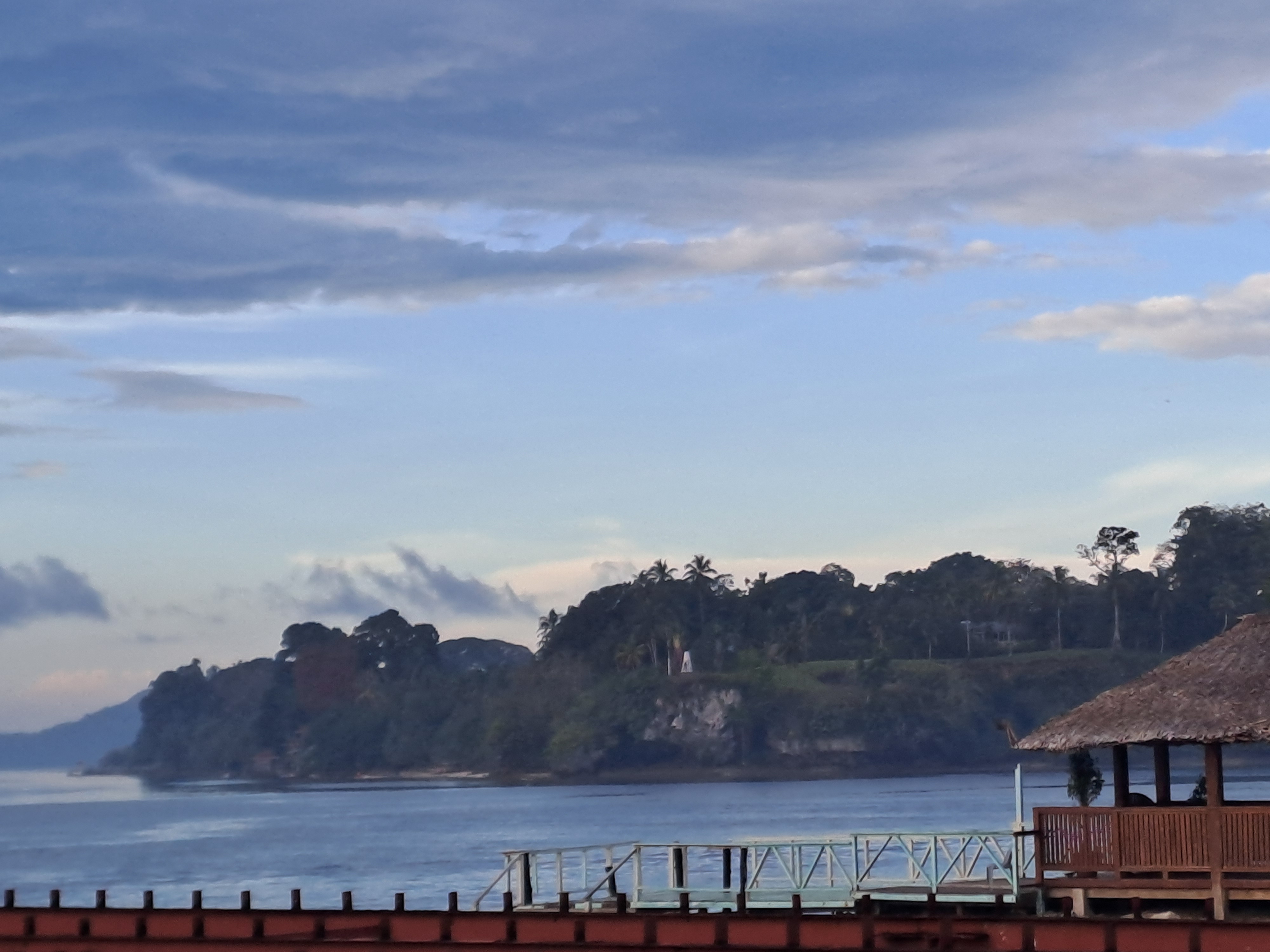
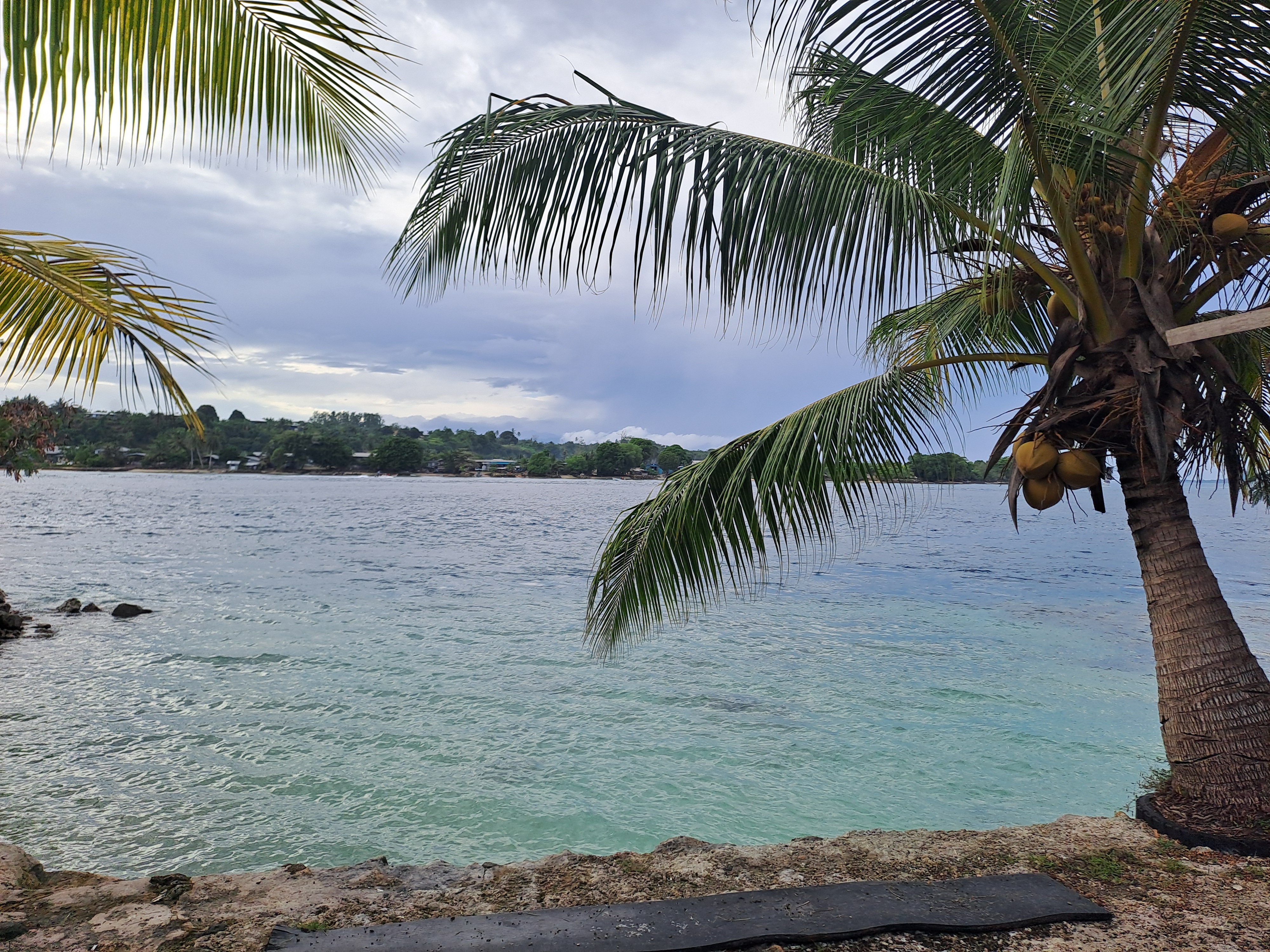
After breakfast at Destiny Guest House we departed by boat and crossed the Buka Passage to Bougainville Island. We grabbed snacks including scones, sausages, fruit, donuts and fish with bananas before boarding our bus for the four-hour drive to Arawa,
The prevelance of betal nut chewing was very obvious amongst the people there with bright red smiles and browny red teeth.
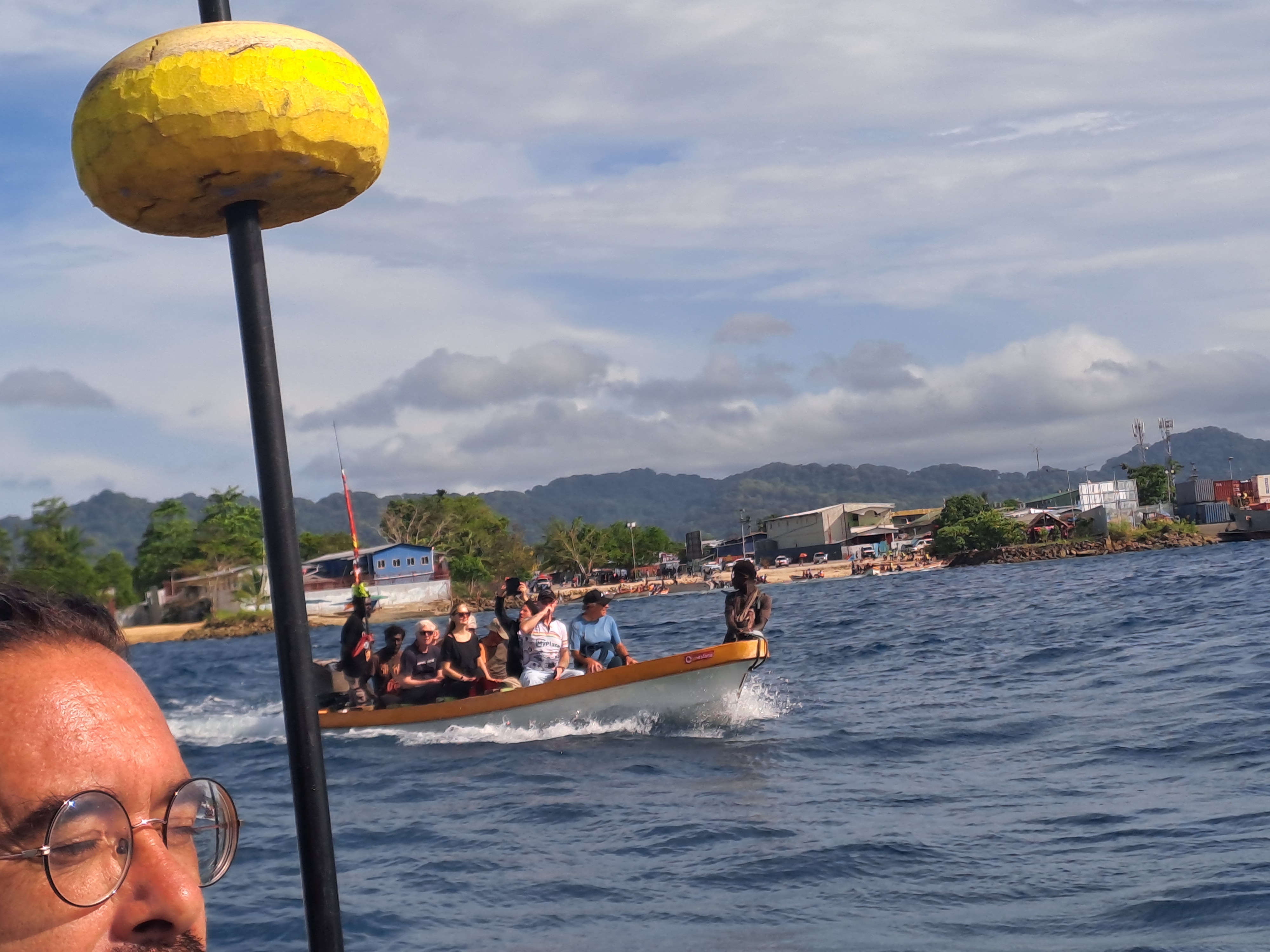
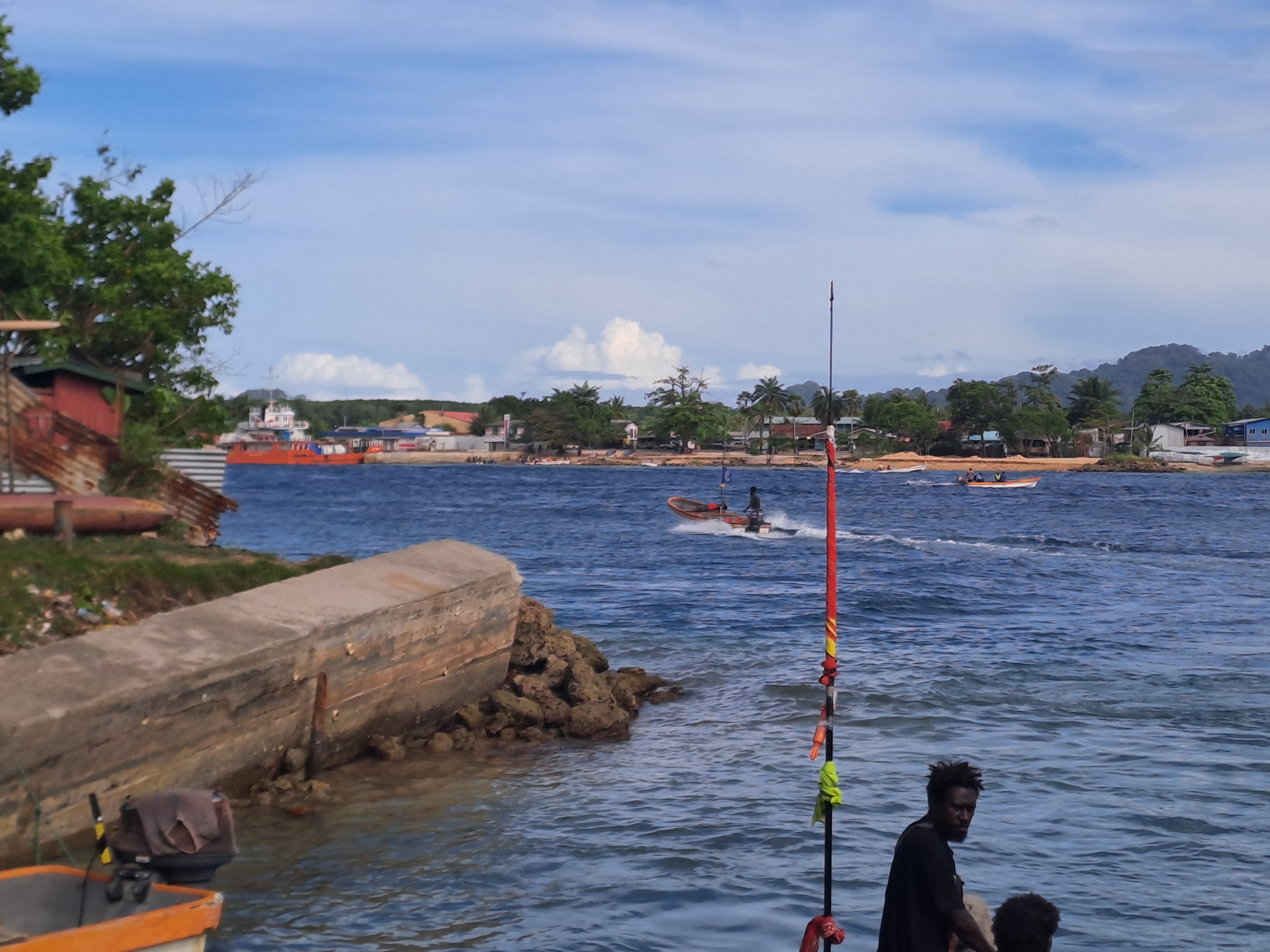
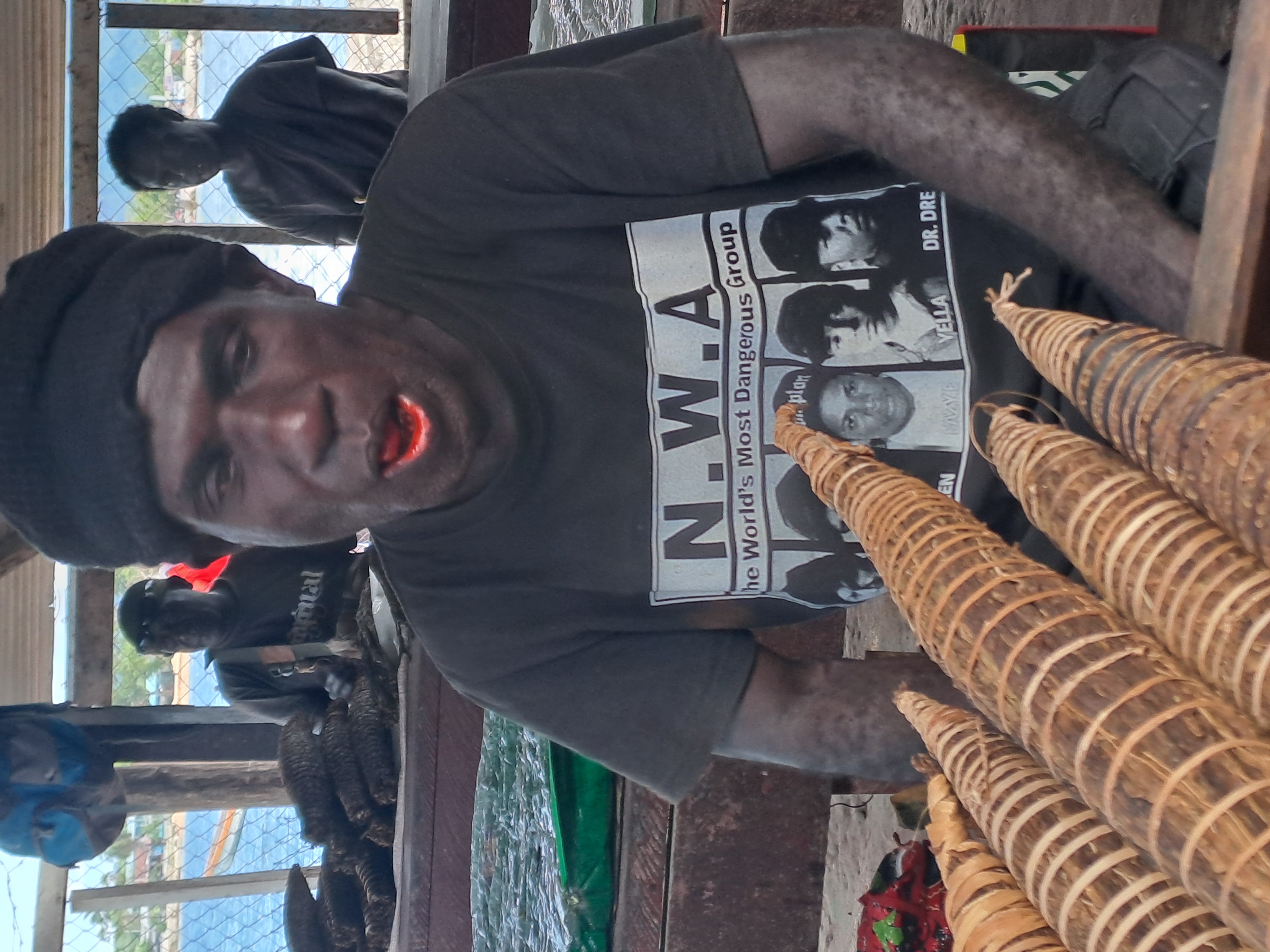
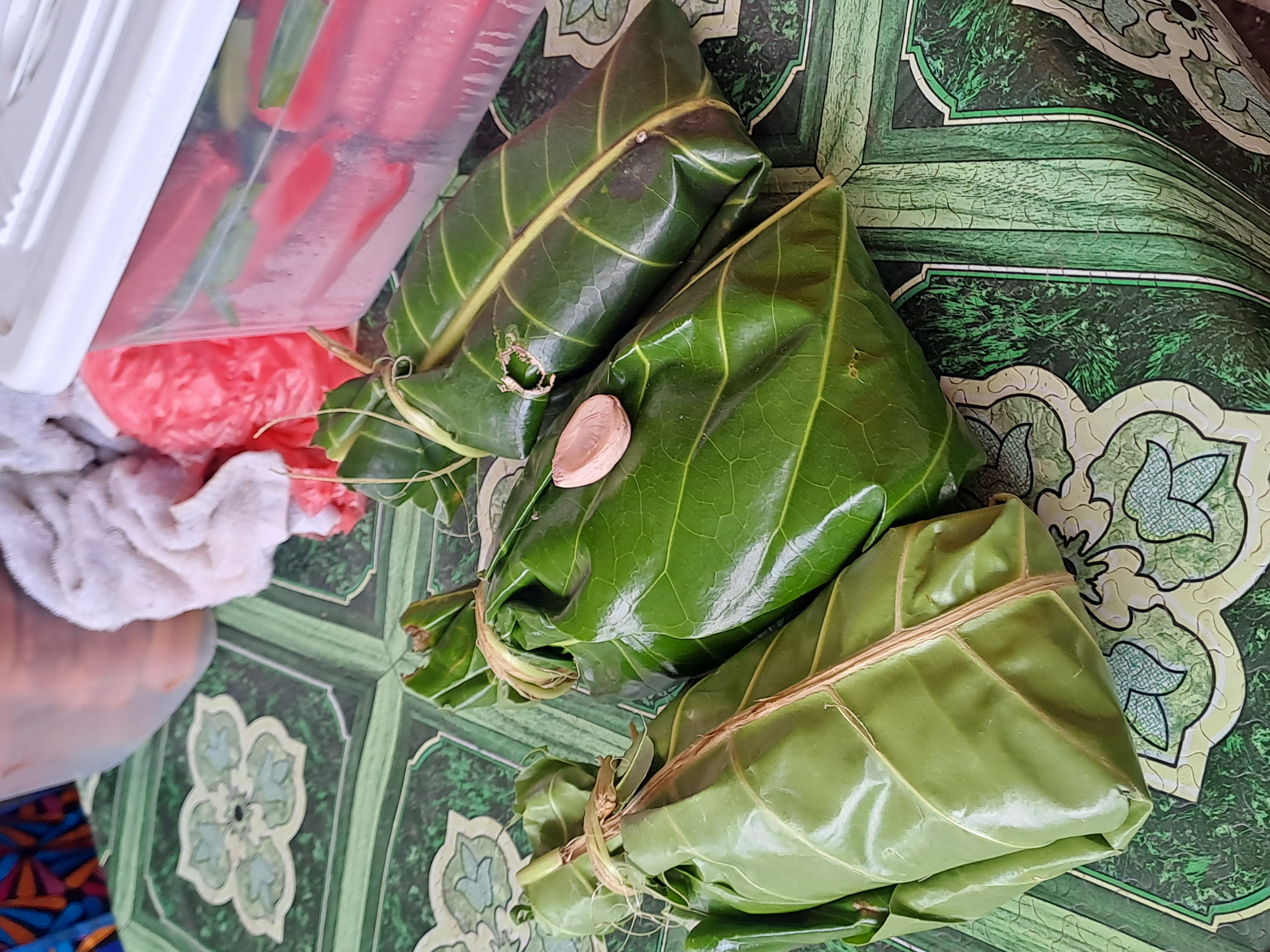
On arrival in Arawa we checked into DJ Guest House. After lunch we visited Arawa Peace Park, the town’s main square and the site of the Tama Festival. The festival celebrates tama, a local dish made from cassava, banana, taro and coconut milk wrapped in banana leaves and cooked over a fire. Here we began to realise how important tourism is seen to the future of Bougainville as our every movement was reported over the loud speakers. We were as much part of the show to the locals as they were to us.
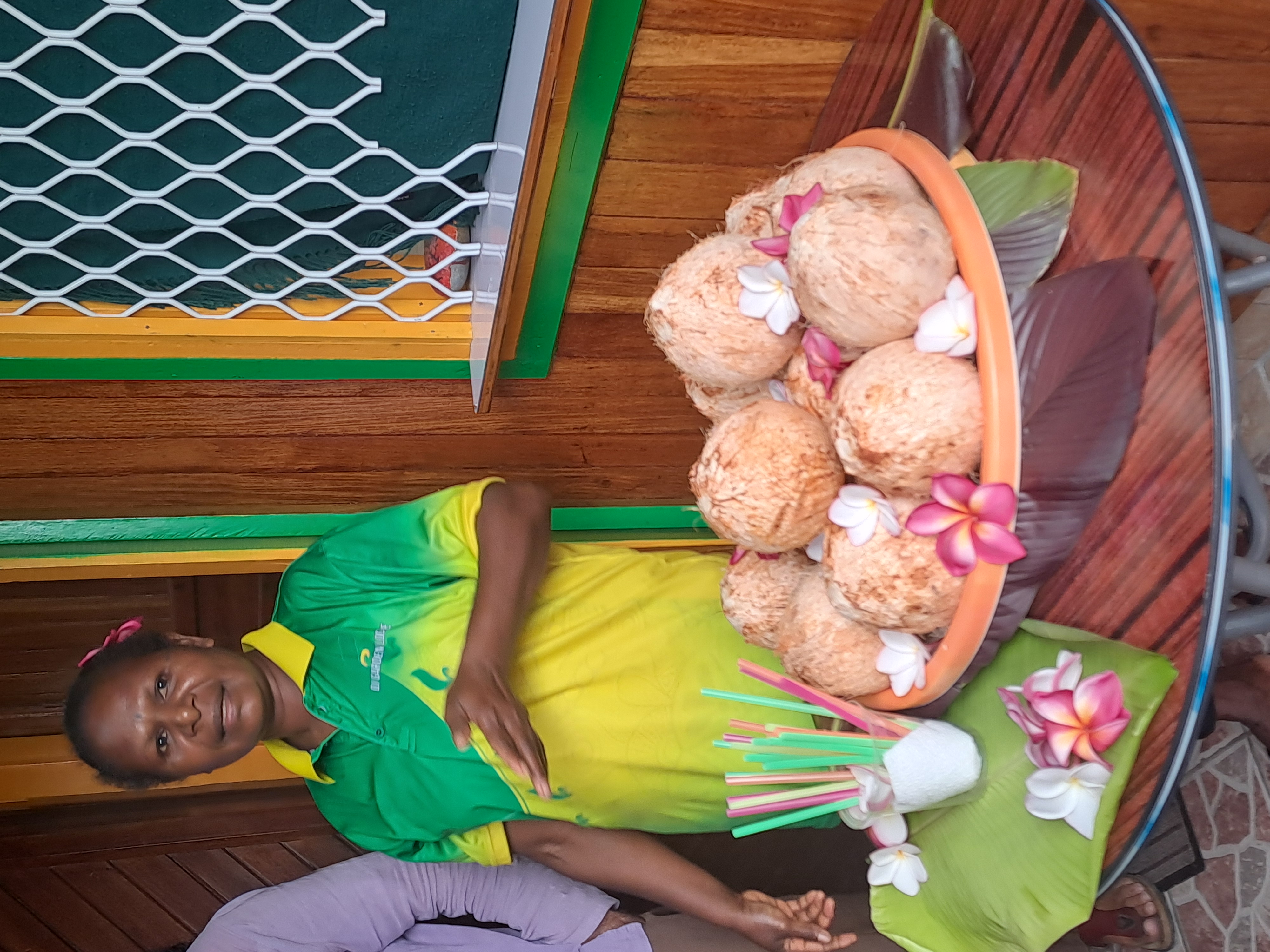
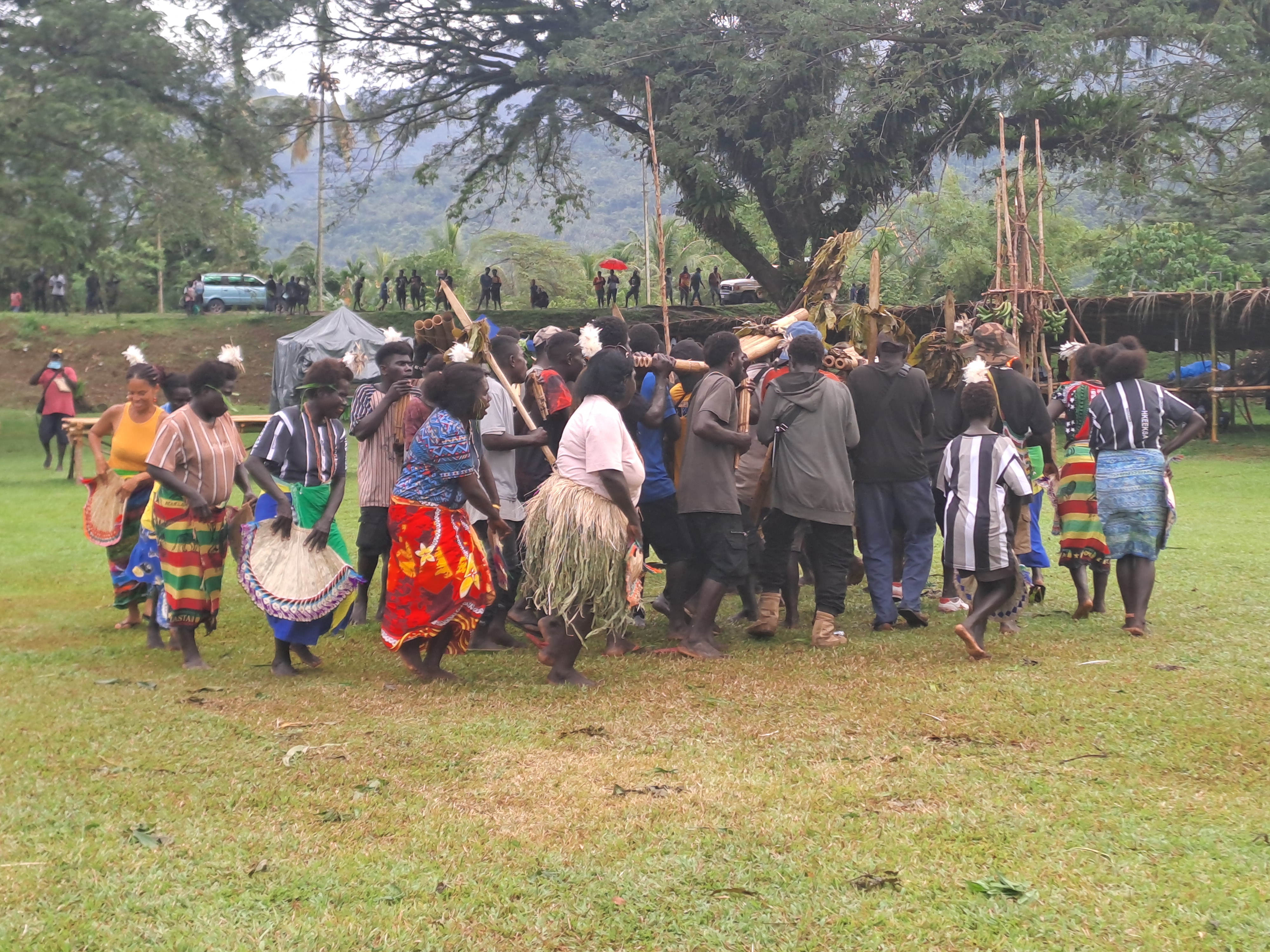
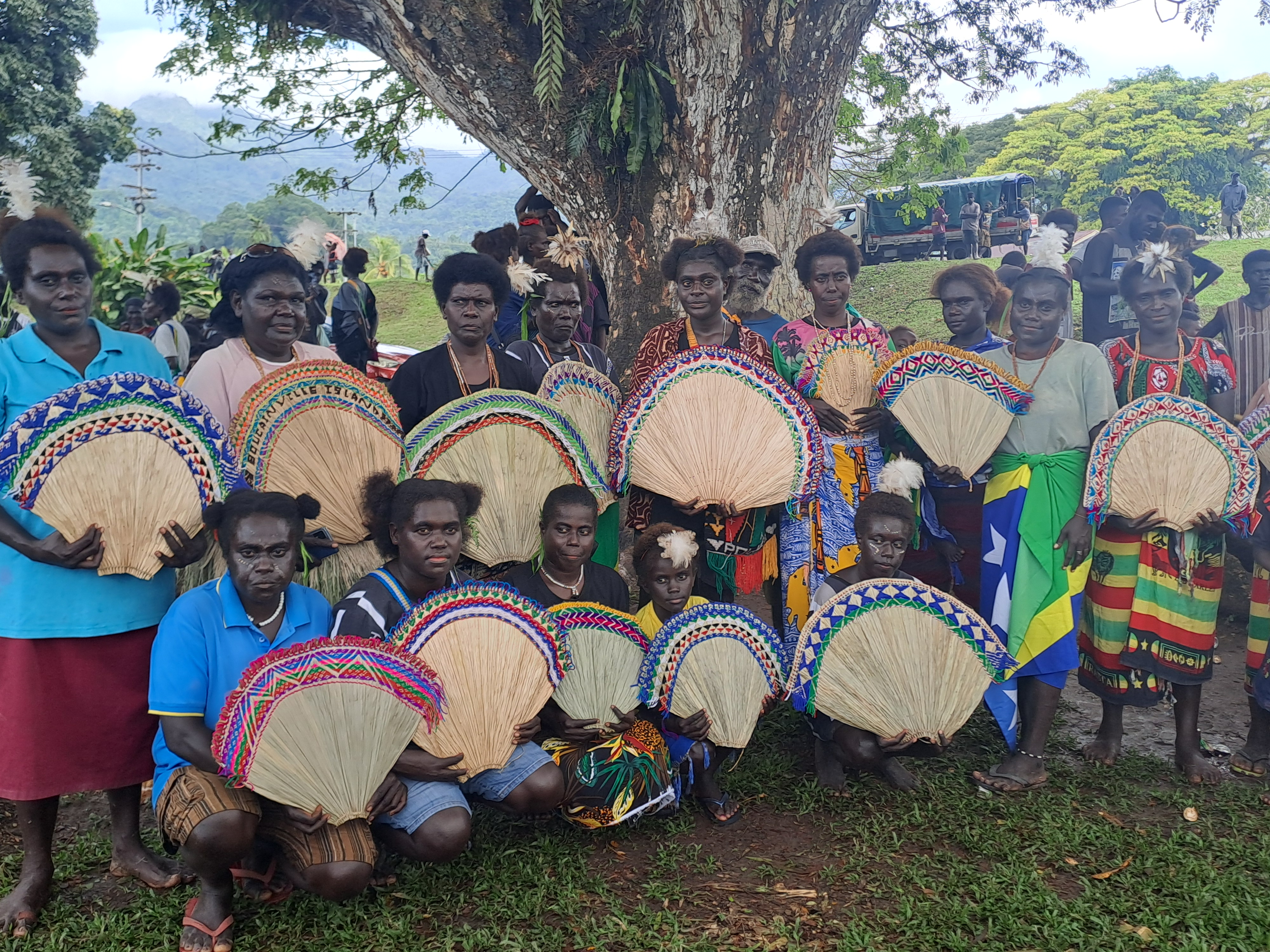
Although a capital the town was very small. Probably about the size of a village, with couple of convenience stores and bottle shops.

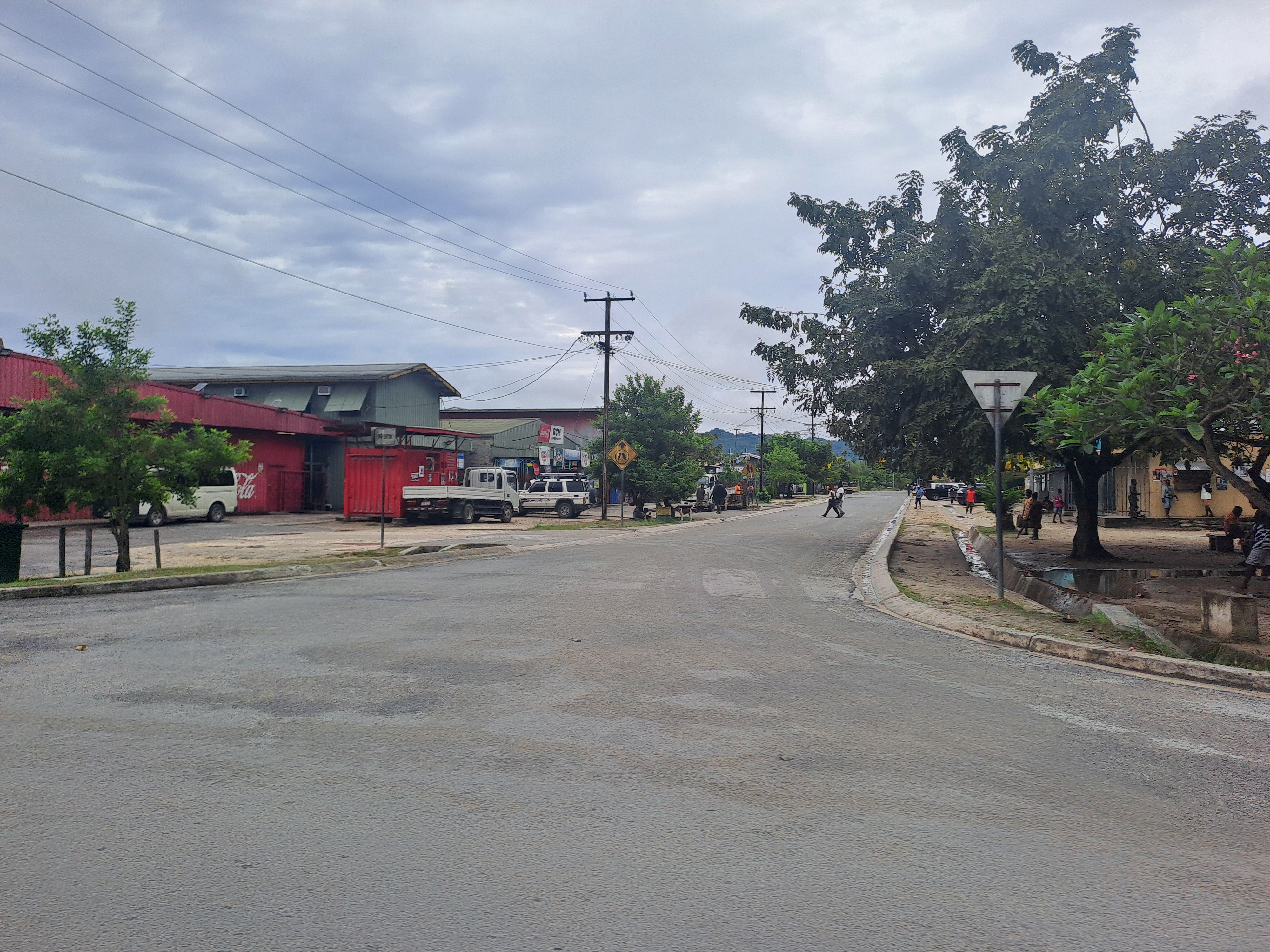
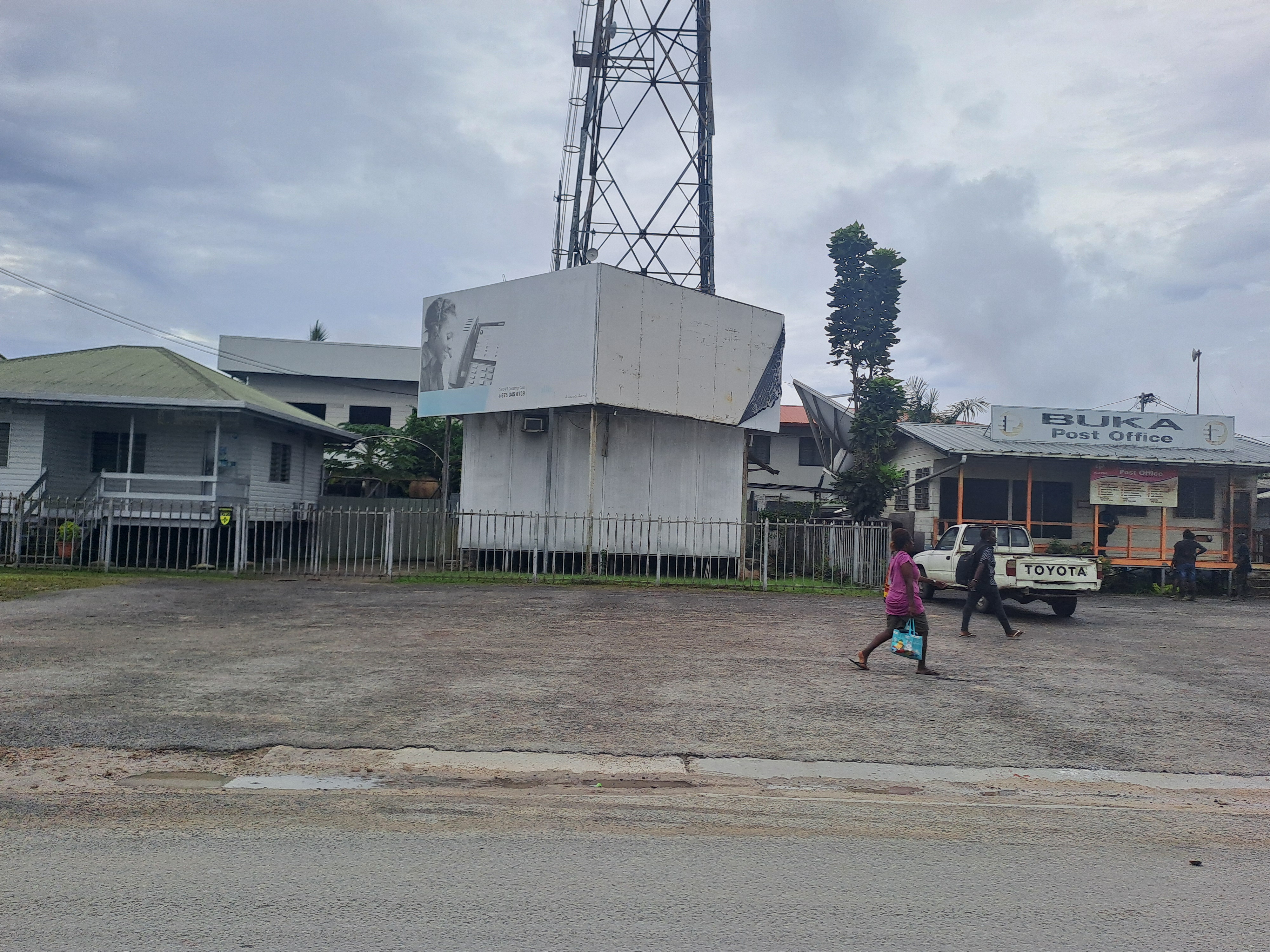

We sampled tama and caught the end of a local band and performance. Traditional Bougainville music features garamut drums, bamboo panpipes, bamboo flutes and shell rattles. The sound was unlike anything we heard in PNG; kind of a waltz inspired by island sounds and rhythms.
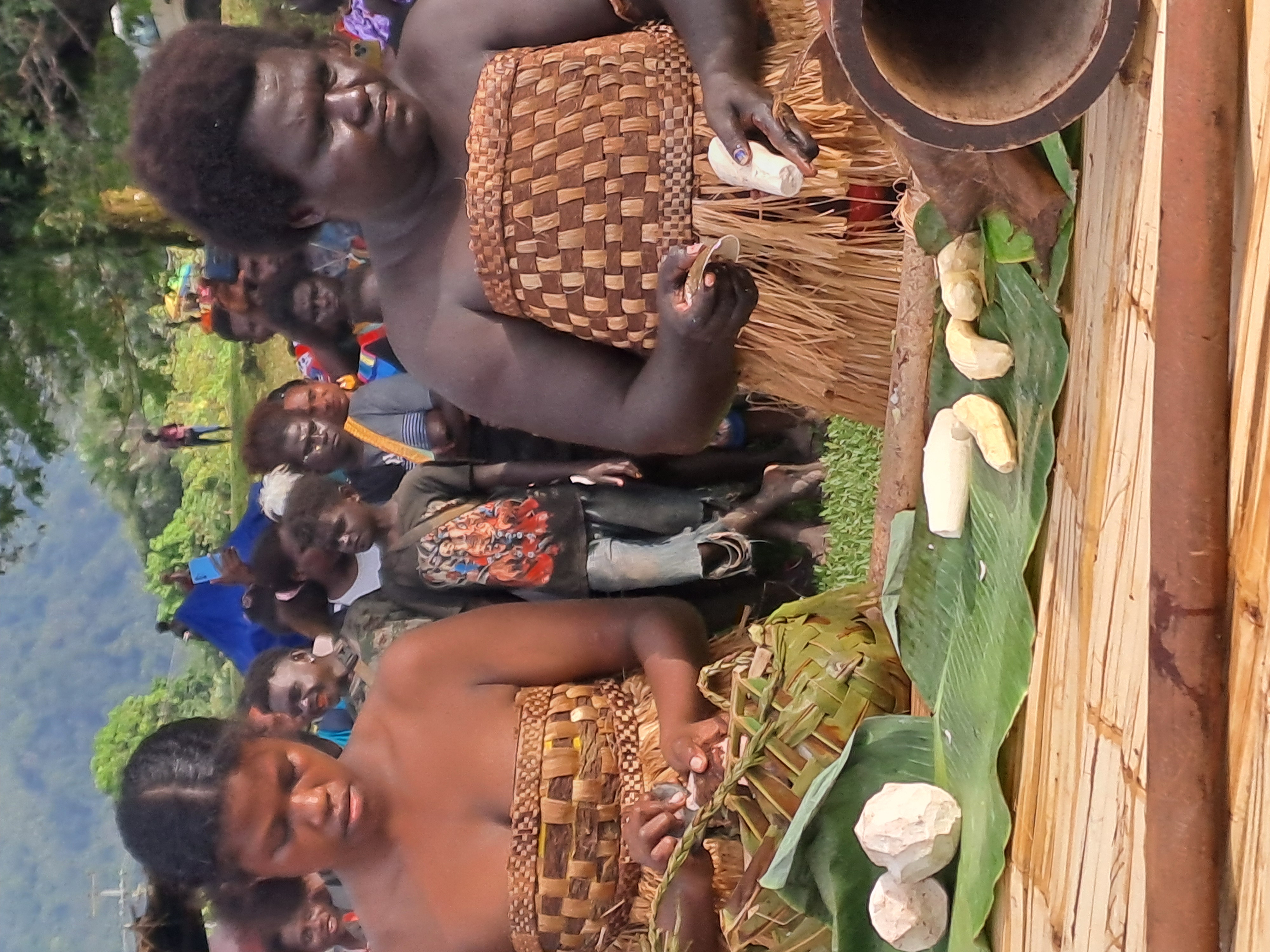

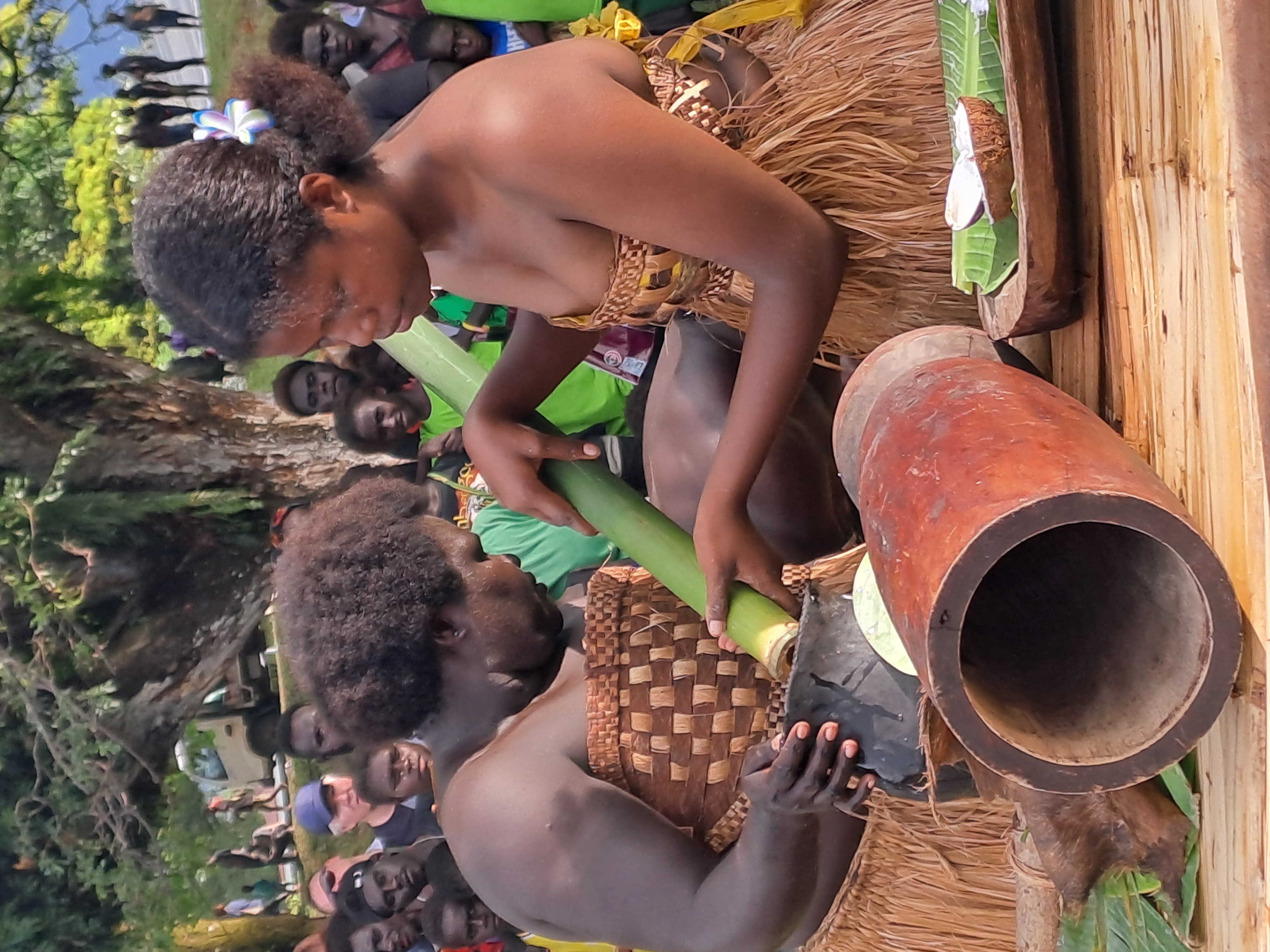
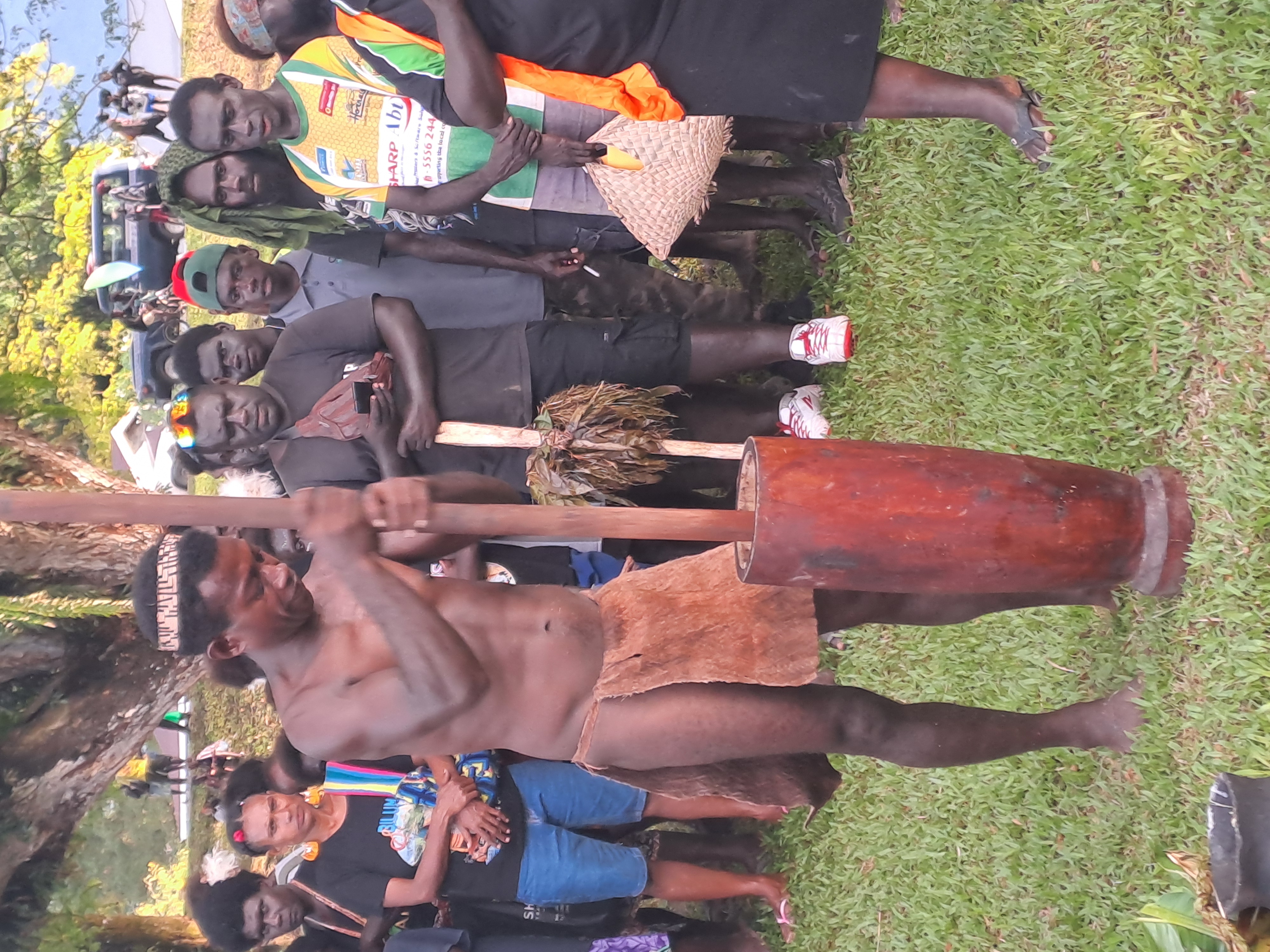
jack
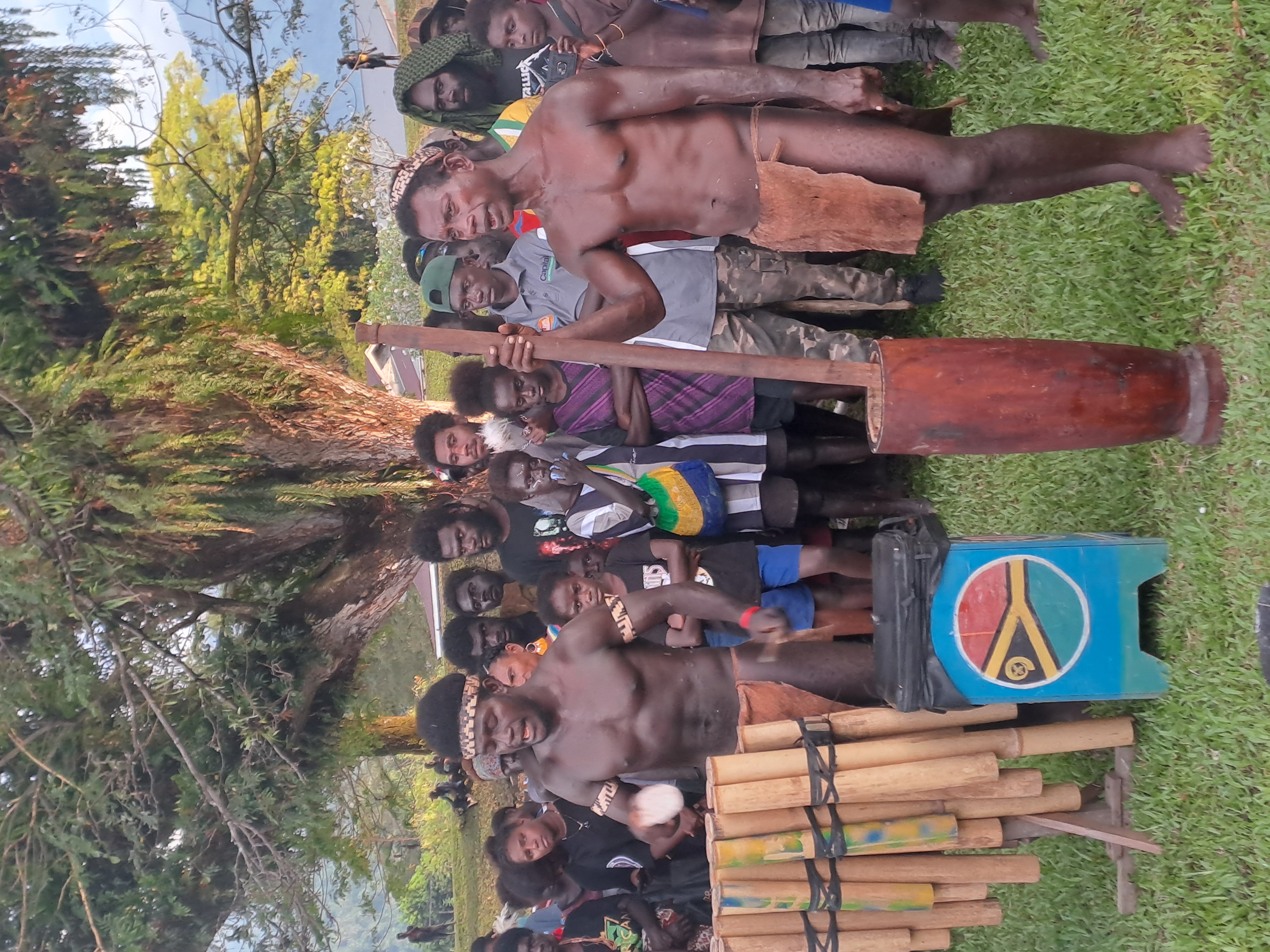
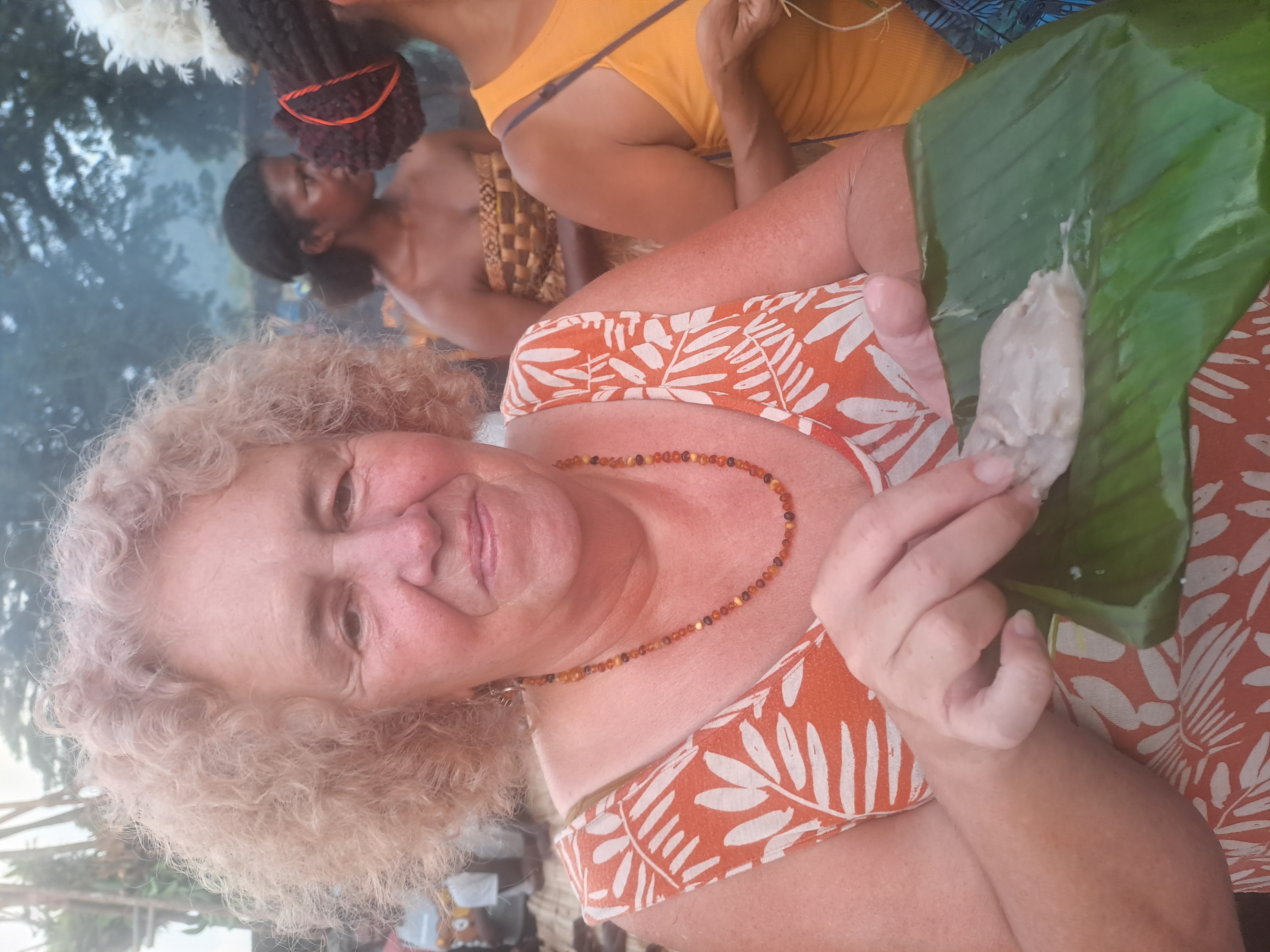
We then visited the Bougainville Crisis peace memorial across from the park. The monument is now in disrepair, but originally featured a world map with Bougainville circled and surrendered weapons set in concrete.
We finished the day with beers, dinner and WiFi back at DJ Guest House.
After breakfast the next day, we drove 12 km to Kieta Memorial Park, home to Japanese WWII relics including an A6M3 Model 22 Zero fighter (a rare sight, as most were lost in the kamikaze campaigns of 1944–45), a Type 89B Otsu “Chi-Ro” medium tank, a Type 3 (1914) 76.2 mm naval gun, a 25 mm Type 96 twin-mount anti-aircraft gun, and a memorial dedicated to Baros of Sirovi, a local hero executed by Japanese forces in January 1943 for refusing to betray Allied coastwatchers. The cenotaph bears the inscription:
“TO A LOYAL NATIVE BAROS OF SIROUI WHO GAVE HIS LIFE JANUARY 1943. LEST WE FORGET. RSS & AILA BOUGAINVILLE SUB-BRANCH”
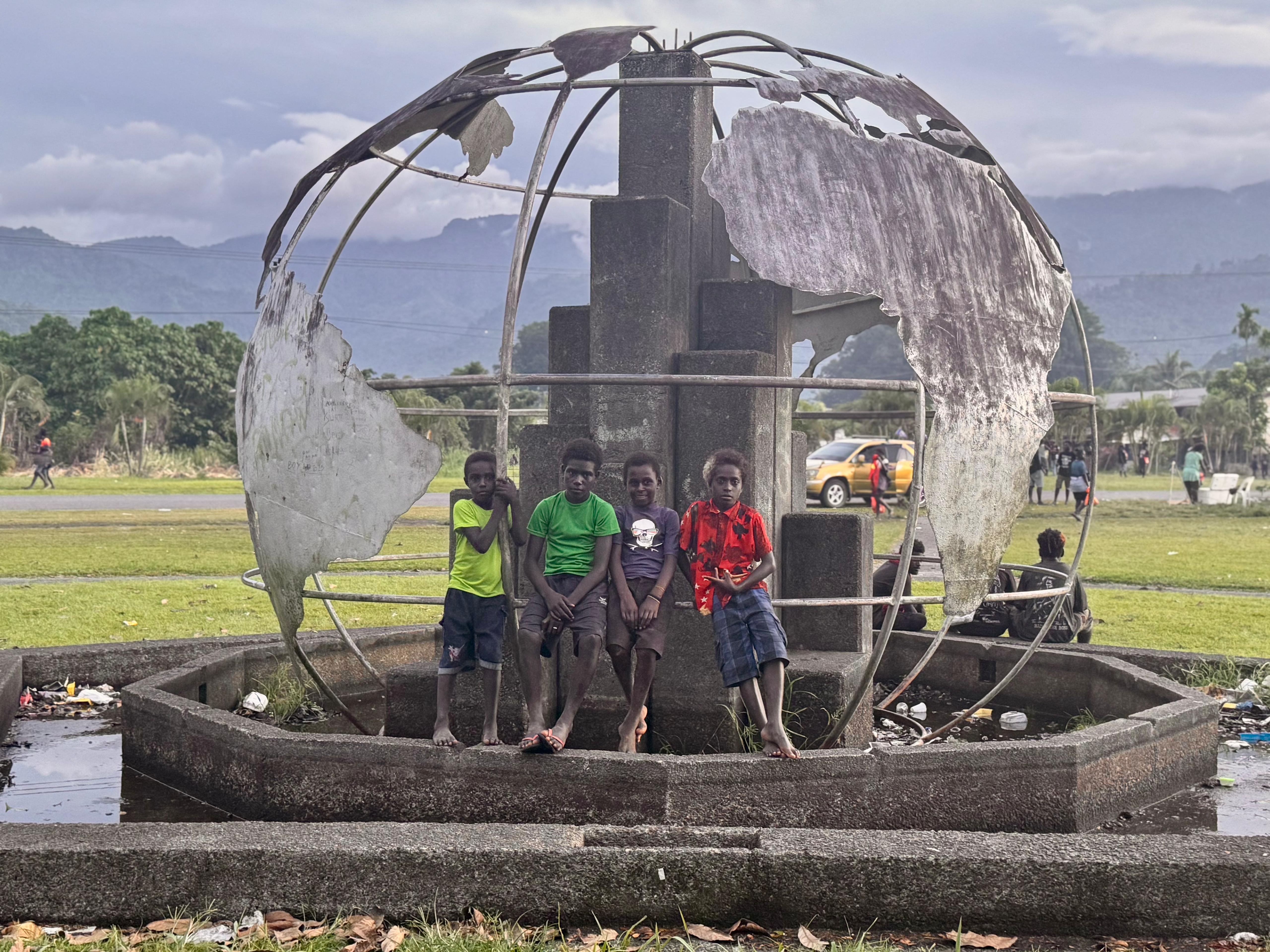

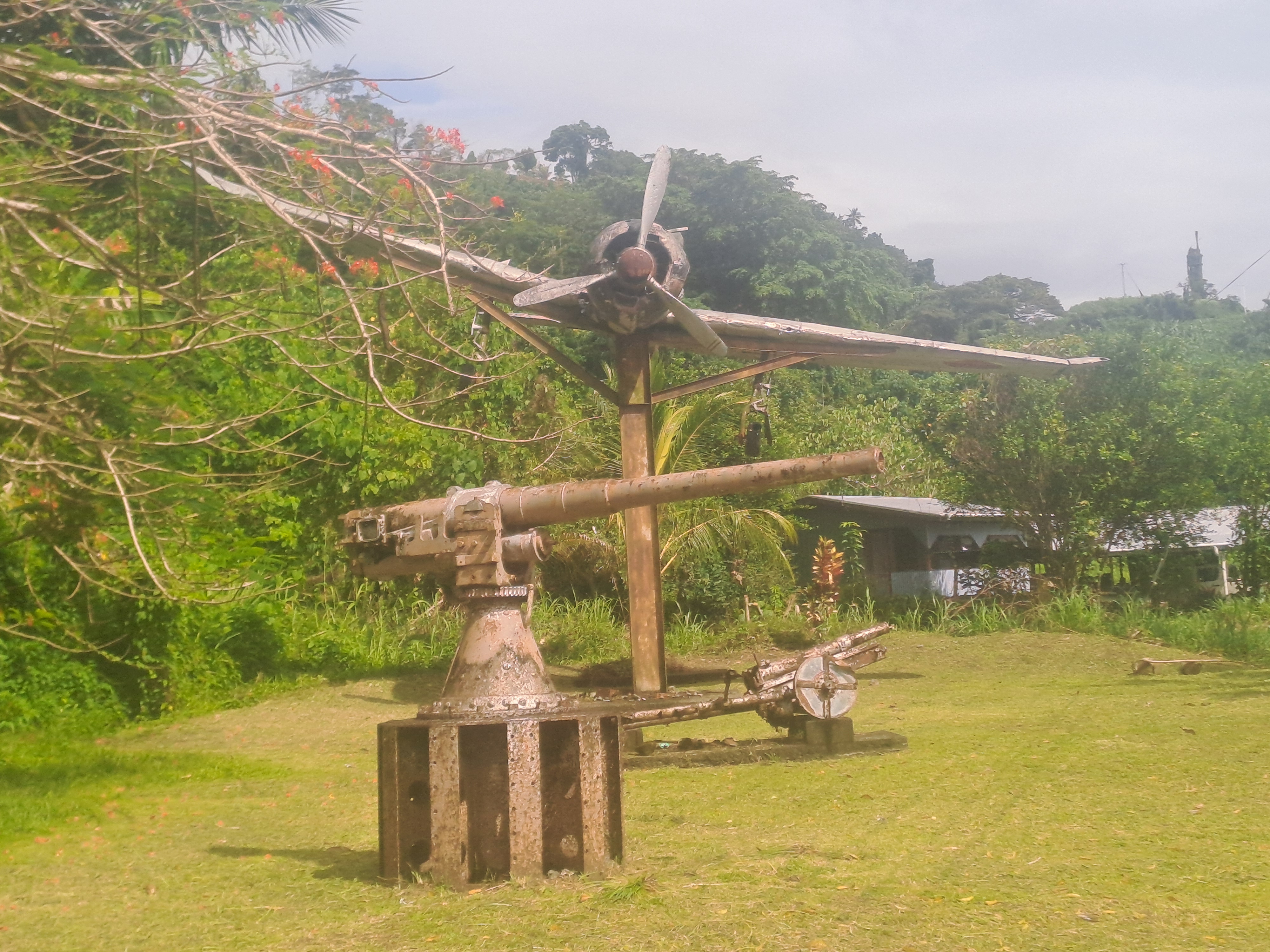
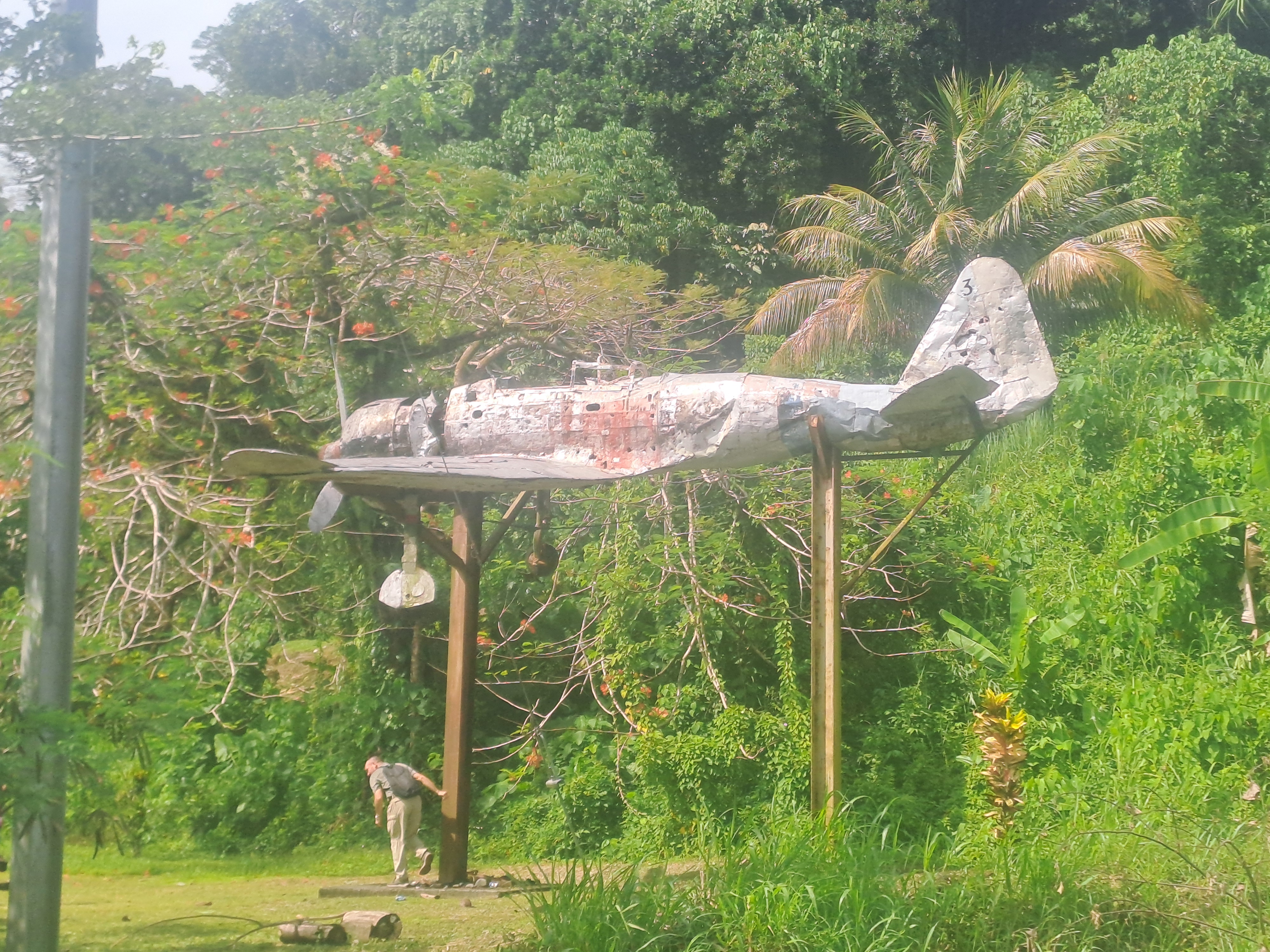
We then returned to Arawa for day two of the Tama Festival. Several local groups competed in a cooking challenge, each preparing their own batch of Tama, while across the square over a dozen music and dance troupes performed everything from traditional pieces to rock, reggae infused with island rhythms, and even rap.
Our departure for lunch was announced as was our return!
By the afternoon the Tama was ready and ceremoniously presented to our tour leader, accompanied by traditional songs from the cooking groups.
Speeches followed from Zone Bosco (head of the local partner travel agency) and Hon. Peter Tsiamalili Jr., Bougainville’s Regional MP and Papua New Guinea’s Minister for Internal Security (overseeing the national police). Both highlighted the importance of tourism to Bougainville’s future, especially as independence negotiations with PNG approach in 2027 following the 2019 referendum where 97.7% voted in favor of independence. They stressed that while Bougainville and PNG have distinct cultures and outlooks, the goal should be a peaceful separation… more like Slovakia and the Czech Republic, less like India and Pakistan.
After a photo opportunity with the minister, we swung by the hotel to grab swim gear and enjoyed a quick dip in the ocean near the wreck of what our host described as a former diesel delivery vessel.
When we got back I realised that the possible scratch I’d seen this morning and assumed was a bang and a bit of a bruise, because it was too painful for just a scratch was now red but it looked inflamed not infected.
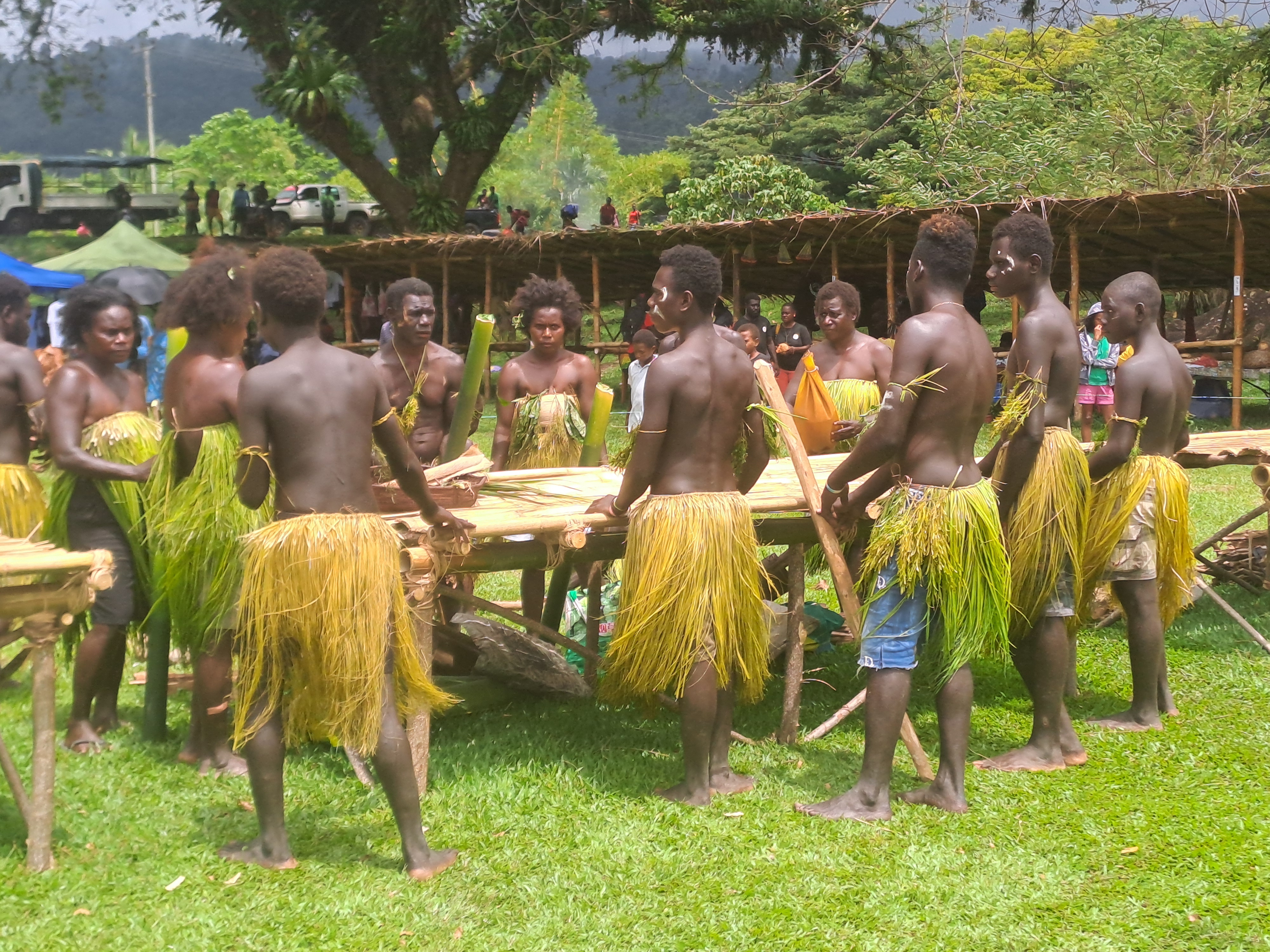

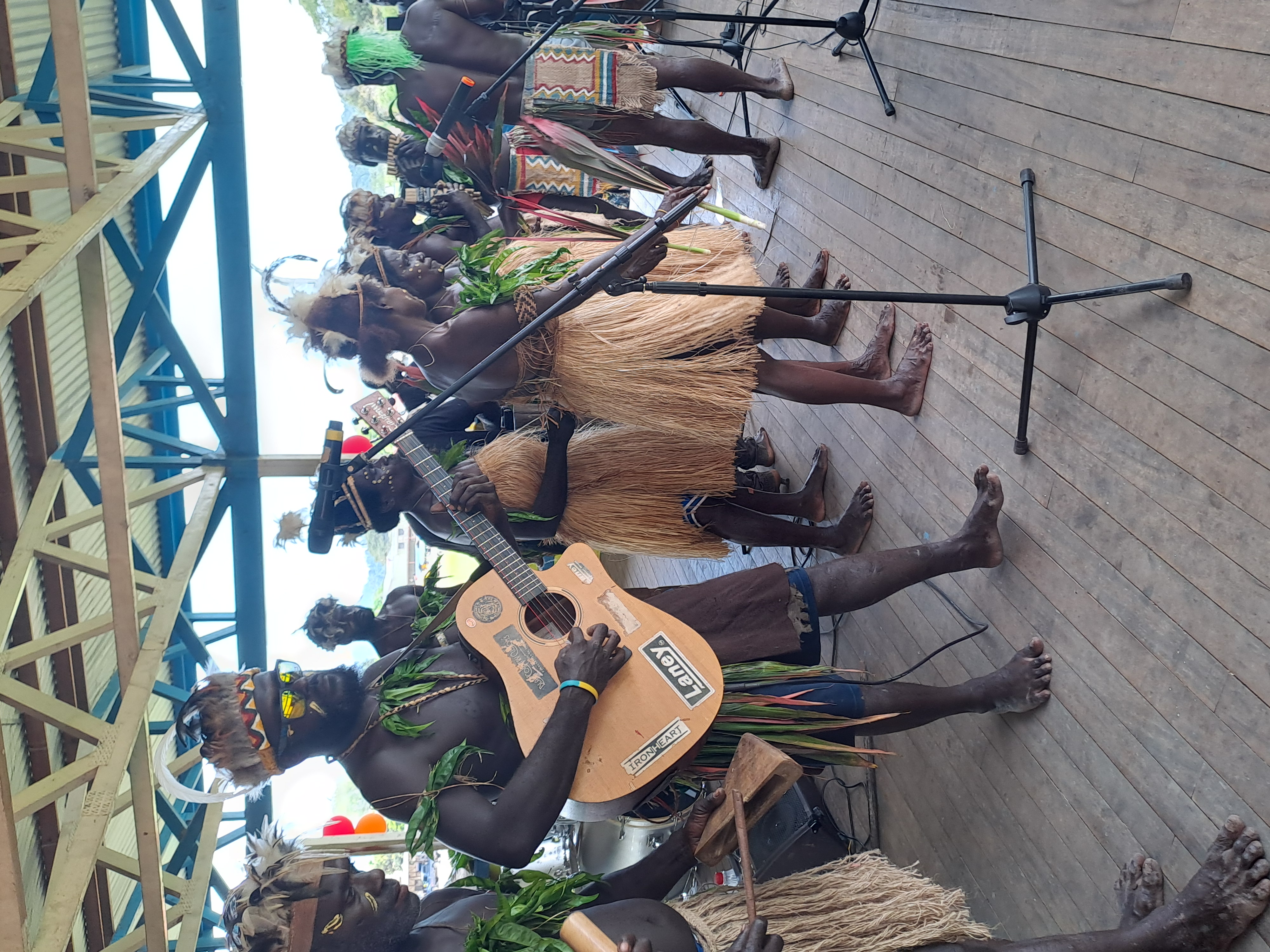
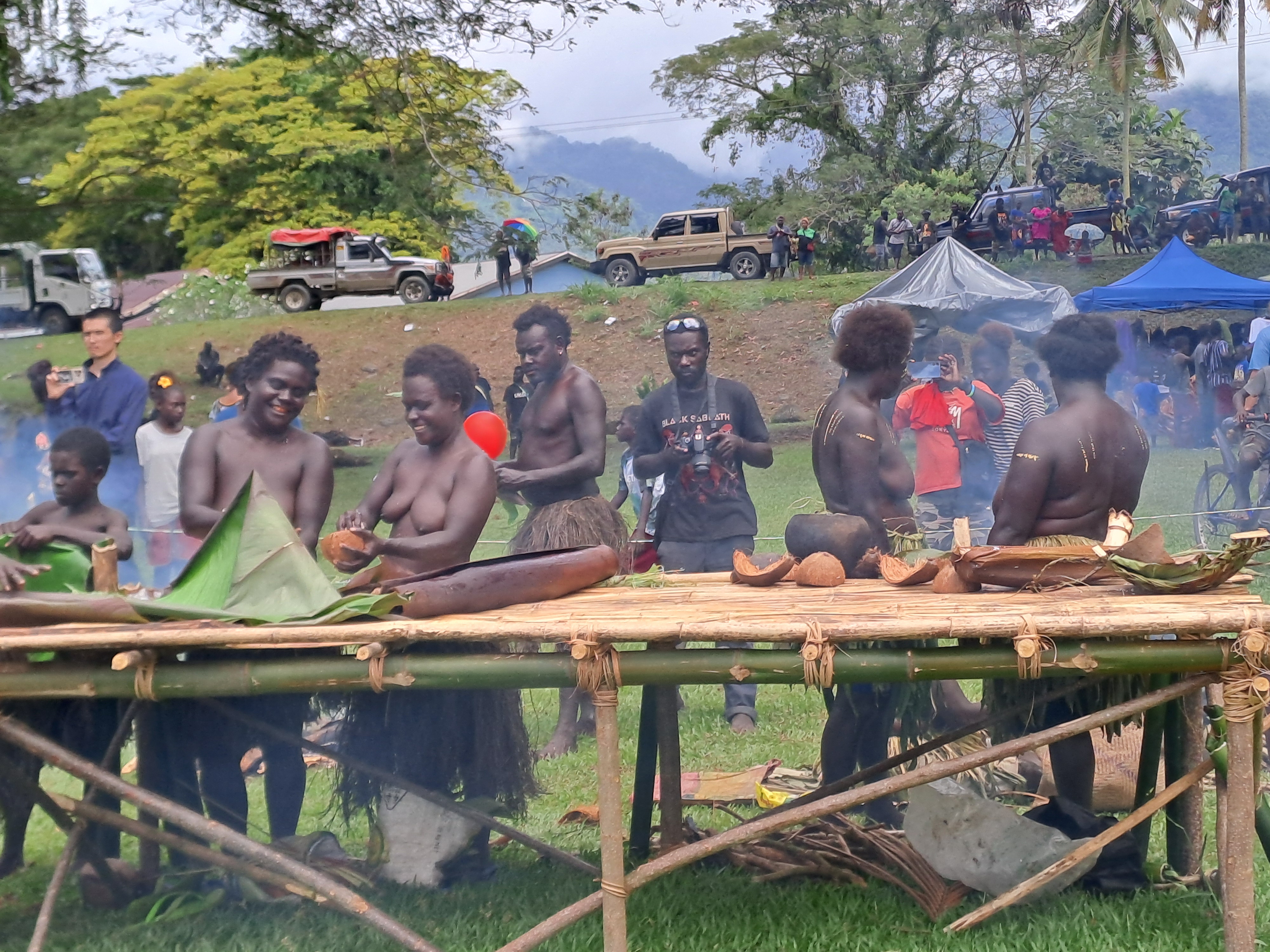
hope
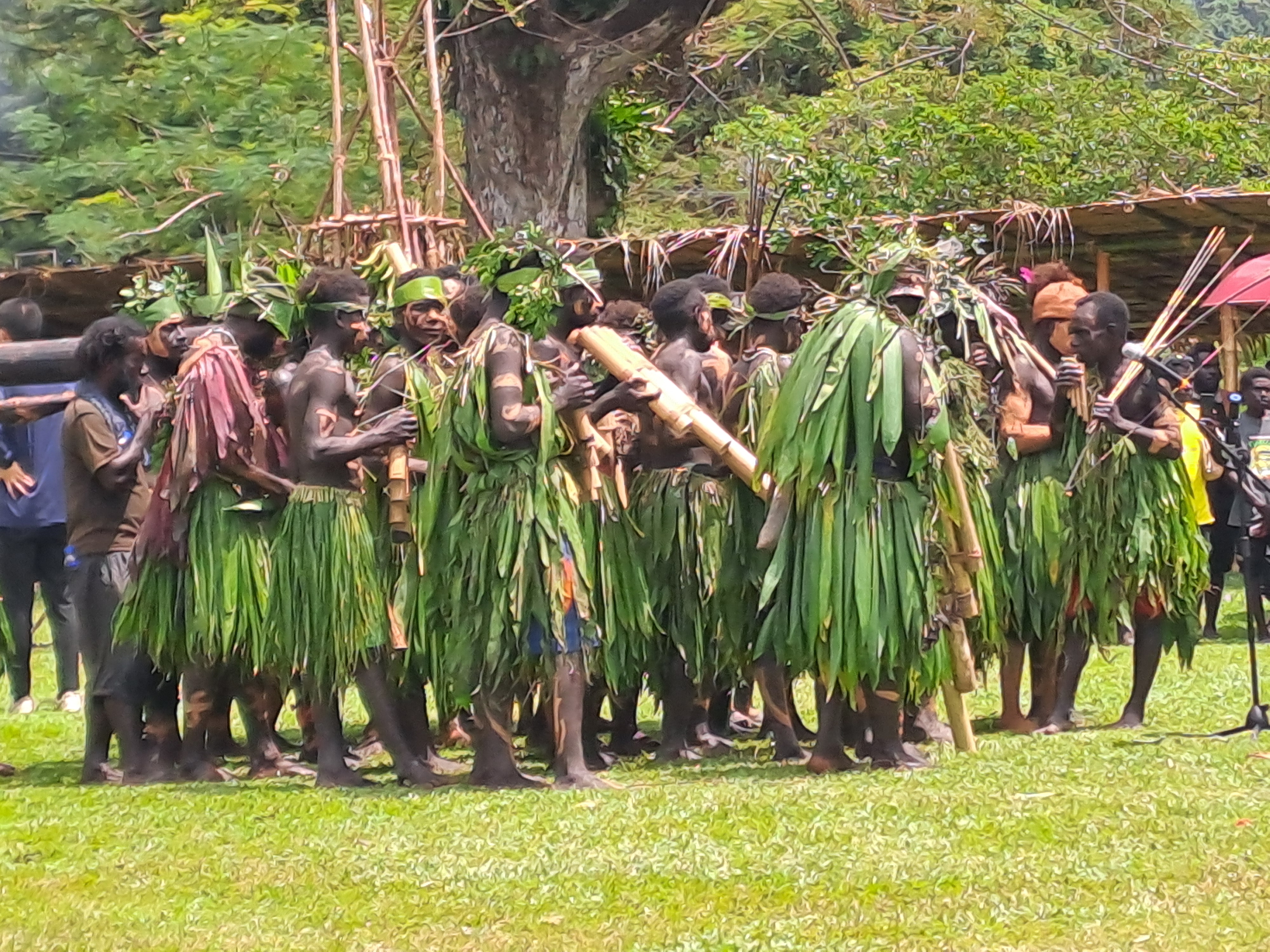
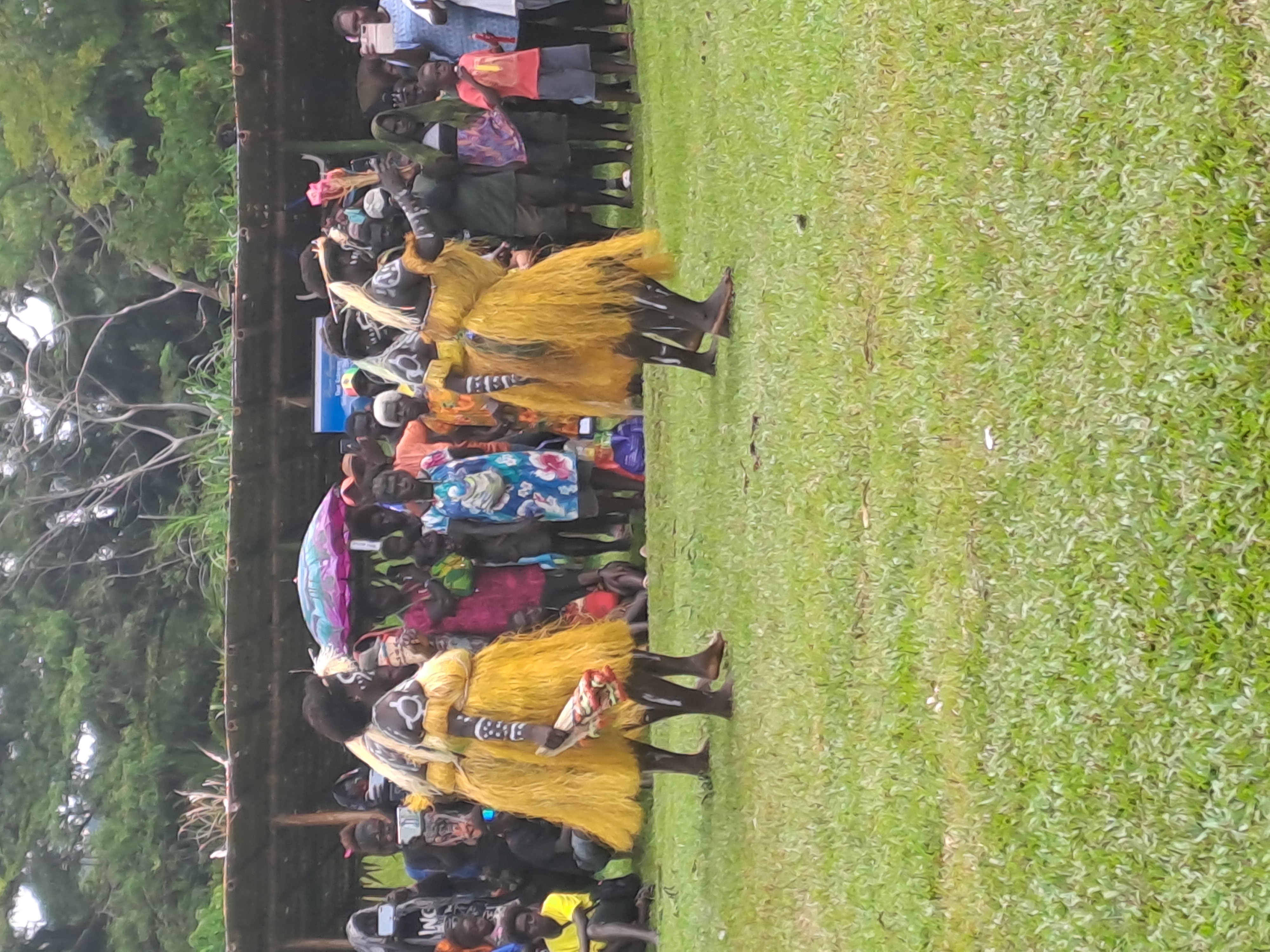
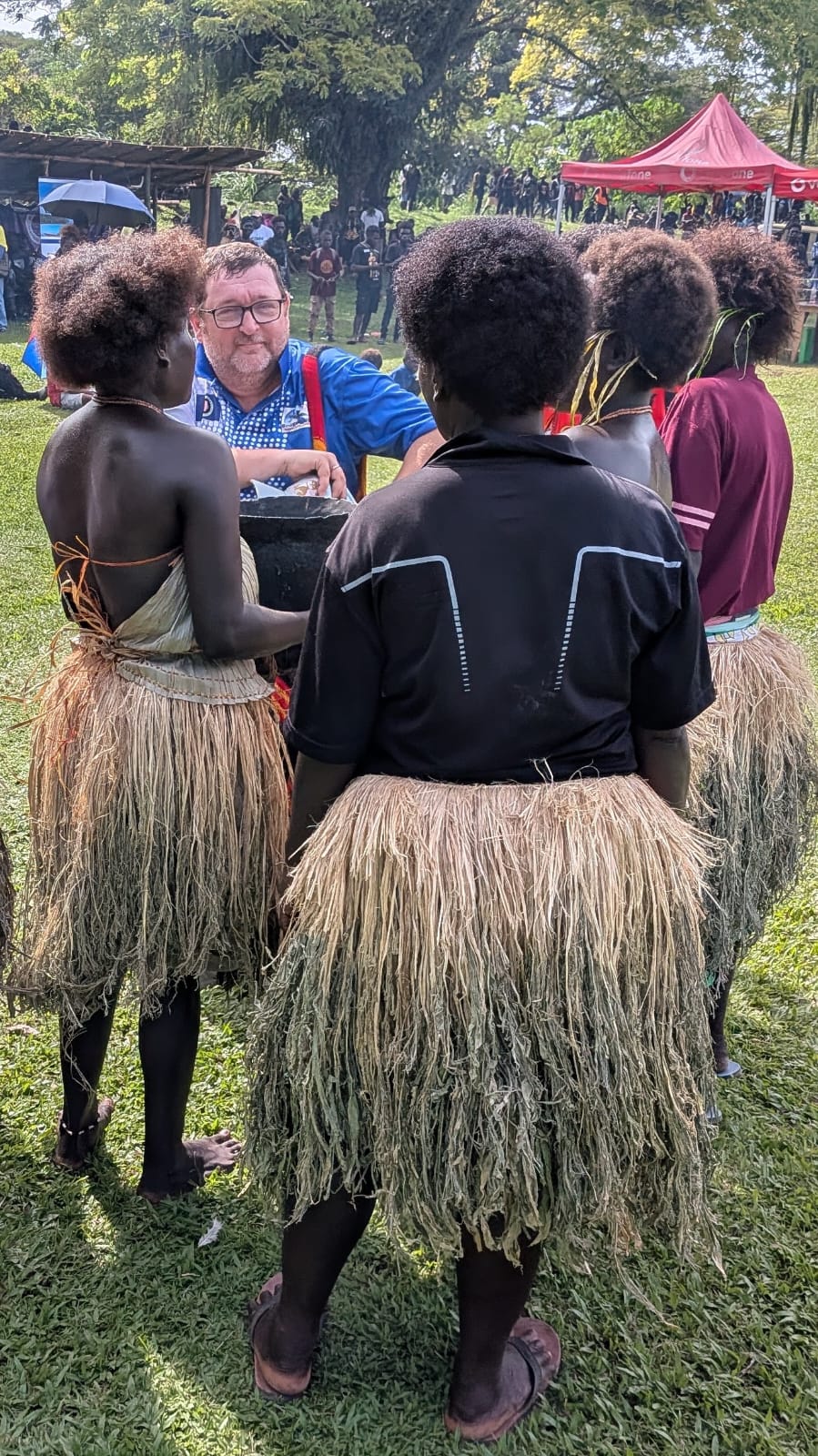
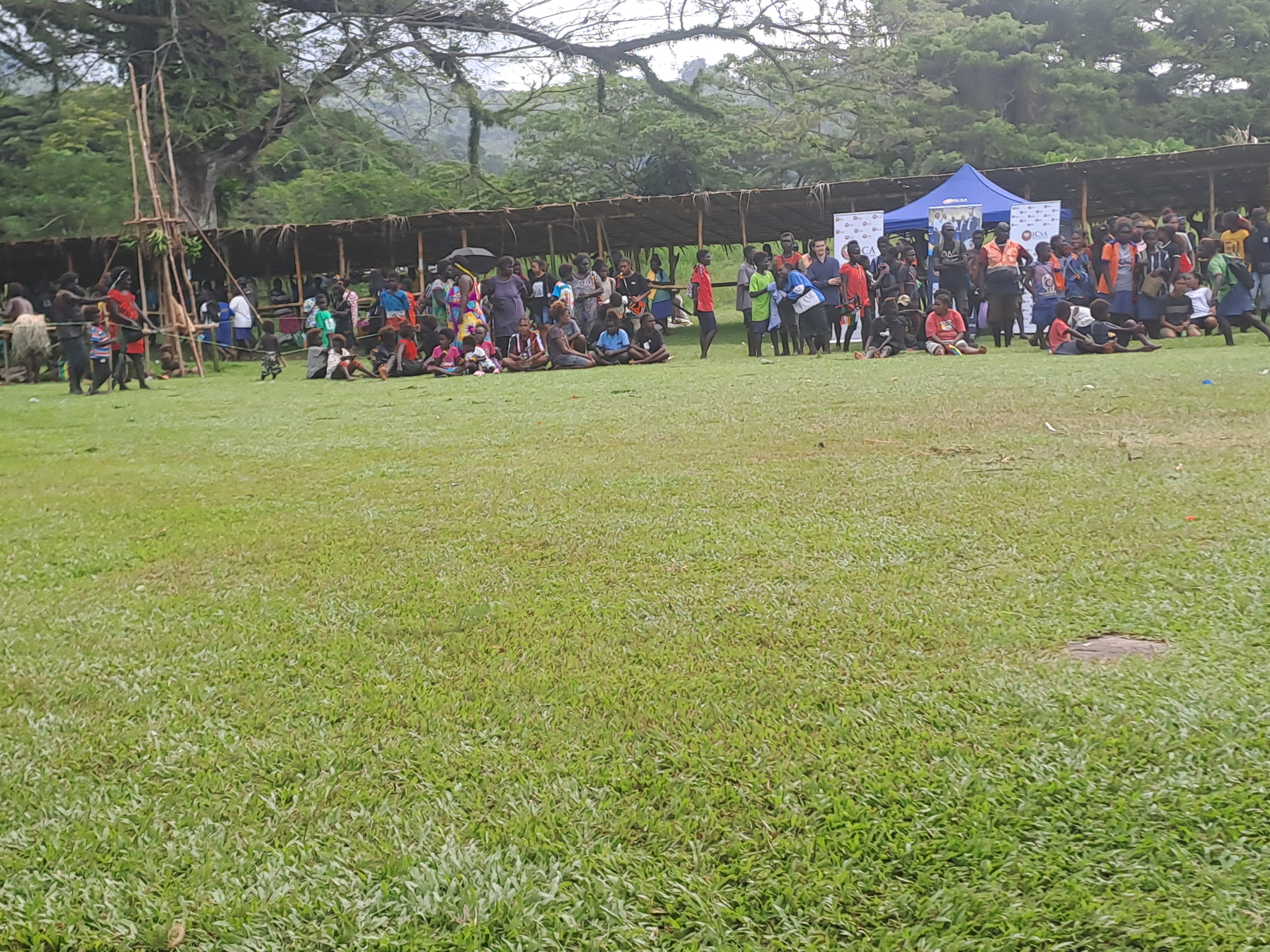
We set off around 10am the next day for the 105km drive from Arawa to Buin.
Our first stop, just outside Arawa, was the Panguna Mine. Nestled in the Crown Prince Range, Panguna was developed in the early 1960s, with production starting in 1972 under Bougainville Copper Ltd, a subsidiary of Rio Tinto. It quickly became one of the world’s largest open-pit copper and gold mines, generating over 45 percent of Papua New Guinea’s export revenue and about 12 percent of its GDP. The wealth was unevenly shared, with the PNG government receiving about 20 percent of profits while local Bougainvilleans saw only 0.5 to 1.25 percent. This inequality fueled deep resentment, and by 1988 the Bougainville Revolutionary Army launched sabotage operations, including destroying mine power infrastructure, which escalated into full-scale conflict with PNG police and military forces.
Today, the mine has been reclaimed by its original tribal owners and is worked informally by locals using makeshift equipment. We stopped to speak with a family living in a small camp and engaged in alluvial mining. They sift through the tailings in search of trace gold and copper, using mercury to separate fine flakes. Our host told us their group averages about 100 grams of gold dust a day, proudly showing a pouch of their findings, although a May 2025 study estimated the daily average per site at closer to 38 grams.


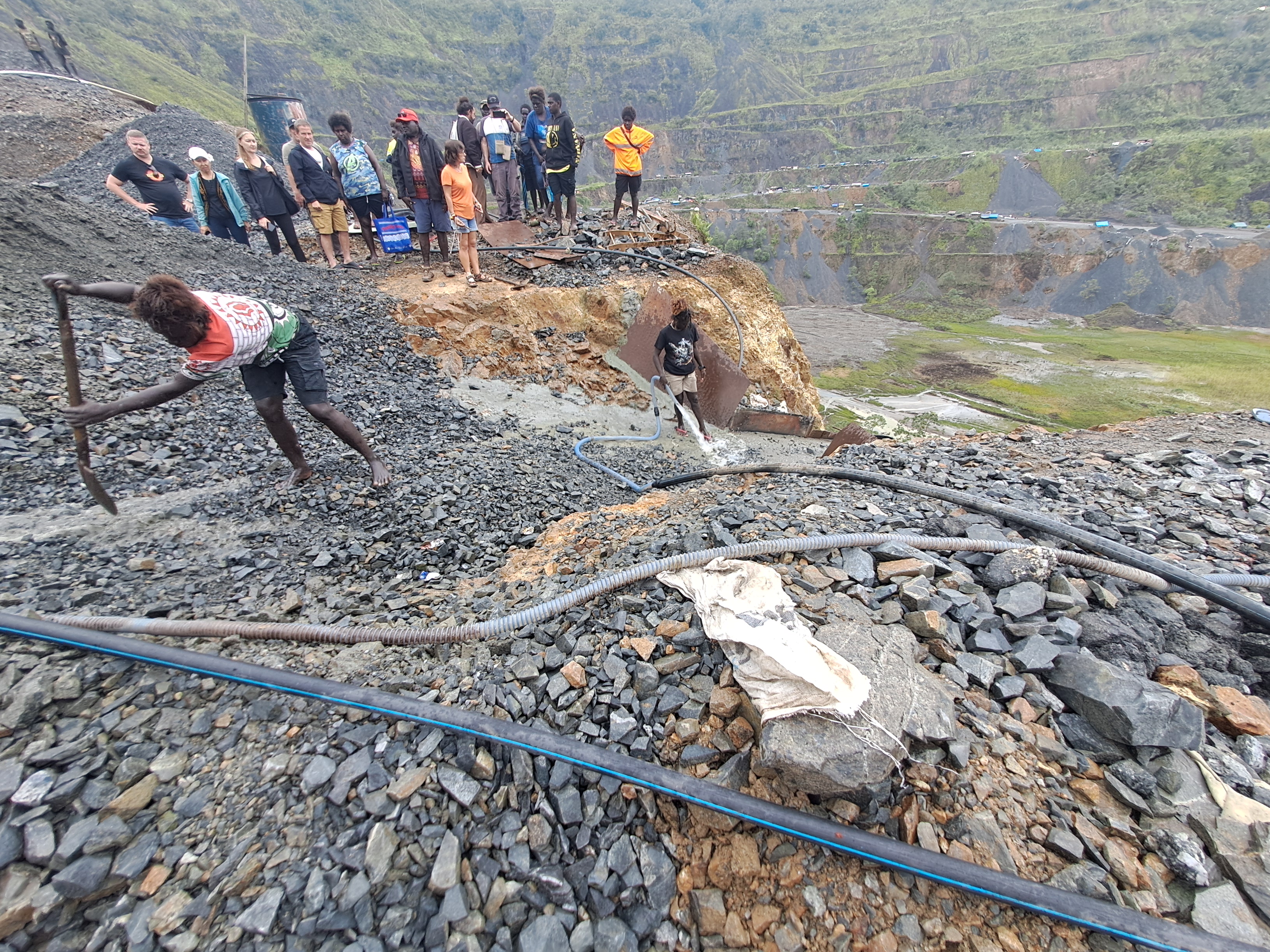

cbk
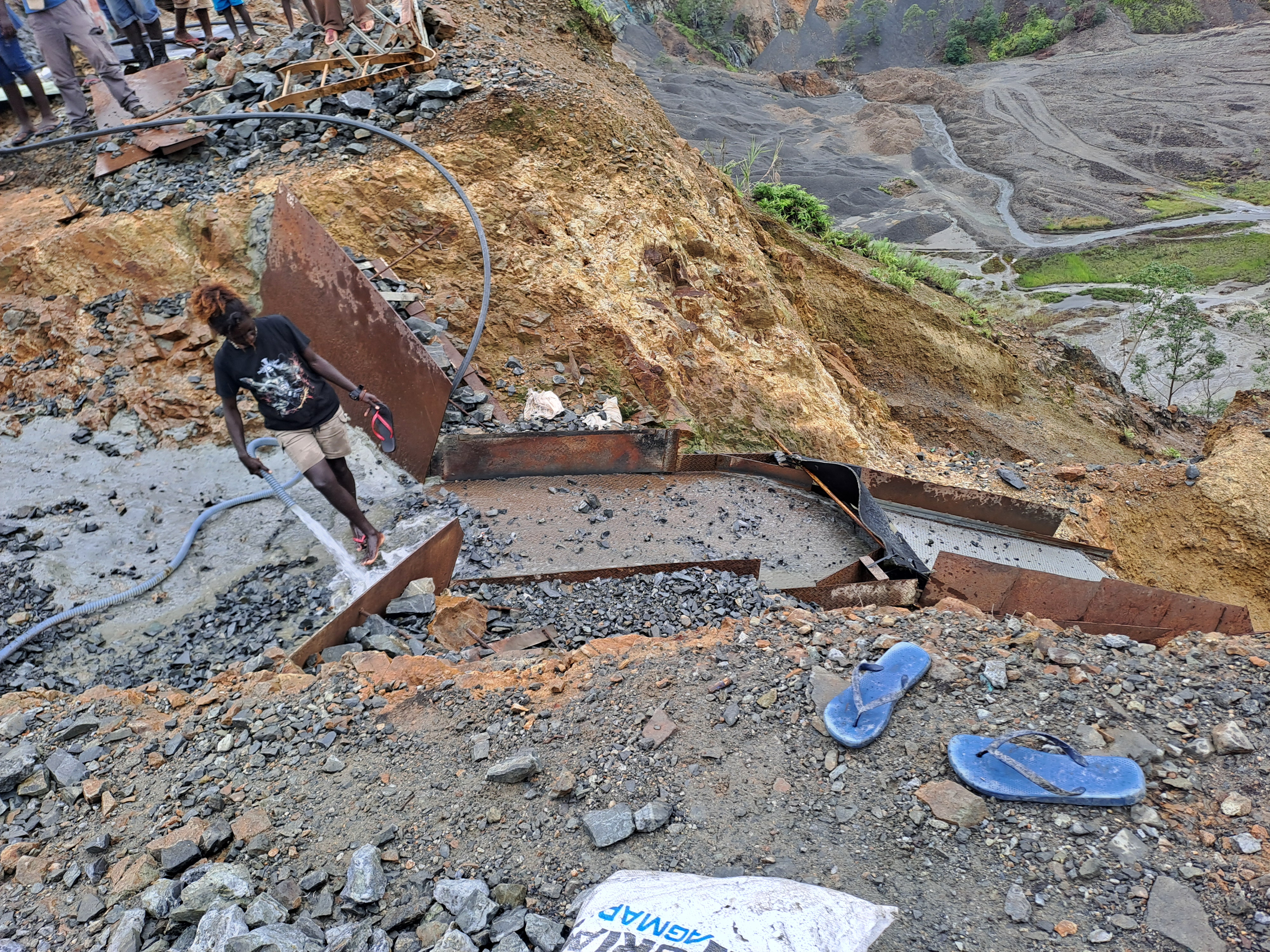
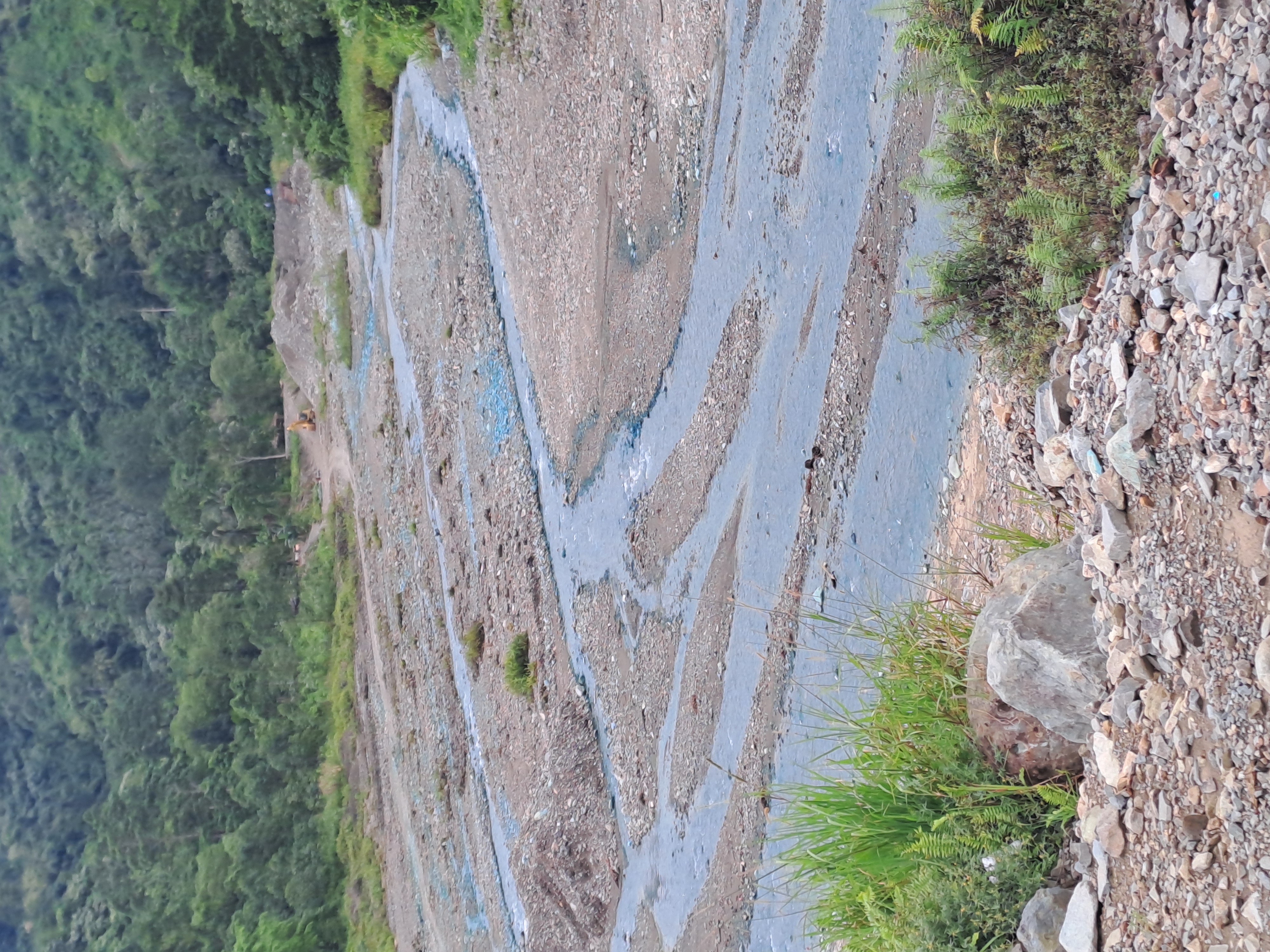
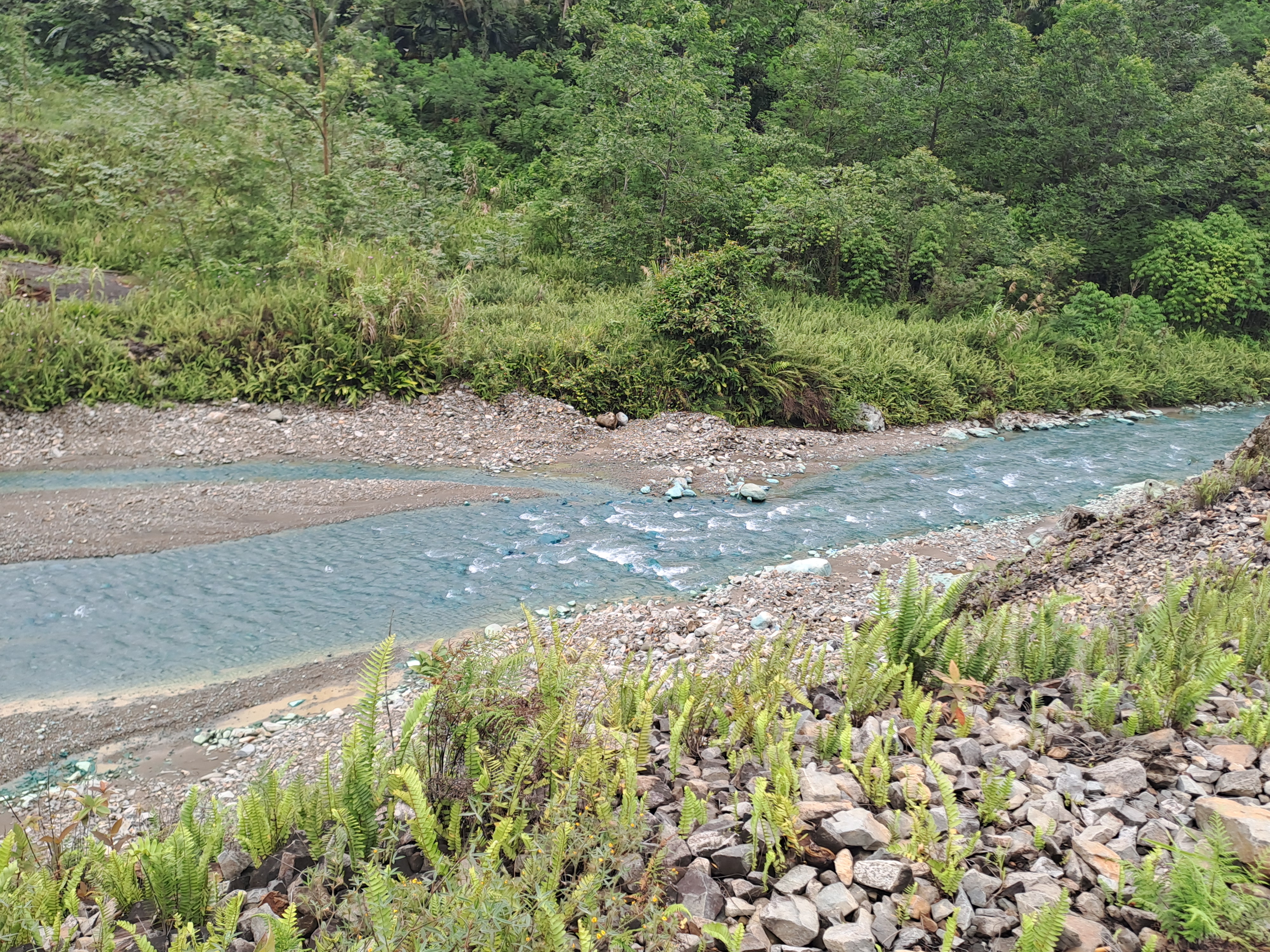
The road deteriorated to 4 wheel drive only and we got told to expect to cross a couple of ford’s across rivers. In all I counted 18 fords on the way to the main southern town!
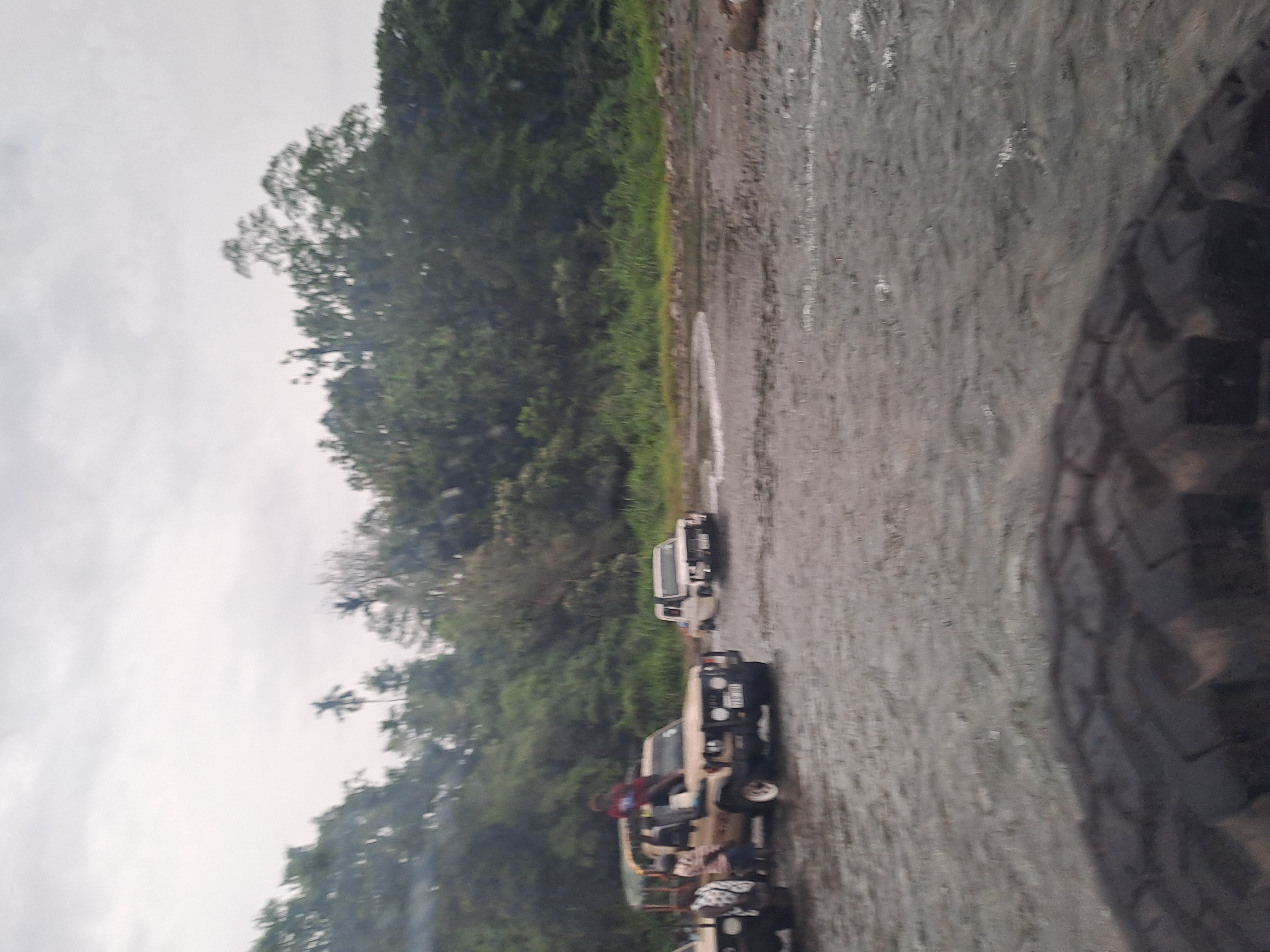
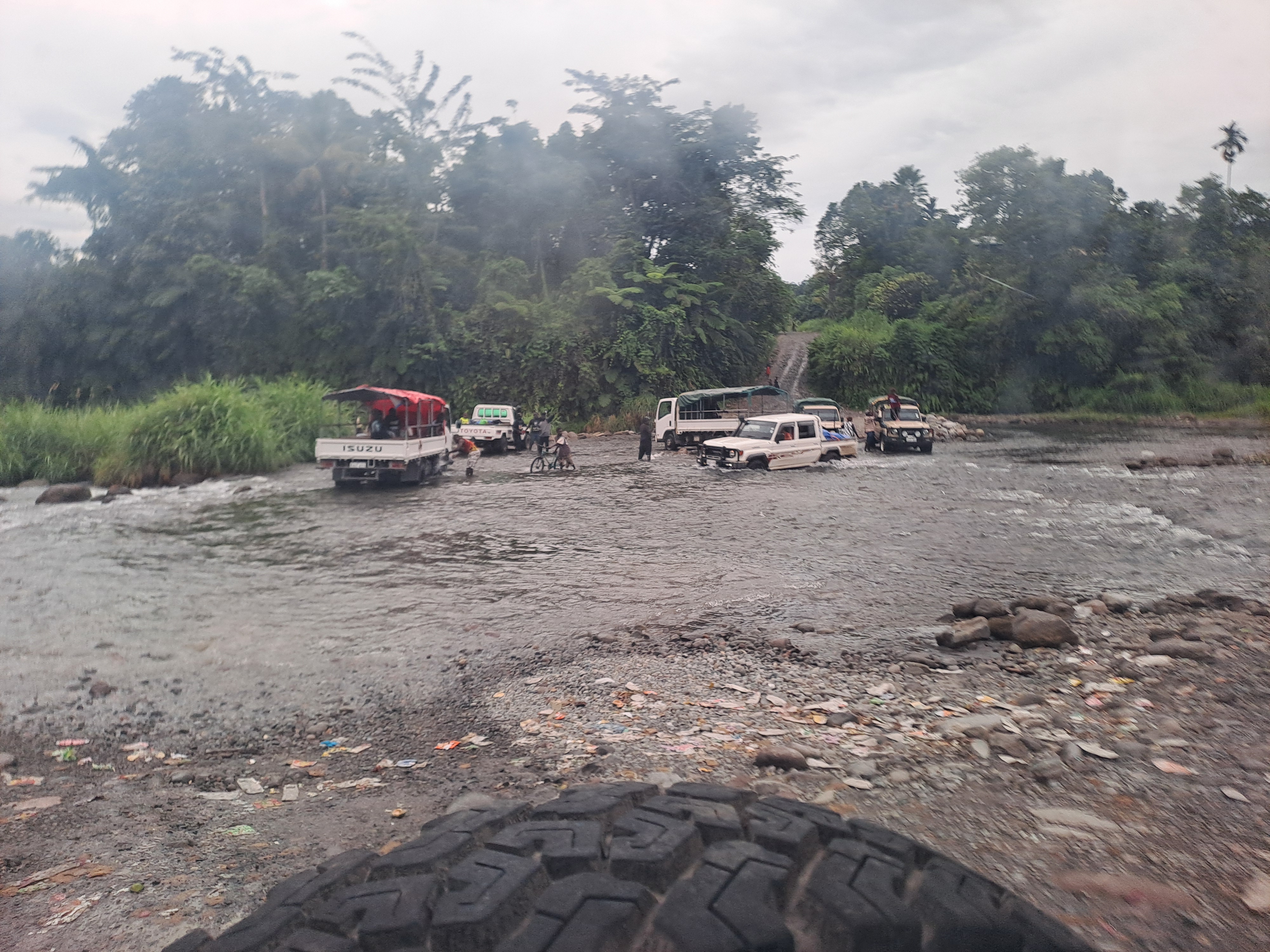
Continuing south, we visited Tonu, home to the self-declared Kingdom of Papaala, also known as the Mekamui Government. Here local leader Noah Musingku, styling himself King David Peii II, has built an alternative “sovereign system” that blends religion, finance and politics. Promoting his U-Vistract “national bank,” he claims divine authority and presents Tonu as the true seat of Bougainvillean sovereignty. While unrecognized internationally and by the Autonomous Bougainville Government in Buka, his system remains locally influential. We had brief interactions with his followers while our tour leaders secured clearance for us to return tomorrow.
By late afternoon, we arrived in Buin, the commercial and administrative hub of South Bougainville. After checking into the JMS Lodge, some of us ventured to the southernmost tip of the island to view the nearby Shortland Islands of the Solomon Islands, clearly visible across the water. Boats zigzagged between the islands flying Bougainvillean and Solomon Islands flags, though not a single PNG flag was in sight. The pier here functions as a border crossing for Bougainvillean and Solomon Islands citizens, and YPT is lobbying to open it for our groups as well. We also explored World War II relics, including a cannon, pillbox and extensive bunkers. Steven explained how, during the Bougainville conflict, rebel soldiers first relied on American rifles and machine guns left from the war before capturing modern weapons from PNG forces.
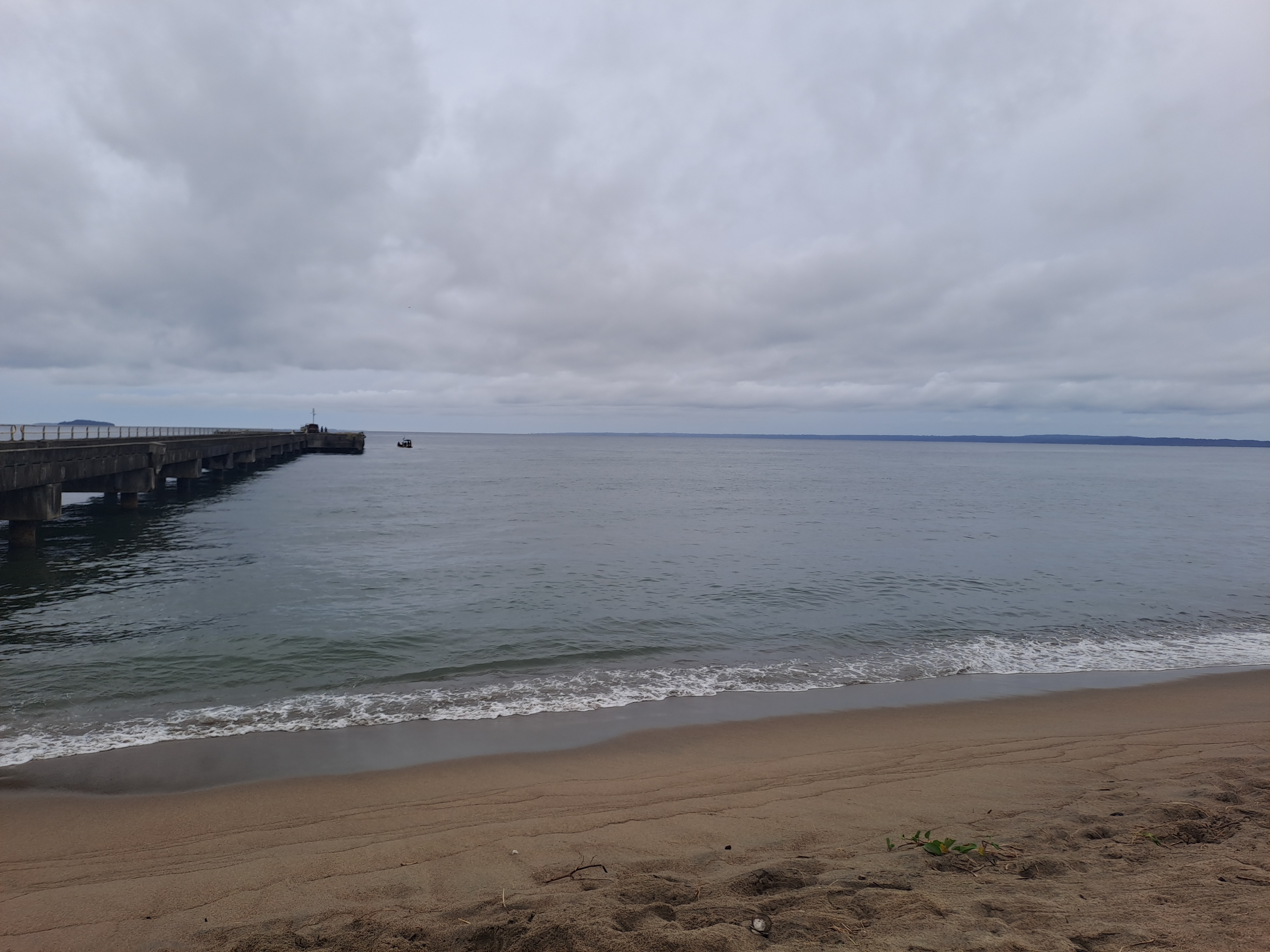

We ended the day with another chicken and chips dinner, followed by beers and firewater for those brave enough (not us).
I had realised during the day that my possible scratch was now raised and starting to leak pus, definitely not what I wanted and there was a second one next to it. They were also obvious enough for other people to notice. I put a dressing on them to protect them.
We rose relatively early, having breakfast at 7 AM and hitting the road by 8 AM.
About 30 minutes outside of Buin, we stopped at the New World Revolution Ugan Cultural Village. Here, the locals greeted us with traditional garlands and foot washing (a change from the hand washing we received upon arrival) and treated us to performances of traditional song and dance. We also admired artwork created by two tribe members, depicting scenes of village life and a tribute to Isoroku Yamamoto, the commander of the Japanese Imperial Navy who was shot down in Southern Bougainville (then part of the Solomon Islands) in 1943.



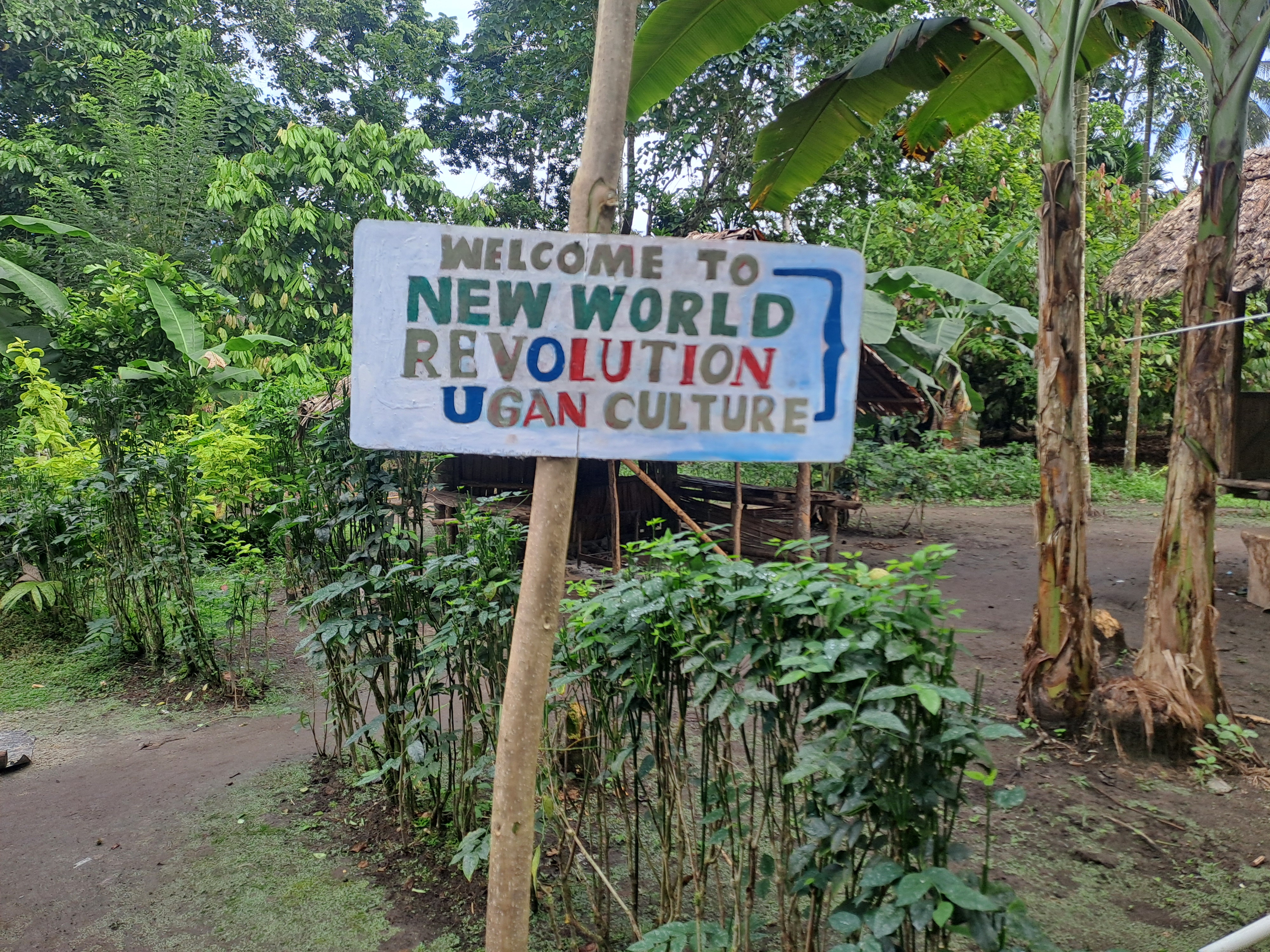
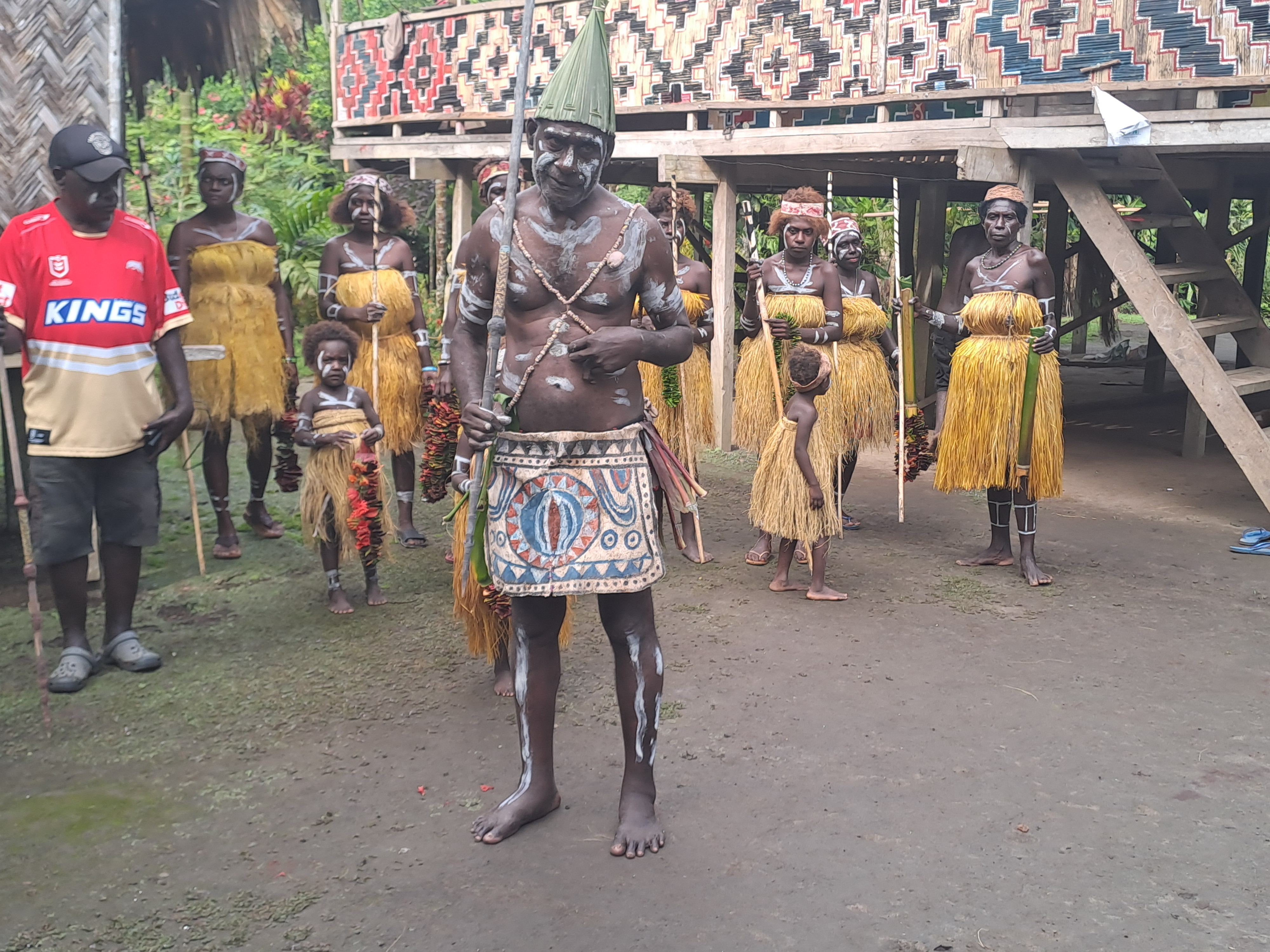
ohh
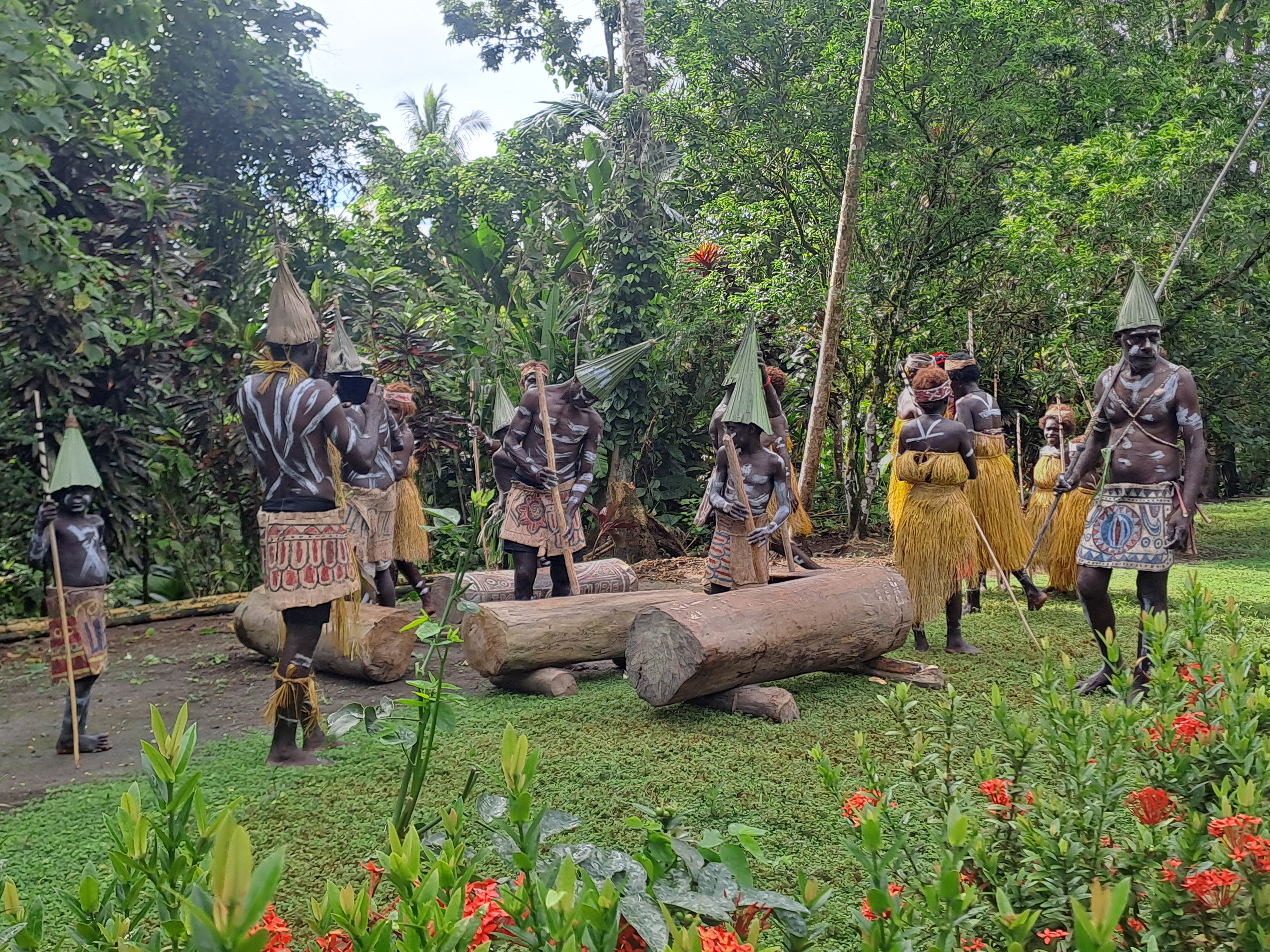
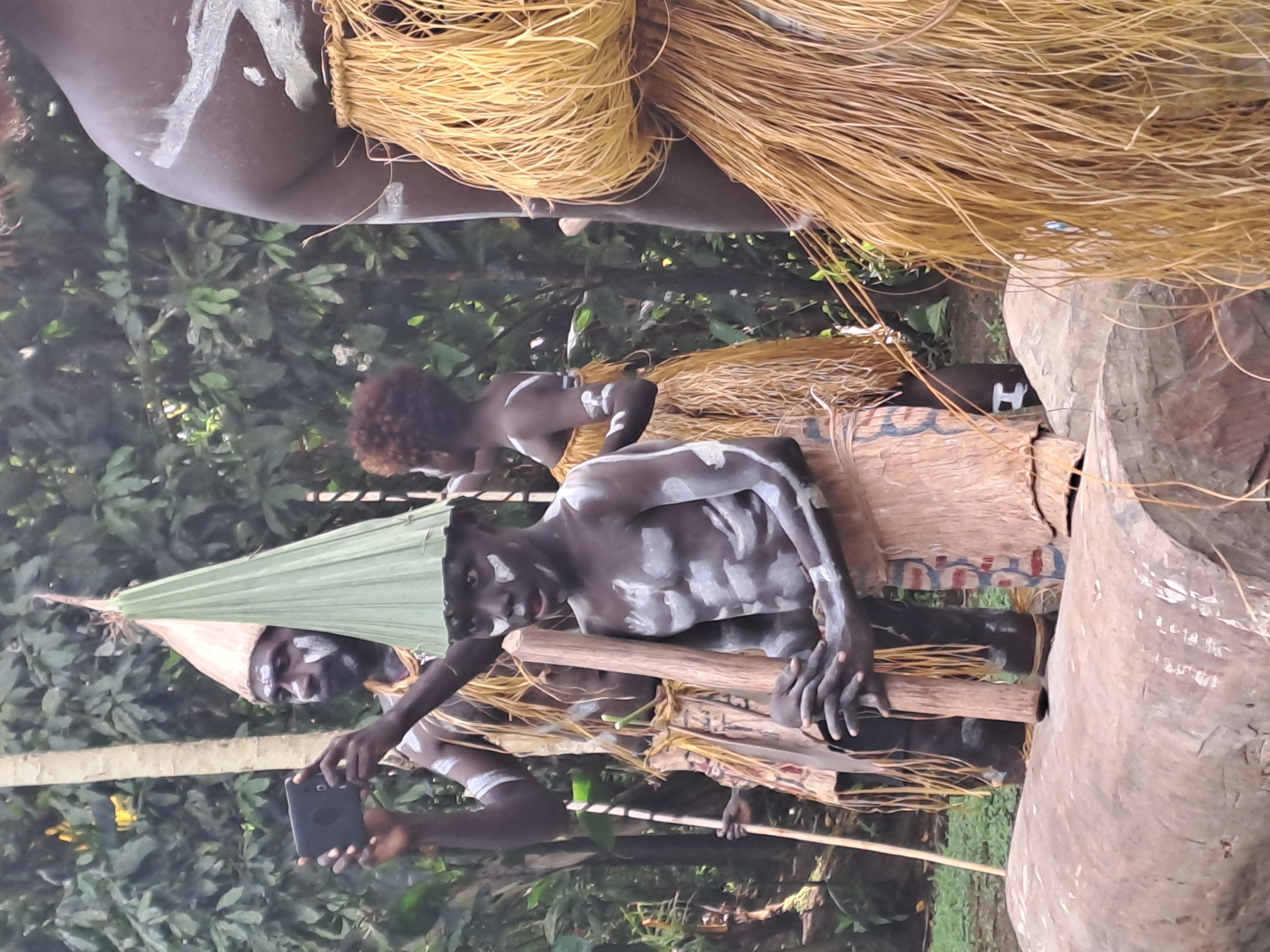
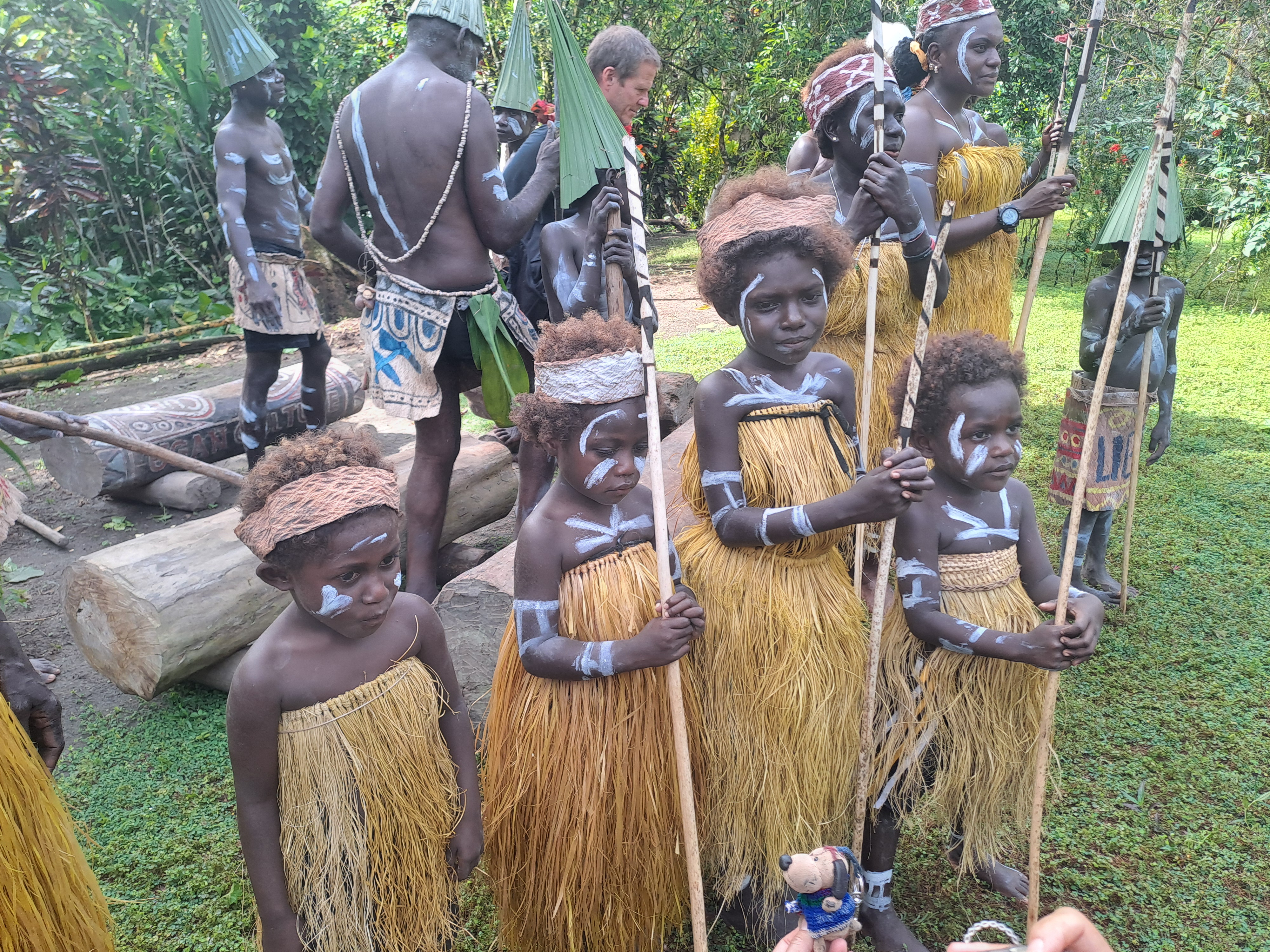

cbj
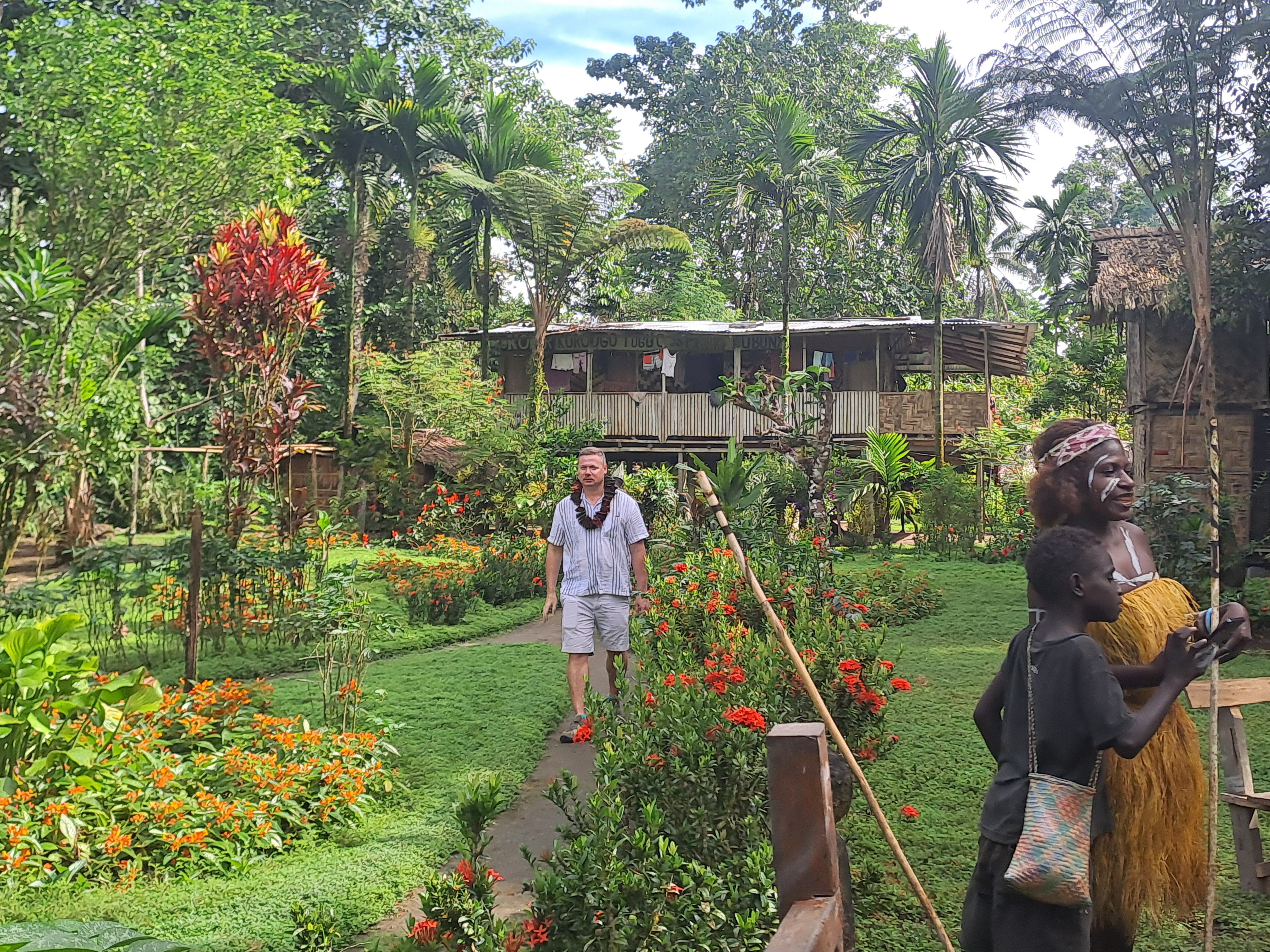
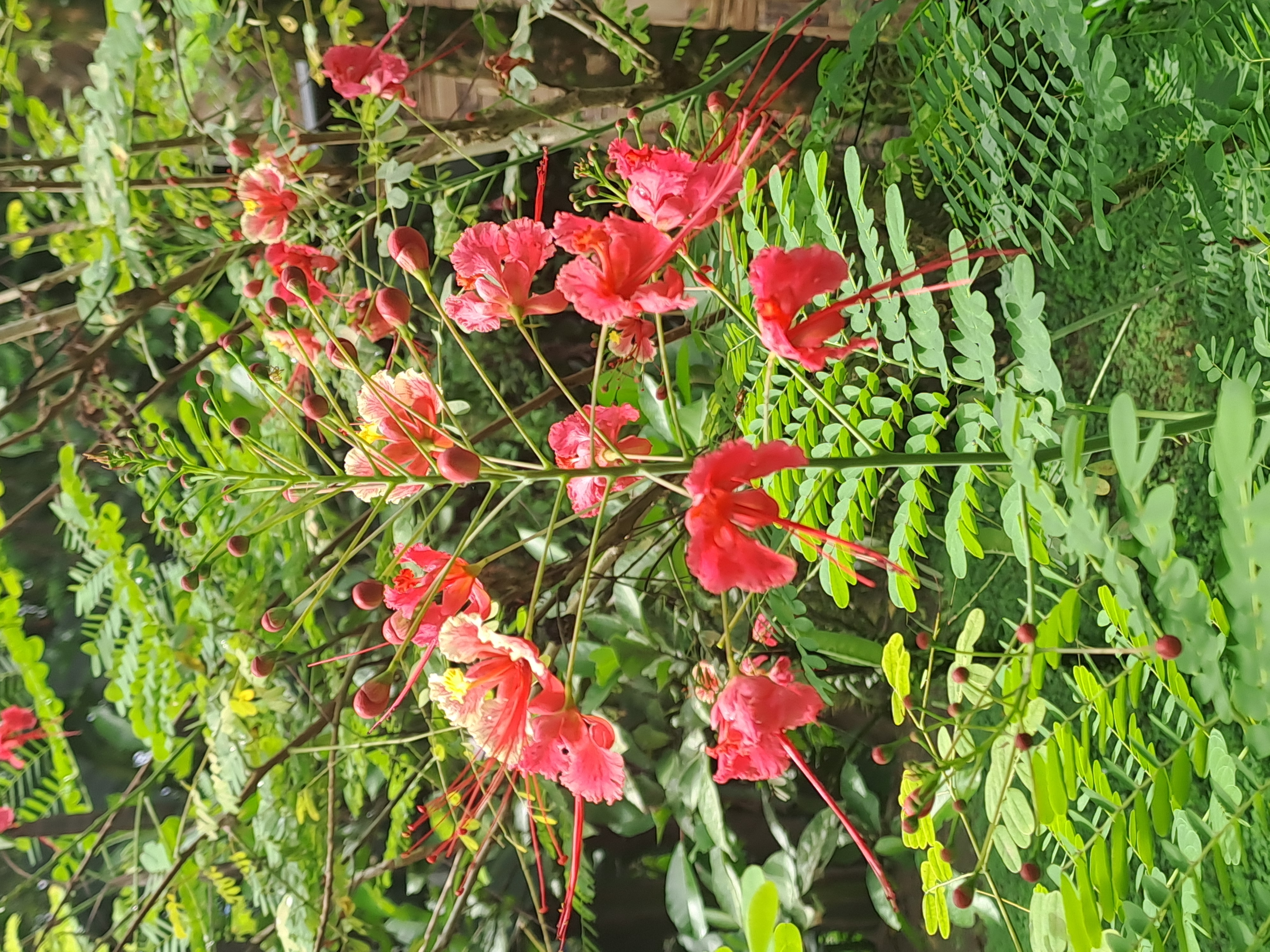
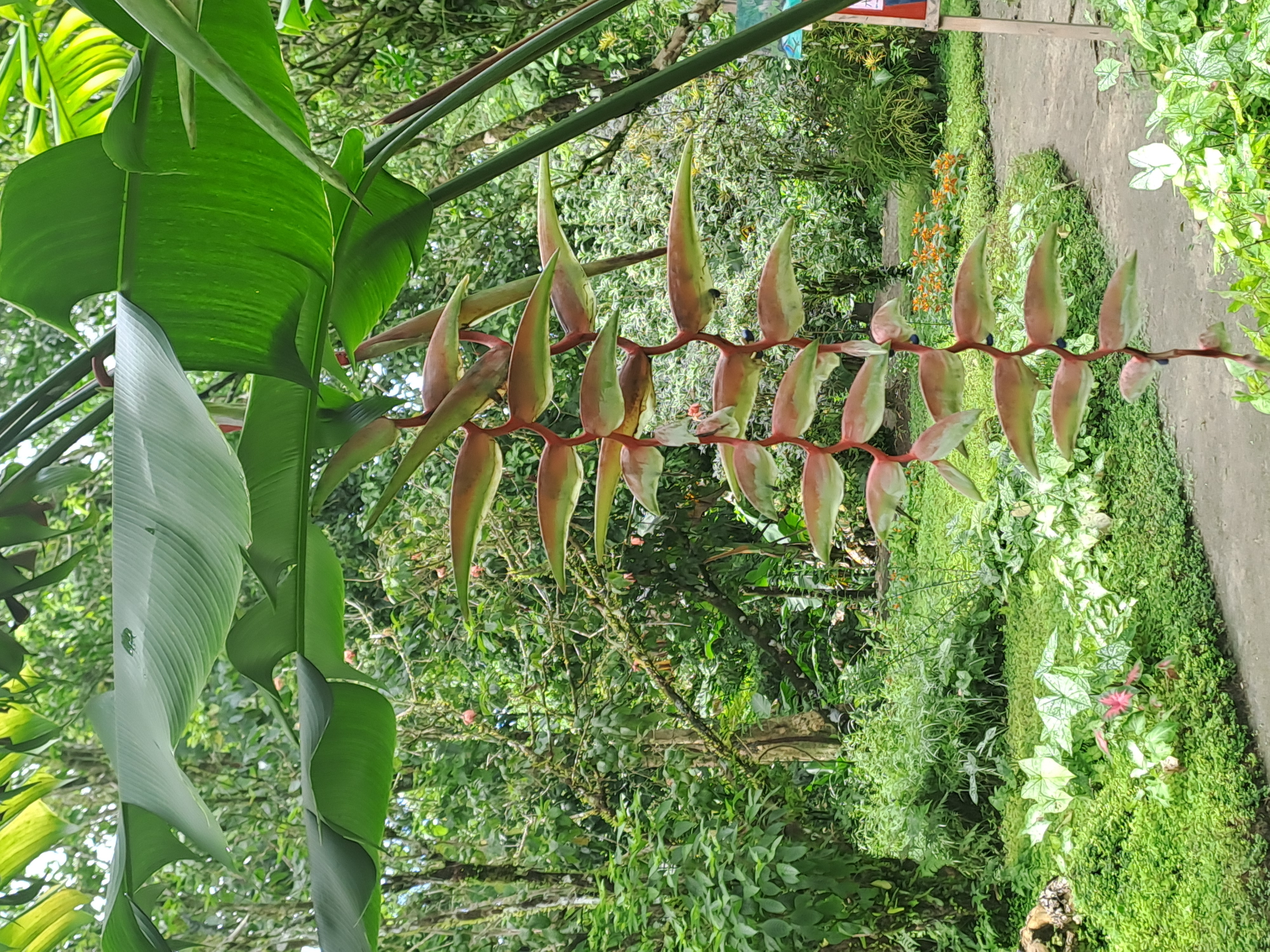
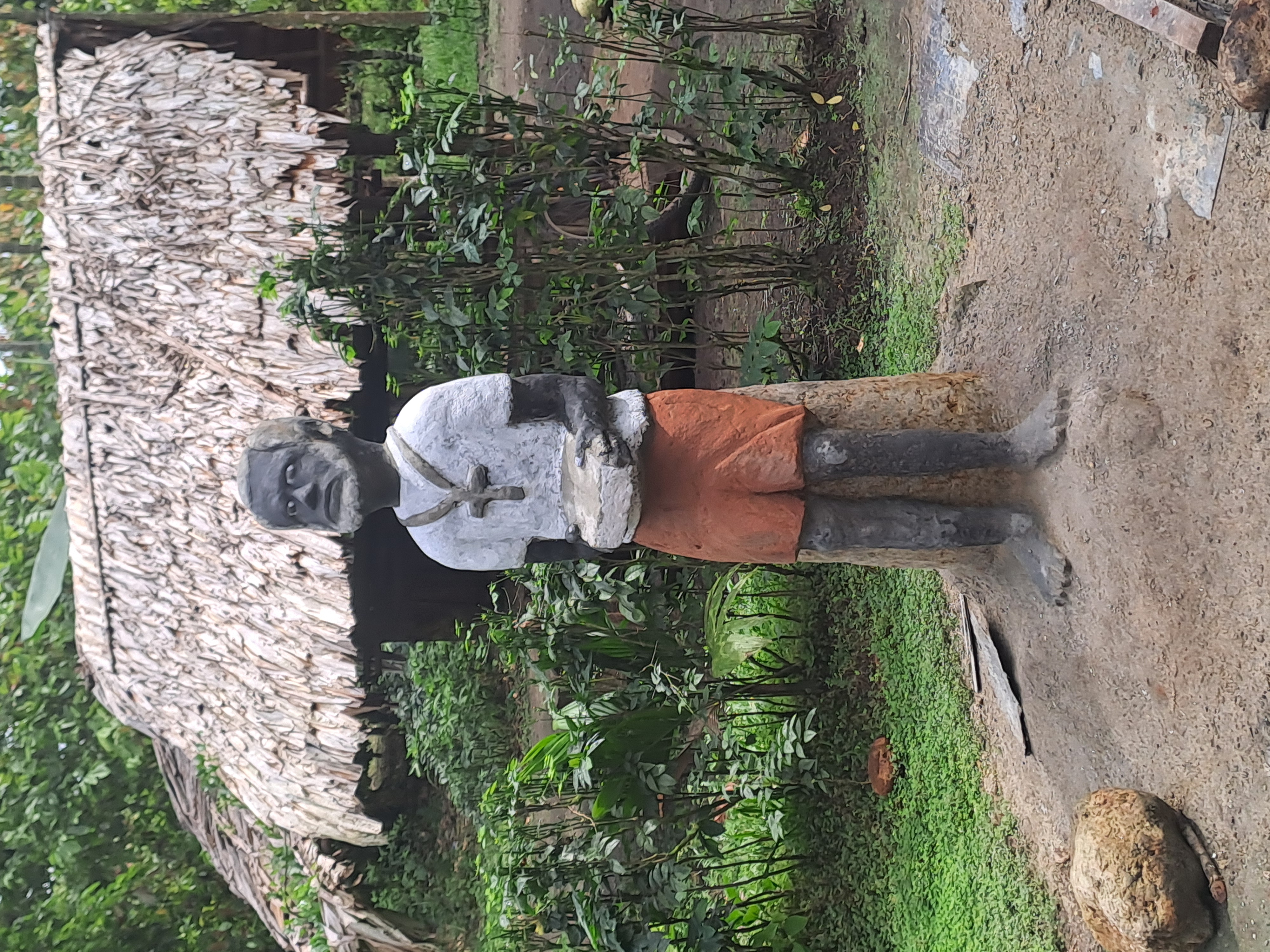
ihc

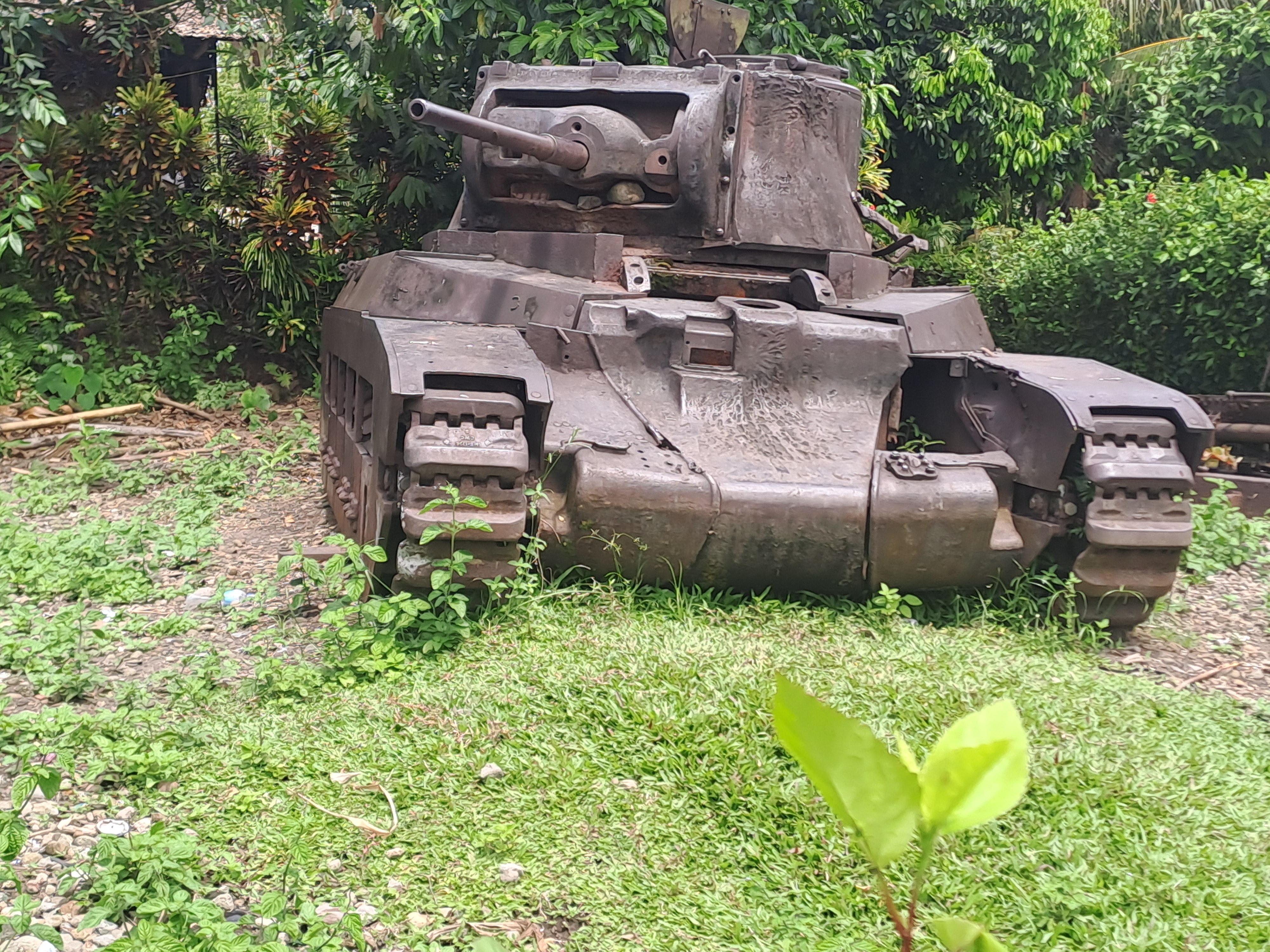
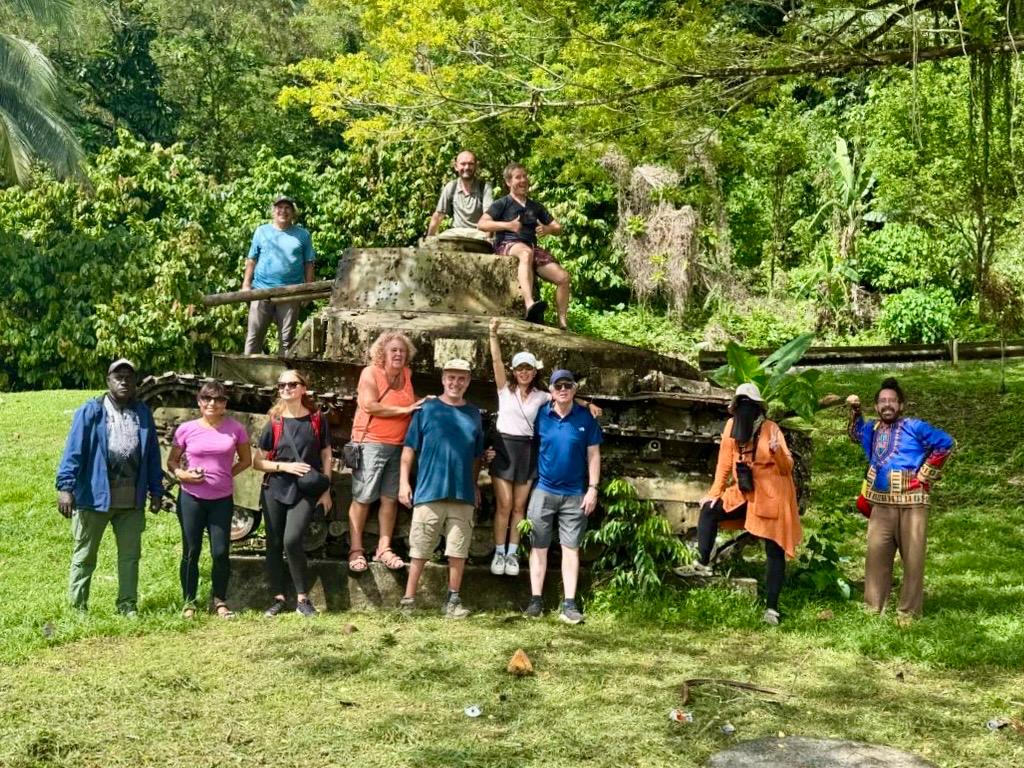
Next, we headed to King David Peii’s II (Spoiler: King Peii doesn’t PAY) U-Vistract Sovereign System at Tonu City, stopping along the way to look at a well-preserved American tank from WWII. Several members of his fiefdom, who had seen us the previous day, were pleased to welcome us back as we entered the compound. We first met with the finance minister, who delivered a lengthy dissertation on the unique financial underpinnings of the “system.” He claimed that it would soon bring prosperity and payouts to the system’s investors, some of whom lived on the property, along with many international investors worldwide.In simple terms, he explained that His Majesty (“HM” for short) had created the BNK (Bougainville Kina) as a source of wealth for an independent Bougainville. However, despite the system’s international prestige, the currency can only be used within the compound. I ended up paying with PNK for the only item available from the canteen: a PNG-produced ice cream novelty called a Lik Lik. As soon as our group expressed interest in purchasing some, and the finance minister struggled to keep up with demand, nearby members of the system eagerly pulled out their cash to exchange with us at a generous rate of 1:1 with PNK. U-Vistract is considered by many to be a Ponzi scheme. The founders claim that the plan has always been to back its assets with in-ground natural resources, including copper, silver, gold, zinc, and others, though this has yet to materialize. In 2006, a confrontation between the Autonomous Bougainville Government and HM’s Sovereign State resulted in casualties on both sides. In 2021, the then-president of Bougainville held a meeting with HM, where a formal agreement was signed to end hostilities – for now.
After the currency exchange, both officially from the finance minister and through black market exchanges with locals, I made my way to the commercial bank, where I opened a savings account and deposited 500 PNK, granting me an audience with HM. Steven and Gareth were also allowed in, having opened similar accounts last year. After passing through two “security checkpoints” (more like sign-in sheets), we were ushered into HM’s royal court, where he emerged wearing a red jacket, a blue sash, and a traditional crown made of brown and tan beads, with his name “King Pei II” displayed prominently on the front to avoid any ambiguity. His name was also featured on a large green banner above his throne.Let’s just say that his accommodations and court were quite modest, given estimates of the wealth he might possess. Despite having an international following, his small tablet appeared to be the only working electronic device, while several dusty laptops and cell phones sat among stacks of old papers and other odds and ends. HM shared his story of visiting the U.S. in the 90s, observing the destitution of some people there, and vowing to create an alternative system to the IMF and World Bank, which he claimed to have accomplished. He assured us that we would witness the greatness of this system when we returned next year.
Oir leaders negotiated with HM to allow our group to open foreign currency accounts with a minimum deposit equivalent to $20 USD in order to meet him. However, he stipulated that those with foreign accounts would not receive the 10,000 BNK he was depositing into my account for my 500 PNK deposit.Seven members of the group opted into the system, opened accounts, and met HM, while others continued their conversations with locals. Among the claims made by HM and the locals, the following stood out:
- By next year, they expect to have devotees in space, on the moon, and on Mars.
- HM plans to write thousands of books once the system is fully operational.
- HM received a letter from the IMF warning him to cease operations; he implied that if he weren’t onto something significant, he wouldn’t have received such a letter. The Rothschilds were also mentioned in this context.
- HM typically asks foreign investors to wait several months for an audience but was offering us emergency sessions today.
- A Bulgarian physicist predicted the rise of a new superpower from the South Pacific.
The rise of the super power not extend to toilets though. A lovely lady who was an advocate of the Sovereign kingdom was very embarrassed to explain to us that we had to hide in the trees to go. Getting our bare bottoms out seemed a bit of a let down after having to get our scarves out to cover our shorts to be allowed in!
Some went in to see HM in two separate groups, and in each case, he delivered his spiel about the system, fielding questions and posing for photos.
Unfortunately by this point I was suffering from my infected bites and shamefully went to sleep on the grass instead, I did kick myself for a missed opportunity afterwards

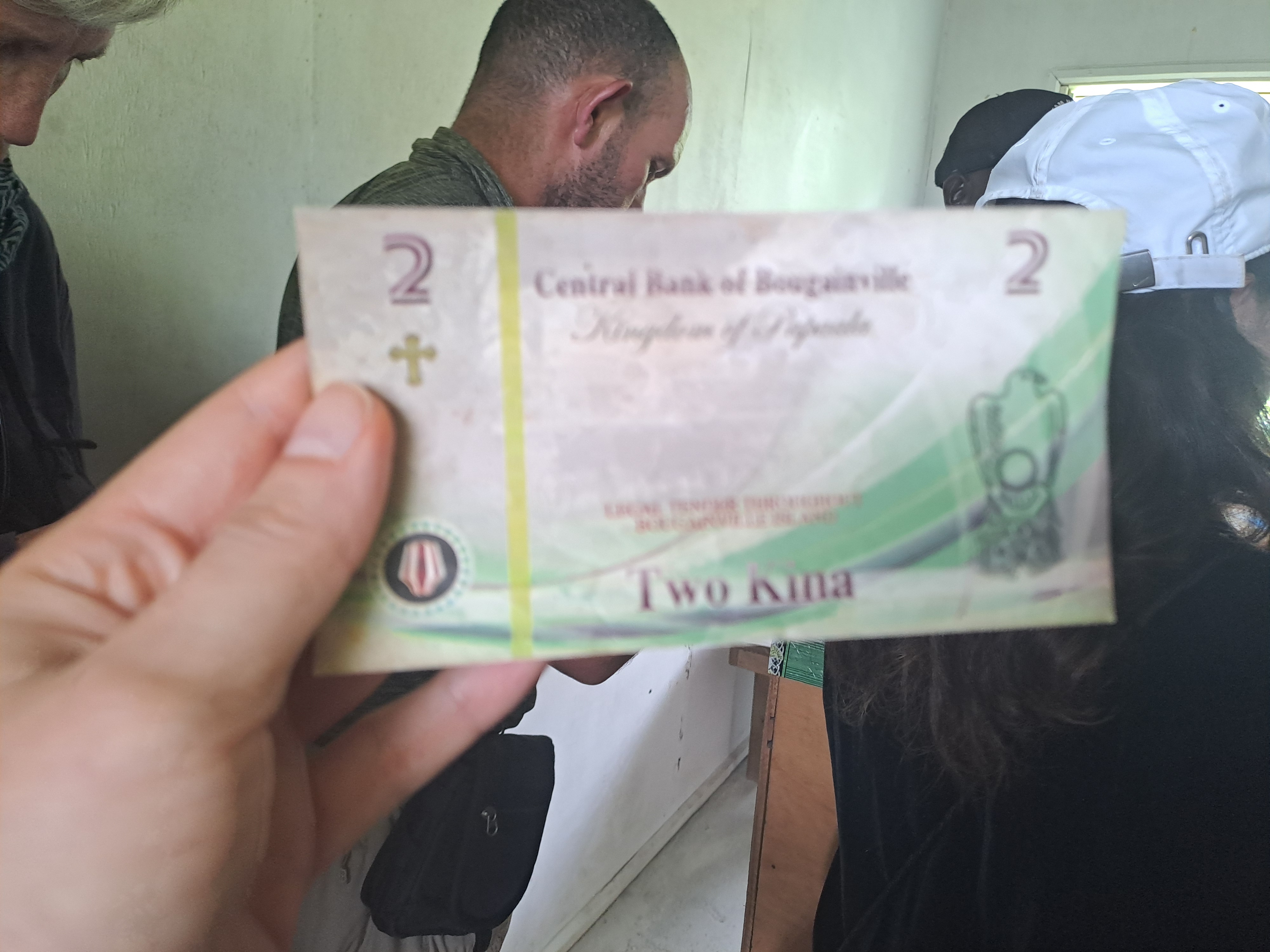
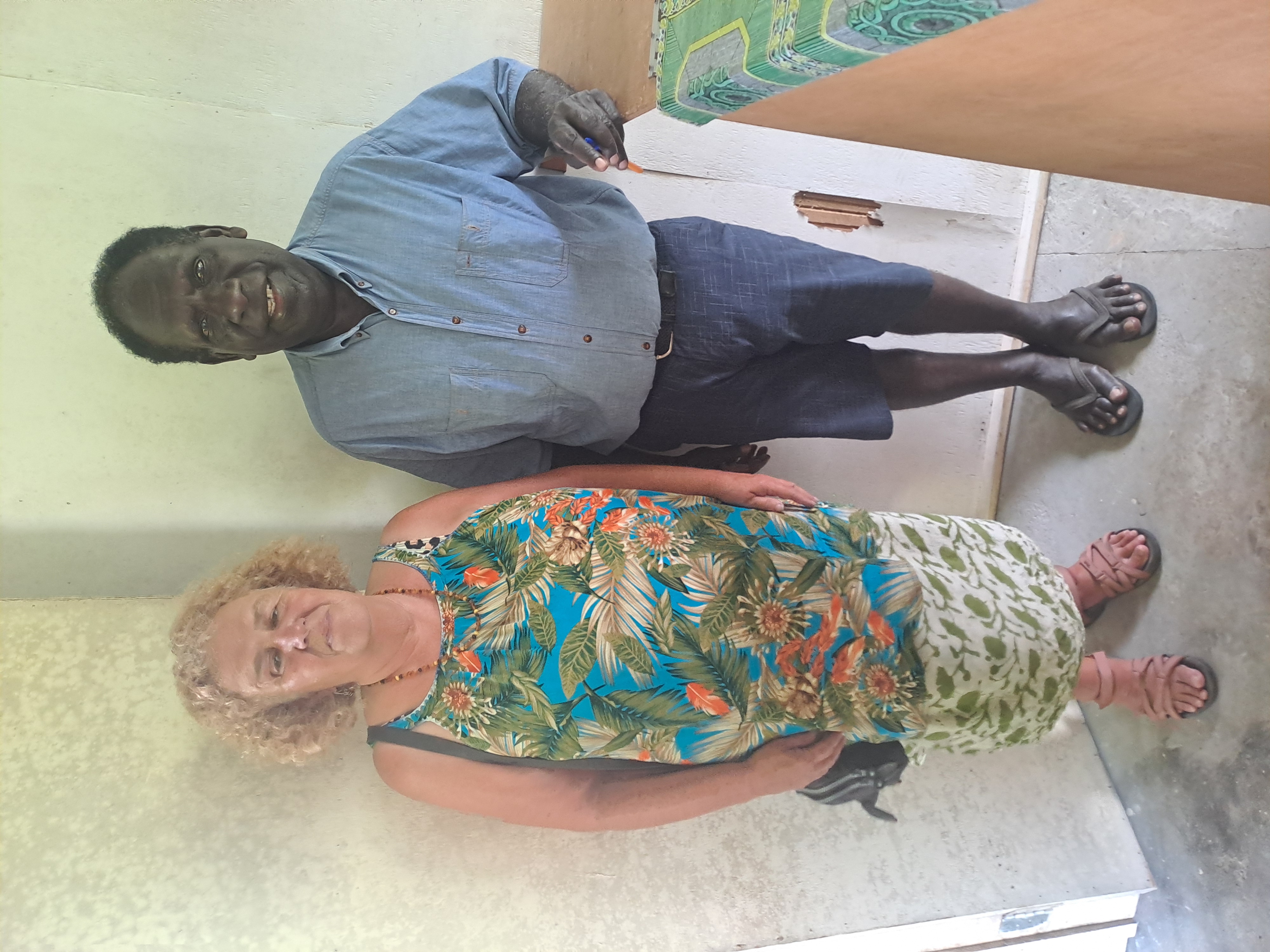
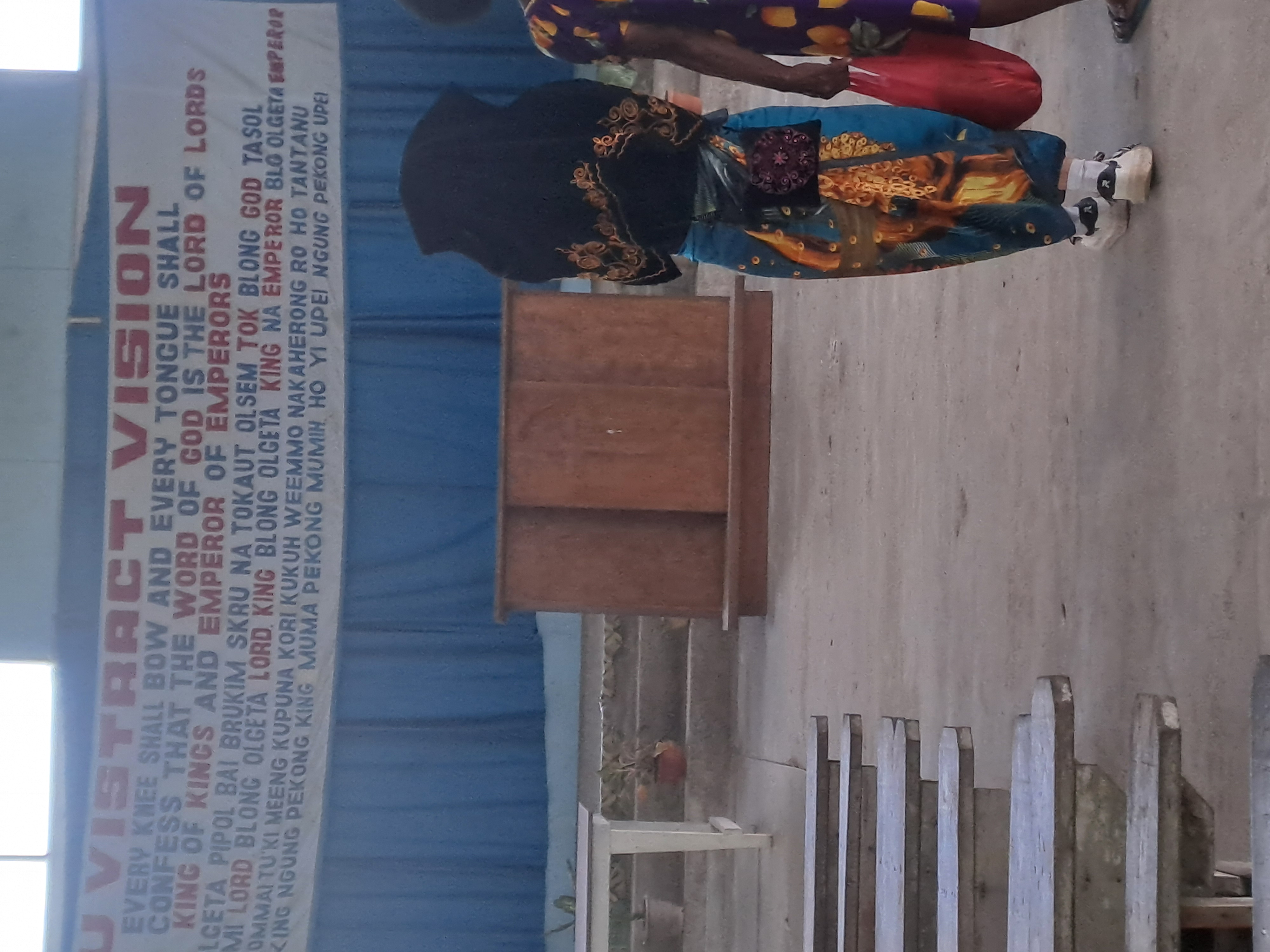


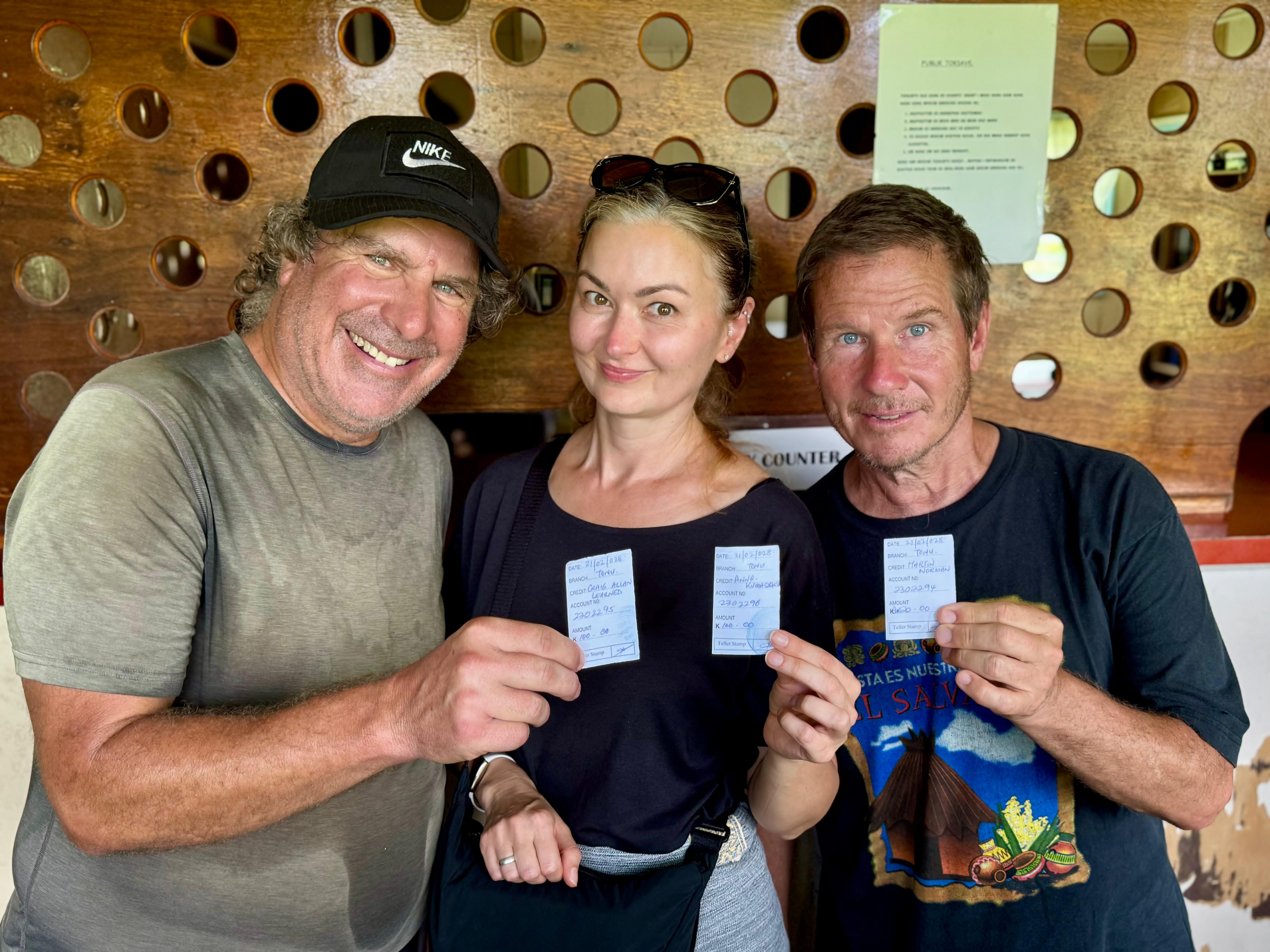
On the way back we stopped at the old mine workings, now a sensitive area as the locals are worried about the future.


We returned to Kieta, where we took boats out to our accommodations on Asio Bay as it was getting dark.
Here we discovered that the accommodation wasn’t enough for all of us so it was a quick dinner and then a second boat trip in the dark through the reefs to find our just built accommodation.
I made a trip upstairs to the light to be treated by our doctor and fellow traveller with what was available, donated antibiotics and iodine on my now swollen leg. I was firmly told, no swimming- so frustrating with a day of island hopping ahead of us.
On our last full day in Bougainville we had a relaxed 8 a.m. start before heading out for island hopping.
Before this though we were shown the local trade items. Various types of sea cucumbers all treated for sale. We also saw coconuts being harvested and the outer husk stored for sale. Strangely they don’t eat the sea cucumbers here or know how to cook them, just how to prepare them for market





Our first stop was Takanupe Island, off the east coast of Central Bougainville. Its defining feature is the kakunibarra, a vivid blue lagoon larger in surface area than the island itself, best appreciated from above with Kaira’s (our doctor fellow traveller) drone. The lagoon was full of marine life, including one of the densest gatherings of starfish many of us had ever seen. Beyond the reef rim the seabed drops off steeply, creating a dramatic wall typical of Bougainville’s volcanic islands. Several of us snorkeled along the reef edge to see it up close.


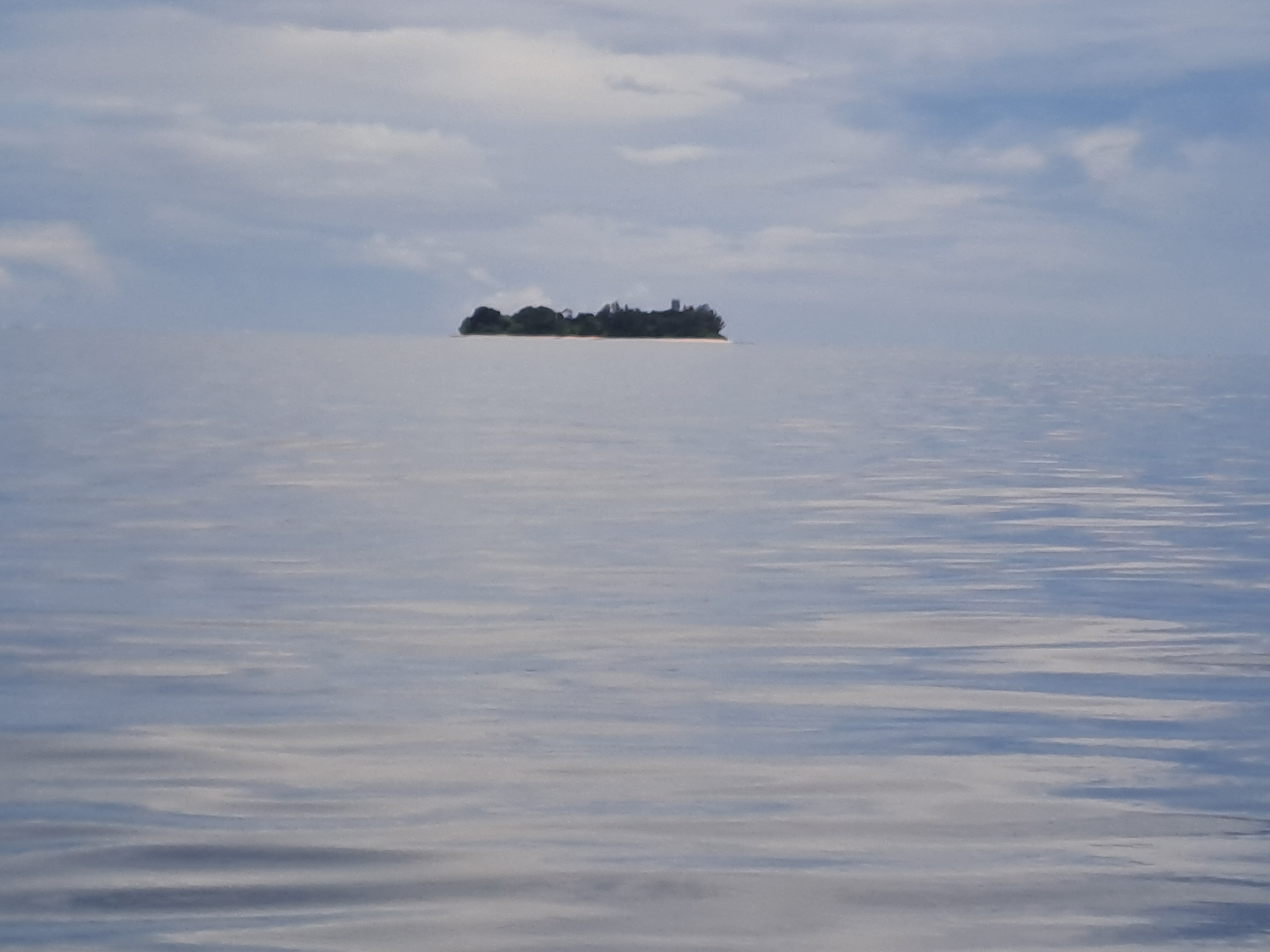


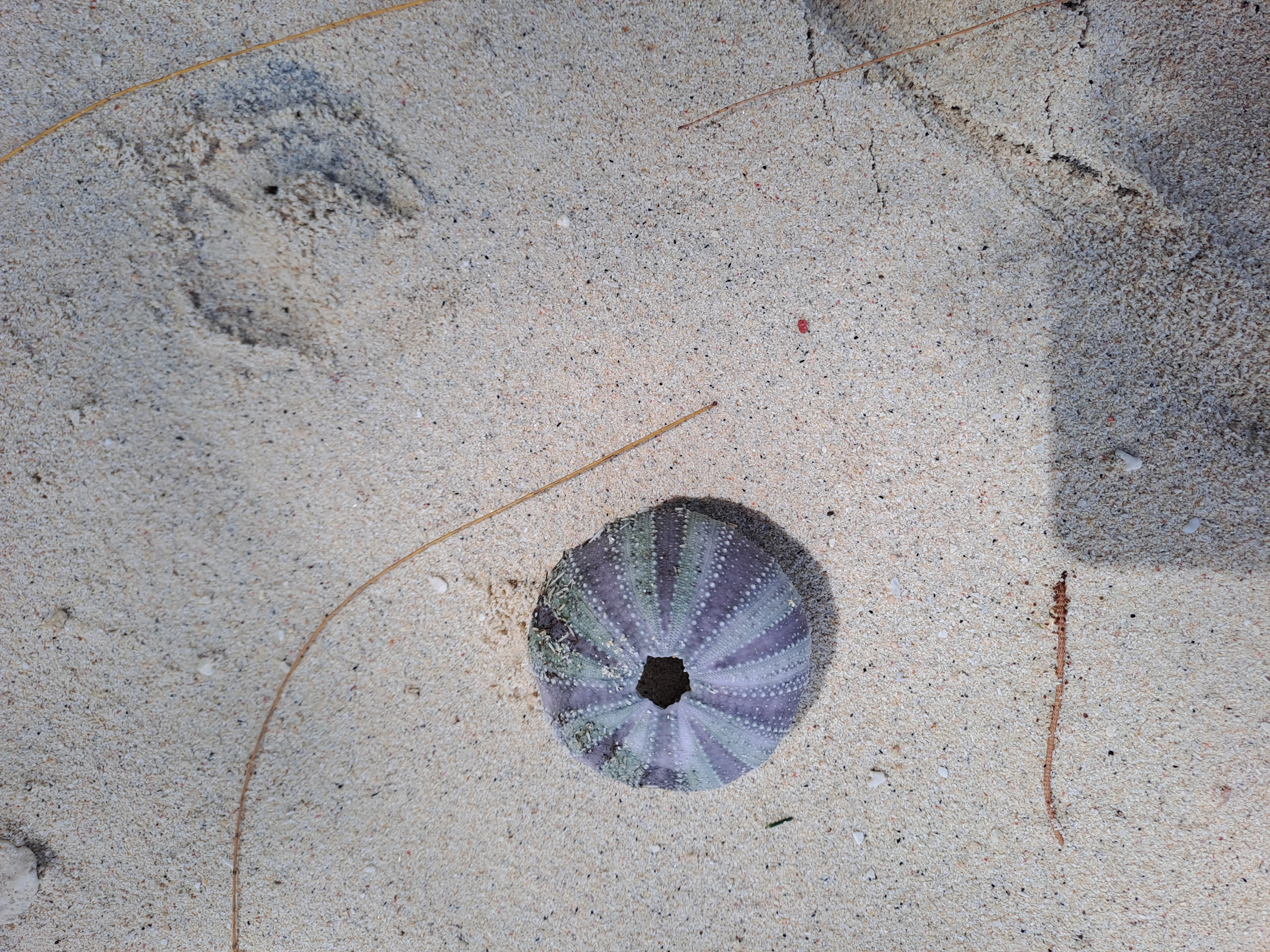
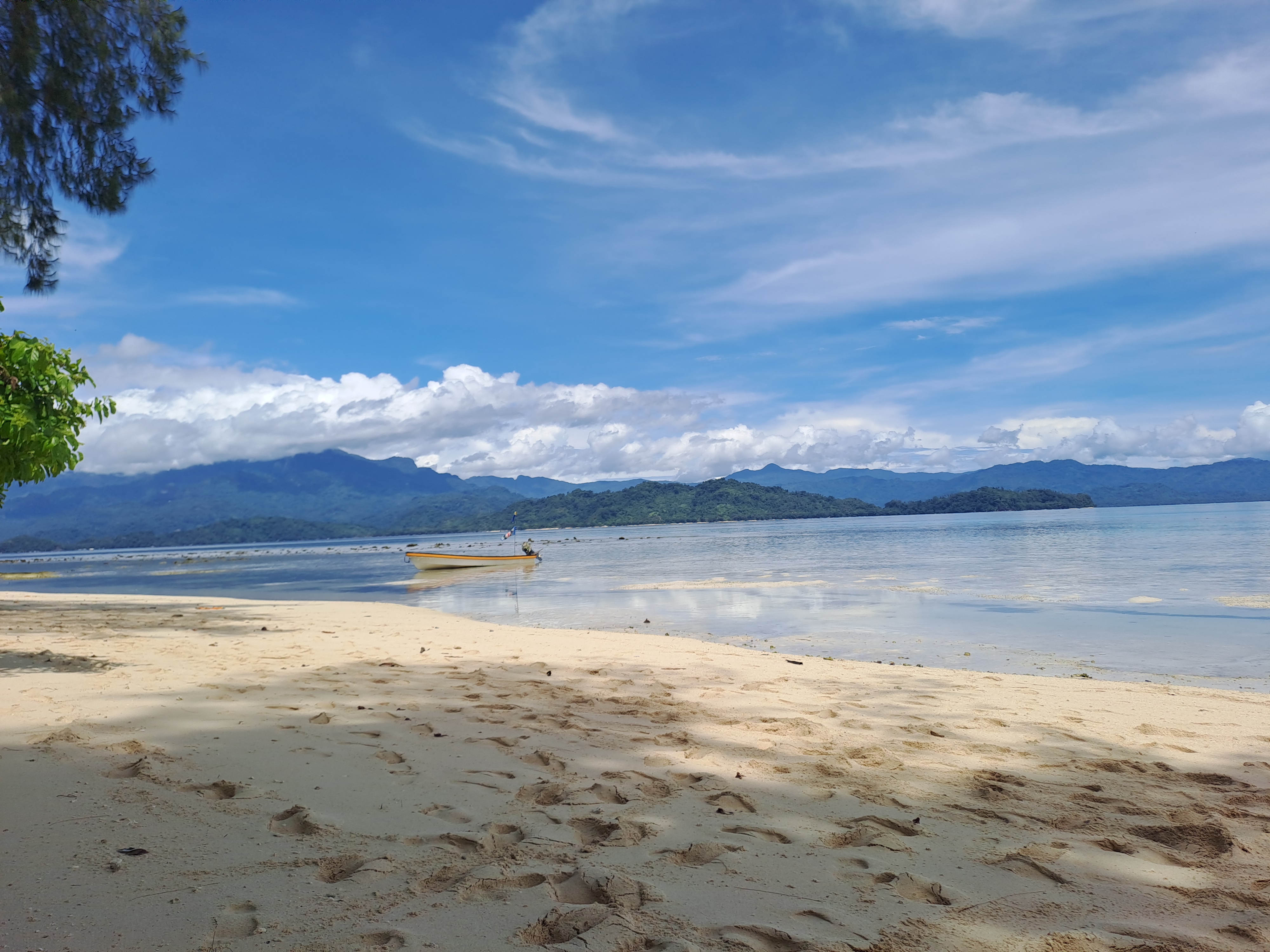

Unfortunately following doctors orders I paddled in shallow water and contented myself with what I could see there.
We returned to Freewave for lunch and then unfortunately I had to sleep due to the infection and missed the final stop Pidia Village, best known as the birthplace of actor, playwright and cultural leader William Takaku (1954–2011), Sylvester’s uncle. Trained at NIDA in Australia, he directed the PNG National Theatre Company, played Man Friday in Robinson Crusoe (1997), and revived panpipe and storytelling traditions through the Reeds Festival. Before his death in 2011 he advised the production of Mr. Pip as a cultural mentor, and though he passed before filming, Pidia became the movie’s location with Hugh Laurie starring in the adaptation of Lloyd Jones’ novel. The film brought international attention to the village, showcasing its beaches and community.
I got woken and we ended the day back at Freewave with a farewell feast of fresh lobster, marlin, honey chicken, vegetables and fruit, washed down with South Pacific Export Lager. With a 4 a.m. departure for Buka ahead, we turned in early.

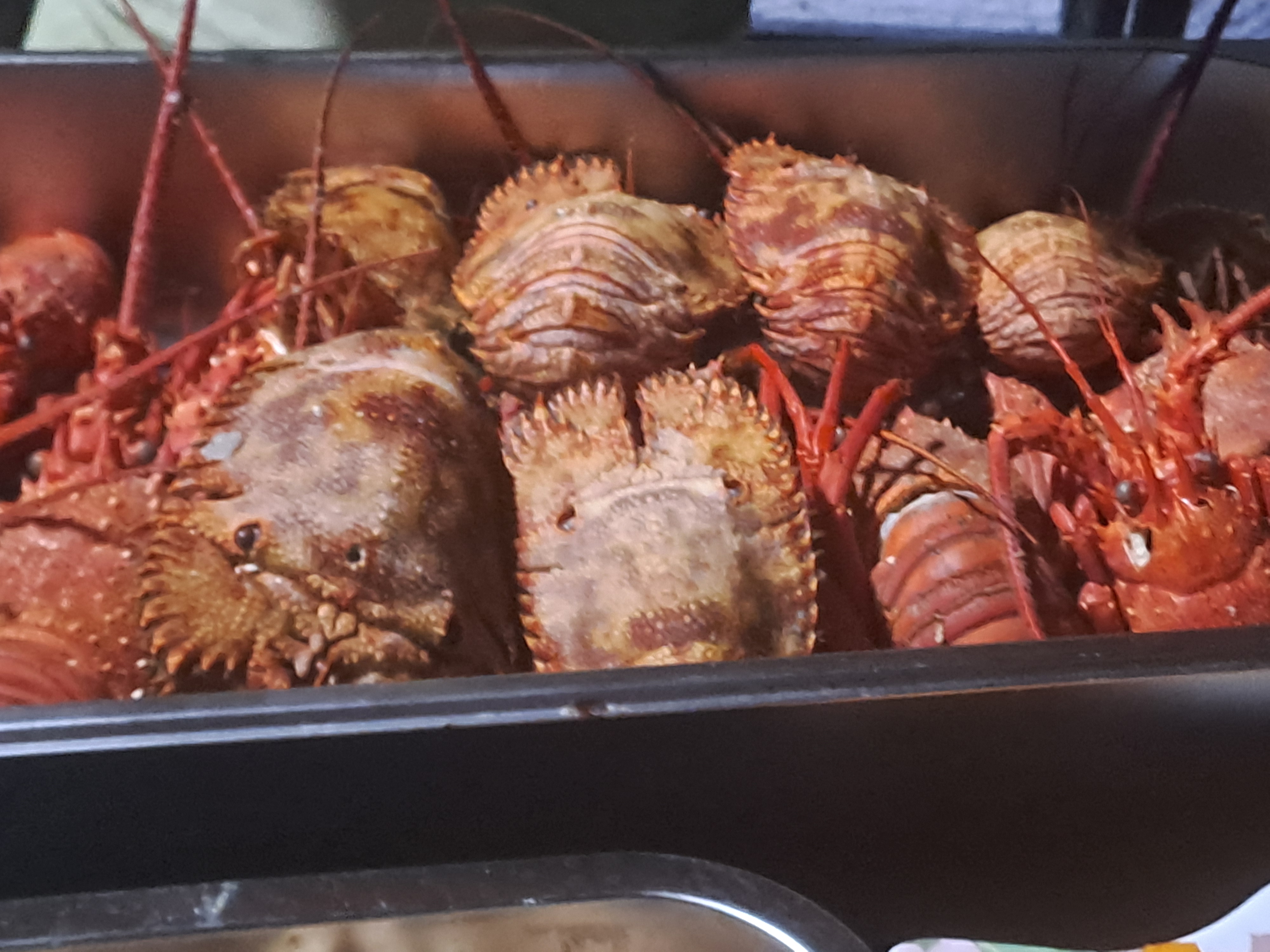

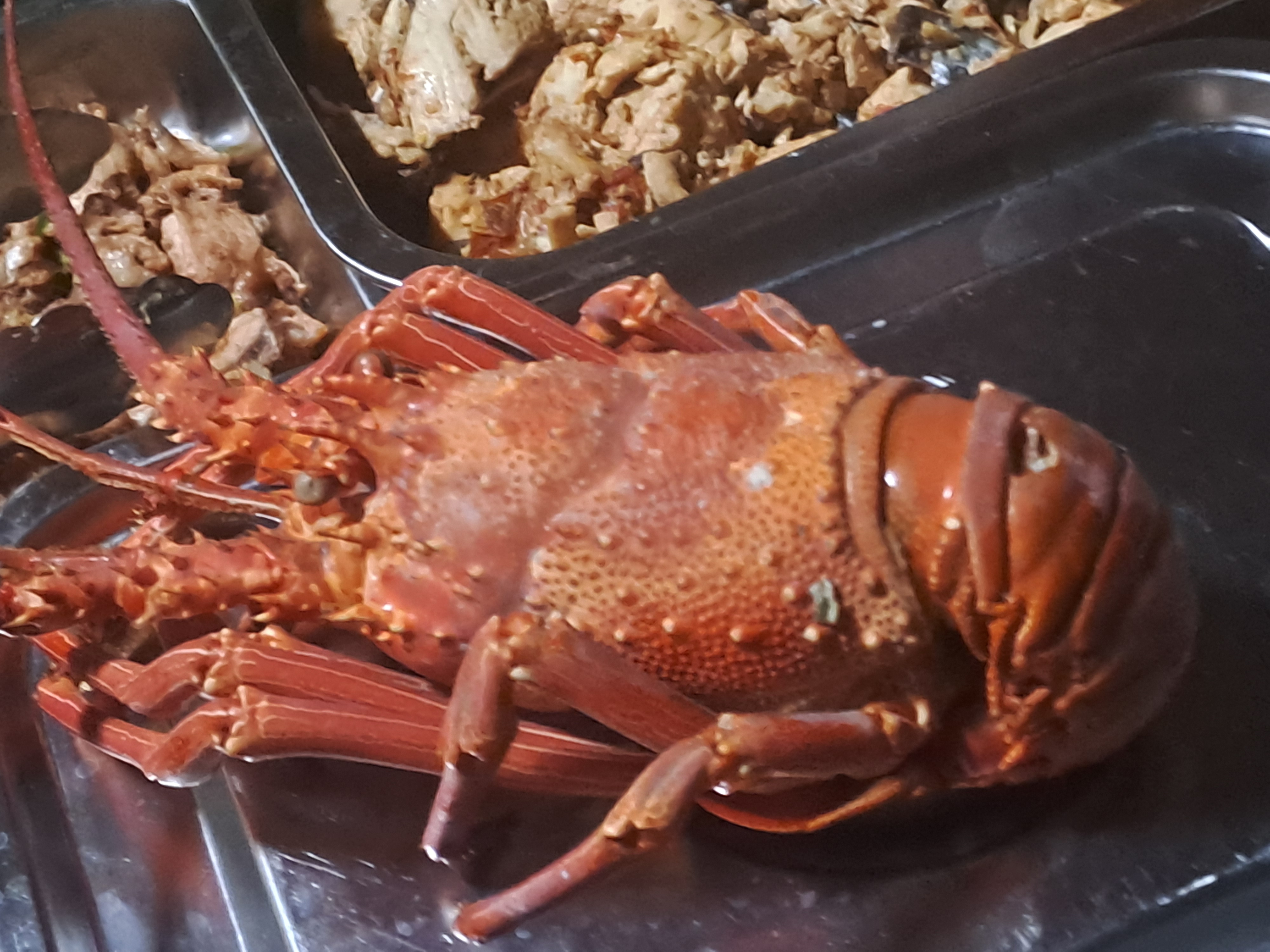
Back to our accommodation and a check on my leg. Our doctor wasn’t happy as there was no reduction in swelling so I would need to see a doctor in Cairns.
Next morning was another trip by Boat in the dark, relying on torch light and beach markers to avoid the reefs. A drive back to the straights and a send off from the market as we left for the other island and the airport with a miniscule check-in.


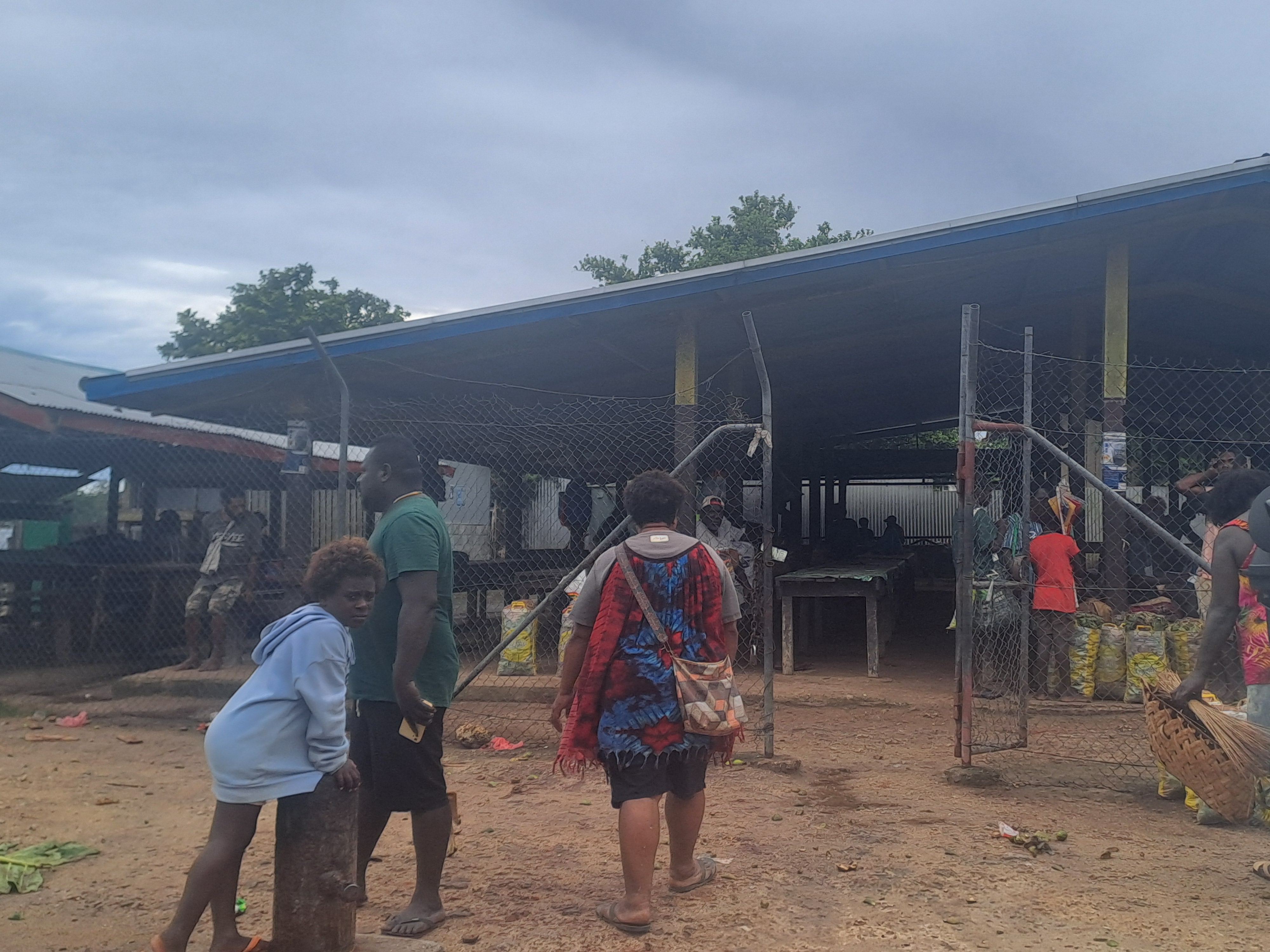
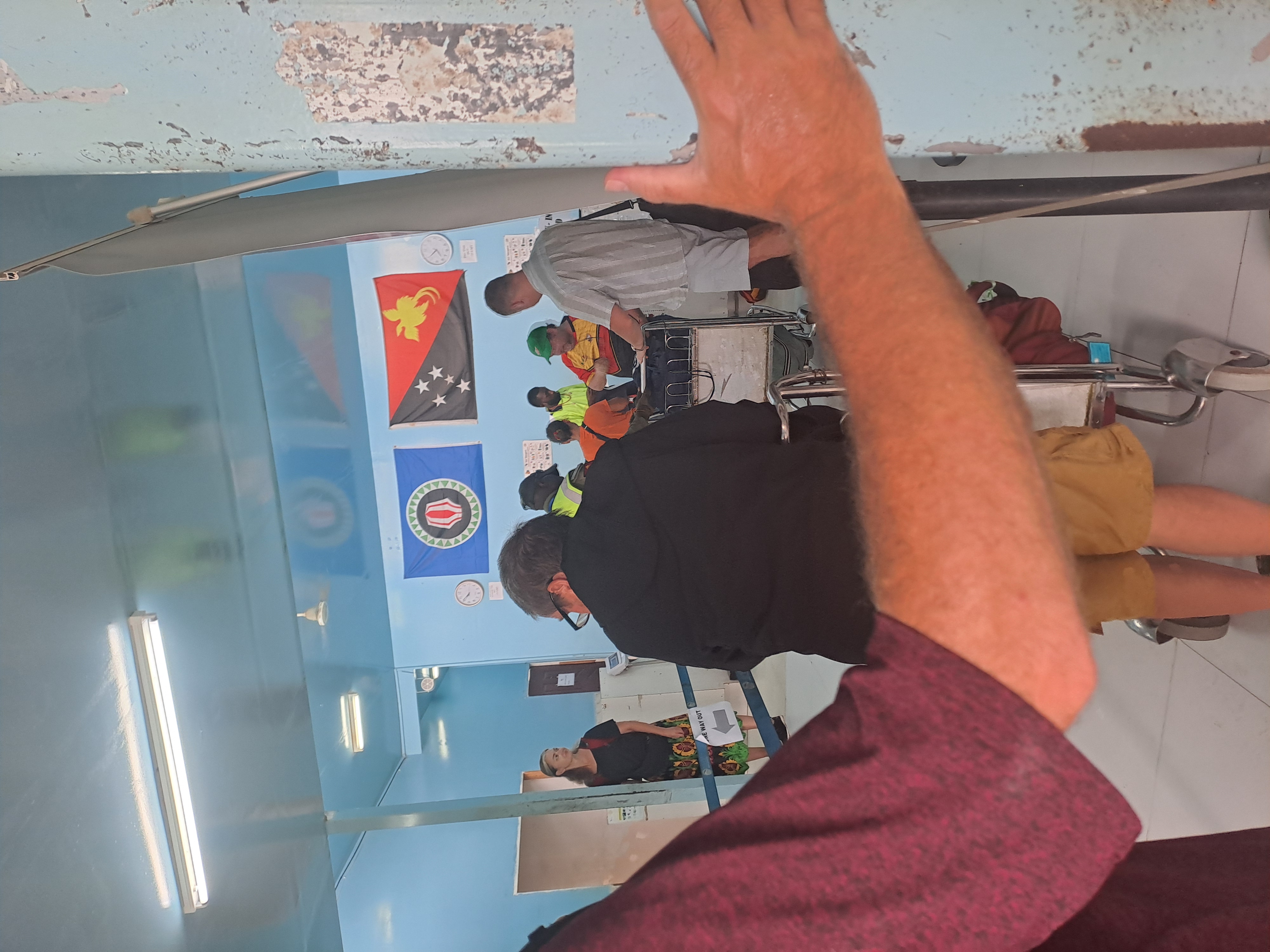

By the time we got to Port Moresby we were the last flight out. I had to do a quick taxi dash to pick up our main bags from the hotel, with an interesting chat with the driver. 17% of the world’s languages are in Papa New Guinea. He explained that a village a couple of kilometres away may speak a completely different language. Most people have there own language, a bit of Tok pidgin or English and a bit of another language.
Back at the airport we did a quick bit of rearrangement in our bags, changed our excess currency, yes we had far too much, and headed off to Cairns.